







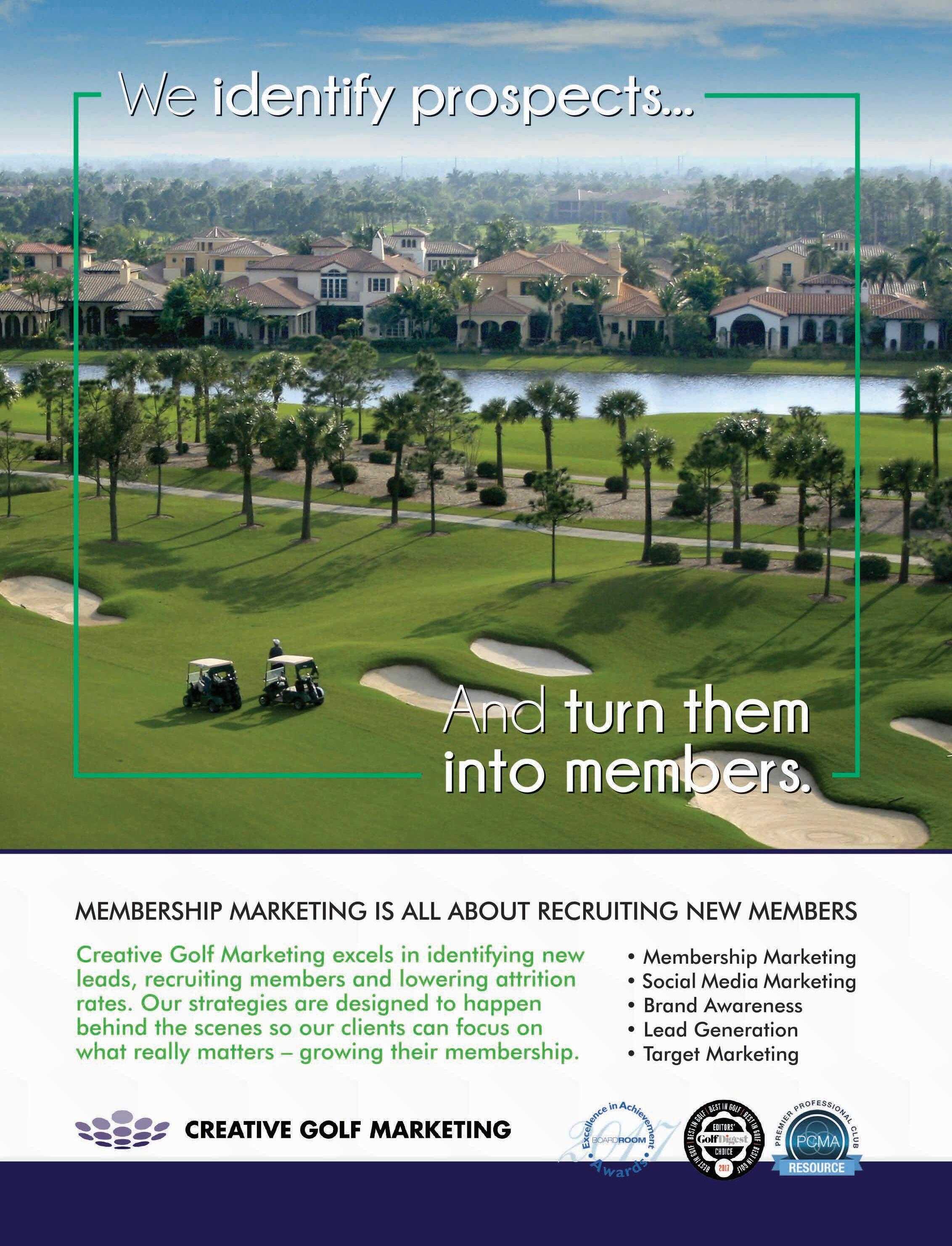

Dave White is the editor of BoardRoom magazine If you have comments on this article or suggestions for other topics, please send Dave an email to: dave@boardroommag com











Dave White is the editor of BoardRoom magazine If you have comments on this article or suggestions for other topics, please send Dave an email to: dave@boardroommag com
As 2018 fades into history it gives us the opportunity to look at the ‘State of the Industry’ of the private club industry and one of the most interesting changes today focuses on education.
Education is one factor that helps the private club industry whether it’s board of directors’ on-line education offered by BoardRoom‘s sister group, BoardRoom Institute, board retreats facilitated by industry gurus, club staff education through the Club Management Association of America, or a re-aligned educational program that’s the baby of the PGA of America.
The PGA’s realigned Education and Certification Plan, to be rolled out at the end of the year, is highlighted through BoardRoom’s cover story package this issue The big change? The PGA’s focus on three career paths.
It’s a big deal for PGA Professionals who want to focus on different career paths, so they can seek specialization in Golf Operations, which remains consistent with the traditional path PGA Professionals have taken in the past, Executive Management and Teaching and Coaching.
“The new program brings our education program more in line with other professions,” explained Jane Broderick, PGA Master Professional and Director of Golf, PGA National Resort and Spa, in Palm Beach Gardens, Florida.
“Doctors, lawyers, accountants and other professions get to ‘specialize’ early on in their education and training Not every doctor first becomes a general practitioner and then specializes. By creating the three areas of focus, we are allowing our Professionals to gain in-depth knowledge in the area of the business that interests them most
“I feel the change is very progressive and provides a very clear road map for those entering the profession.” For sure, it opens up the profession to a much broader base.
Mike Leemhuis, president of Ocean Reef Club, Key Largo, Florida and the PGA’s National Employment Committee Chair is of the opinion “that more PGA Professionals becoming club executives will give impetus for others to participate in the PGA’s program ”
Yes, it will be interesting to watch the impact of this new program in the days ahead.
BOARDROOM MAGAZINE TO PGA MEMBERS
As a side note, BoardRoom magazine, now entering its 23rd year of publication is expanding its horizons with the PGA of America.
“The PGA of America is providing Boardroom magazine, the number one publication for private clubs, to all 29,000 PGA Members,” said Paul Levy, the PGA’s outgoing President announced recently.
“We’re pleased to hear that announcement from the PGA,” remarked BoardRoom’s publisher and CEO, John Fornaro “This expands our reach ”
We’re also featuring stories about Paul Levy, as his time as the PGA’s President, and Suzy Whaley, the incoming, and first female President of the PGA
Today more than 200 private clubs sit at the pinnacle as BoardRoom Distinguished Clubs … the finest grouping of private clubs exceptional clubs based on their extraordinary delivery of a first-class Member Experience to each and every one of their members.
Now BoardRoom is proud to announce a partnership with Newstation com, meaning Newstation com will produce a video for each Distinguished Club to announce club achievements and news.
“Professional short-form video is a must because your members are all mobile,” explained John Fornaro, BoardRoom’s publisher and CEO. “Video connects with all generations, tells a story and improves engagement. We’re proud to work with Newstation.com. They make video easy and affordable for club ”
Corey Saban, one of the Newstation principals, is a regular contributor to BoardRoom explaining different ways and ideas of how video presentations can help your private club.
This issue also features introductions to 2017’s final four top presidents: John Lyngaas, Chair, Grey Oaks Country Club, Naples, FL; Mark Sabin, president, Mission Viejo Country Club, Mission Viejo, CA; Judith Stant, president, Collier’s Reserve Country Club, Naples, FL; Joseph J. Thomas, president, Belle Haven Country Club, Alexandria, Virginia, and of course this sets the stage of the selection and announcement of BoardRoom’s Top 2018 Private Club Presidents from around the world, in our January/February 2019 issue. We’ll have detailed information about our Distinguished Club President and other presidents selected for their outstanding efforts with their private clubs B R

Publisher/CEO
J
B
S
Rick Coyne
Henry DeLozier
John G Fornaro
Bonnie J Knutson
Joe Abely
Matthew D Anderson
Heather Arias de Cordoba
Chris Boettcher
Bill Boothe
Peter Cafaro
Lisa Carroll
Dr Ronald F Cichy
Rita B Craig
Michael Crandal, CNG
Rob DeMore


Dave Doherty Dave Duval
Steve Graves
Angela Hartmann
Larry Hirsh
David W Lacey
Rick Ladendorf
Michael G Leemhuis
Ross Liggett
Steve Mona Mitch Marron
Peter Nanula Macdonald Niven
Mike Phelps
Ted Robinson
Rosie Slocum
Robyn Stowell
Michelle Tanzer
Dean Wochaski
Gordon Welch
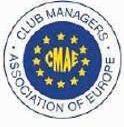
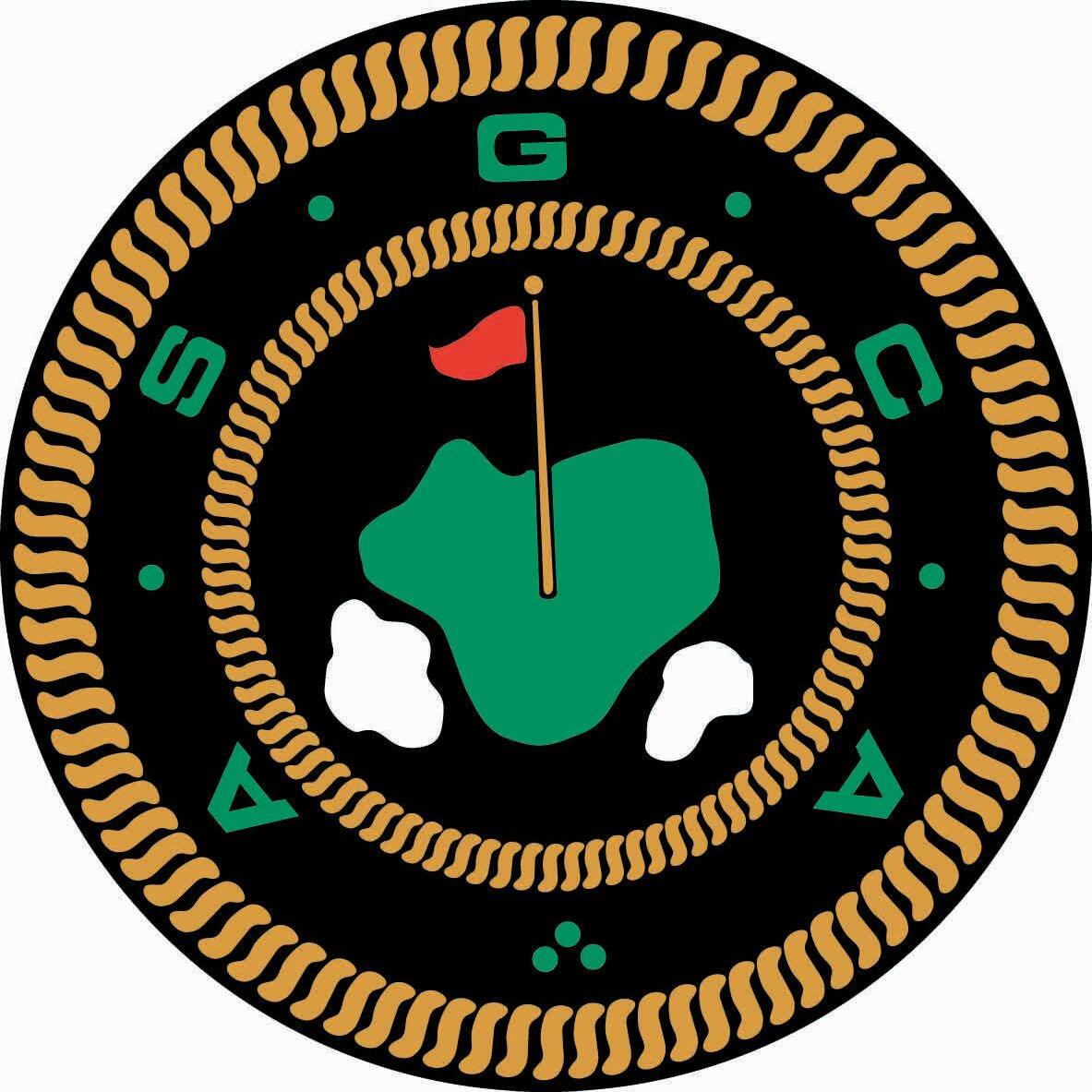

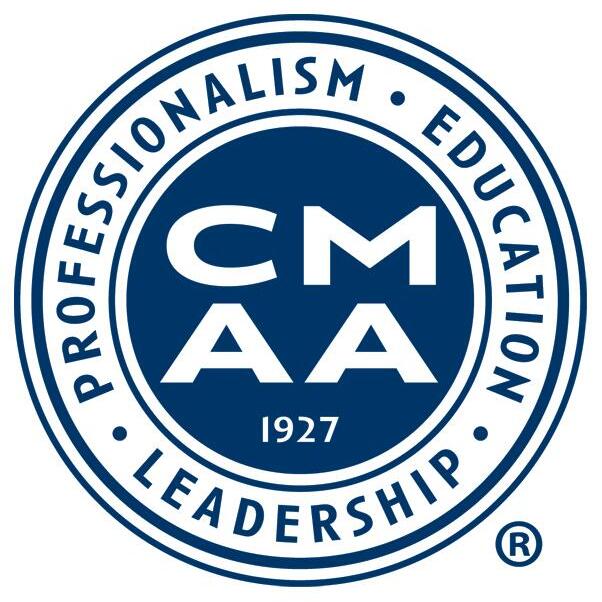
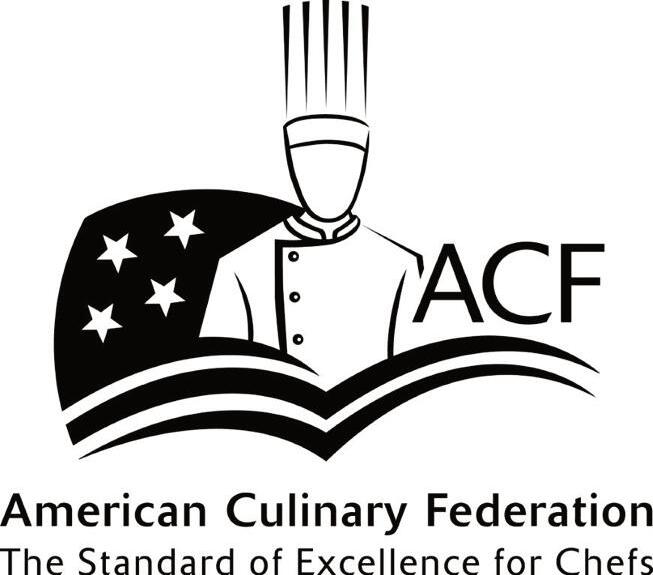




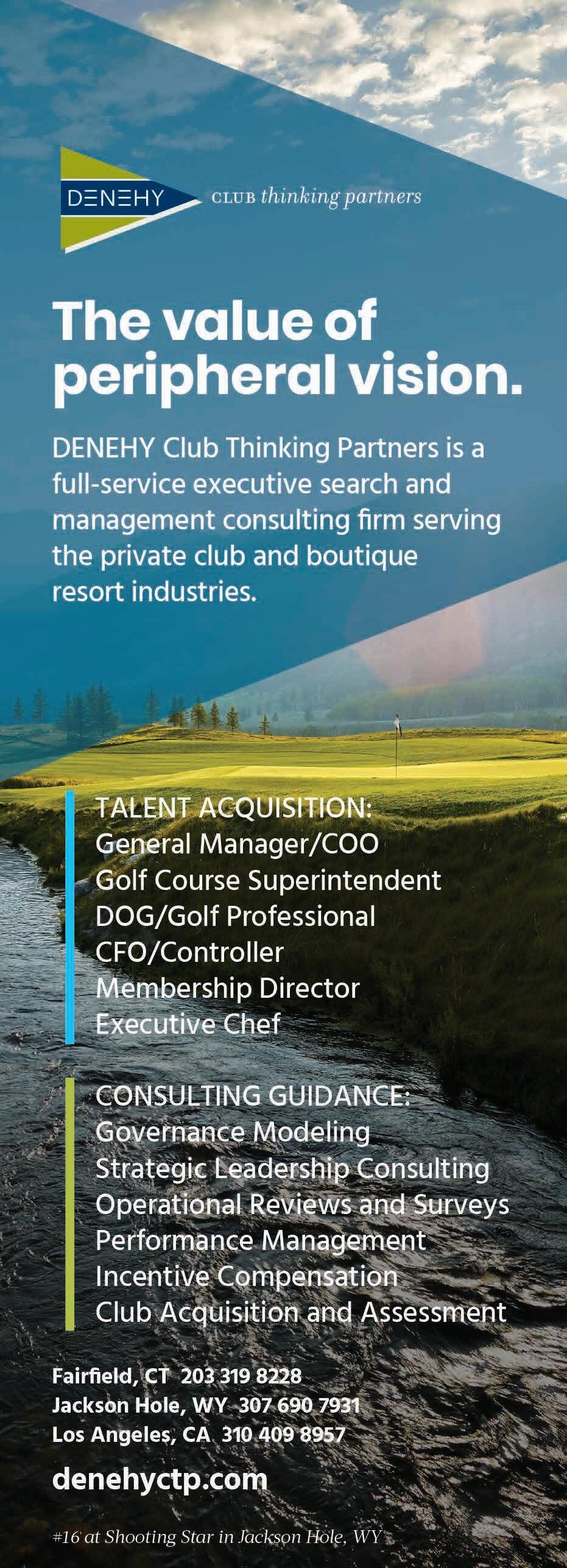

PUBLISHER’S PERSPECTIVE | 10
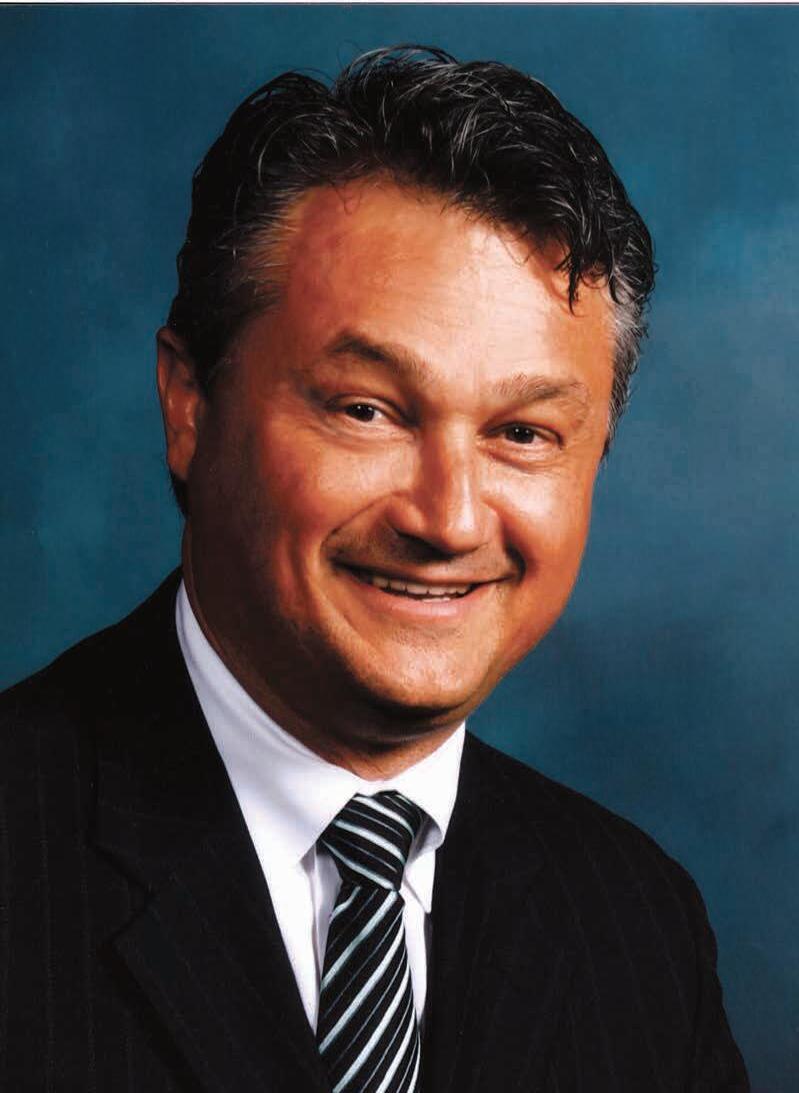
BY JOHN G. FORNARO
Private clubs run into difficult times because of a dwindling memberships, mismanagement and boards of directors that are either neglecting their fiduciary duties or they’re out of control. If boards of directors, board members, management and members don’t notice the warning signs, a healthy private club can quickly enter a death spiral.

BY BILL SCHWARTZ
Catering software and food and beverage management software are both highly specialized tools. Given the complexity of each, it is unlikely any all-in-one software package can perform both specialties well. Therefore, many use catering systems to help automate this key aspect of their business.
MEMBERSHIP MUSINGS | 52

BY BONNIE J. KNUTSON
They live by the AAAs and I don’t mean the American Automobile Association, the Agriculture Adjustment Act, or Authentication, Authorization, and Accounting. No. Not even close. In this case, they is Generation Z and the AAA they live by is Apple, Amazon, and Alphabet. Just when you think your getting a handle on Millennials, here comes the next generation of members and employees.
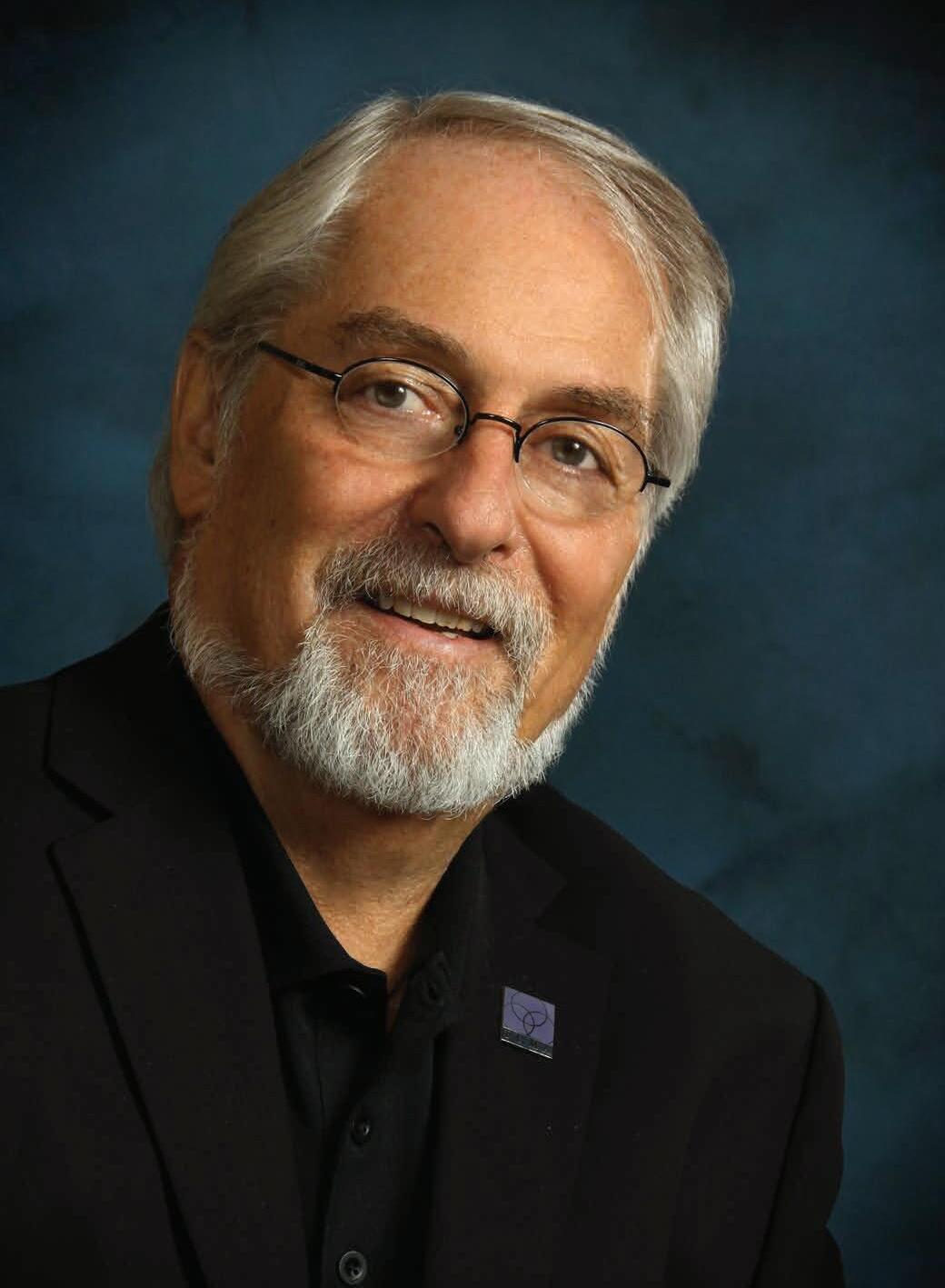
BY RICK COYNE
Many years ago, I attended a seminar for about 200 indoor tennis club operators, hosted by the USPTA and facilitated by Dr. Clay Hamner, an economics professor from Duke University. Challenged by limited court usage during off-peak hours, Dr. Hamner asked this question. How many of you in this room would sell me every hour of your unused courts for $20 an hour?

BYKURT KUEBLER
Certainly, most organizations, not just private clubs, have opportunities with alignment, continuity and such, but I believe clubs tend to exacerbate the issue simply by the way they are structured. With always well-meaning intentions they try to bring too many people into the decisionmaking or club direction process and throw it off alignment.
LEADERSHIP MOMENTUM| 70

BY ROBERT SERECI
During my son’s senior high school year, he provided me with my “Cats in the Cradle” moment when he announced his intention of majoring in hospitality management. My gut reaction was to talk him out of it. His mind was set. So, what advise does a father give to his son who wants to follow in his footsteps as a club manager.
PLIGHTS AND INSIGHTS | 14

BY NANCY M. LEVENBURG
People need to eat and nearly all private clubs have a dining room, as well as a dining minimum. So, if club dining is a membership “requirement,” why does the food and beverage (F&B) operation typically generate low –or no – profit (since it’s not unusual for the F&B area to generate zero profit)? And, is there anything that can be done about it?
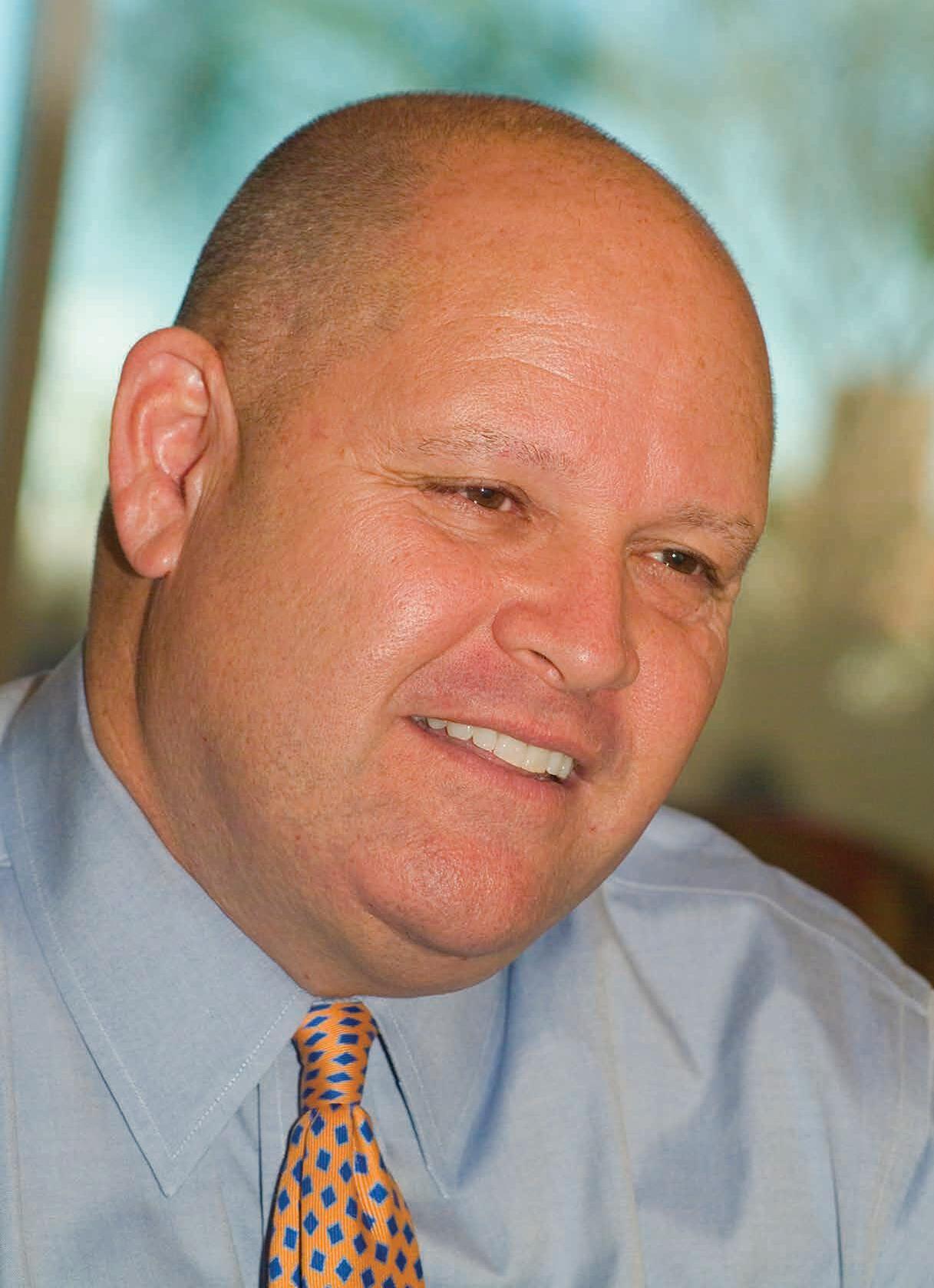
BYHENRY DELOZIER
It’s that time of year when forecasters are looking deep into their crystal balls and trying to make sense of reams of data in anticipation of yet another round of predictions. For private clubs it makes sense to look outside the boardrooms and beyond the fairways to envision what’s next. Taking a macro perspective, we can then try to extrapolate on a more micro level to focus on clubs and their boards.
CLUB FACTS & FIGURES | 74

BY PHIL NEWMAN
It’s a great feeling when you spend an hour explaining a foreign concept to someone which ends with them reciting back your own philosophy “So what I’m hearing is – keep the amenities fresh, keep your people happy and listen to the members’ needs – that will drive the top line?” Yes, I answered, that is how you run your club like a business in 2018.

Michael Crandal, CNG

Peter Cafaro
Bill Boothe
Macdonald Nivens
Gregg Patterson
Robyn Stowell
Rosie Slocum


EXECUTIVE COMMITTEE.
Another Year Has Passed : Where Are We Now? By Gordon Welch
GCSAA Expanded Horizons in 2018 By Angela
Hartmann
Top Private Club Presidents By Heather Arias de Cordoba
EXECUTIVE COMMITTEE
Young Golfers Making an Impact By Steve Mona
By Rob Harris
Meghan Thibault
Alpine
Fiddler’s Elbow Country
Chris Boettcher
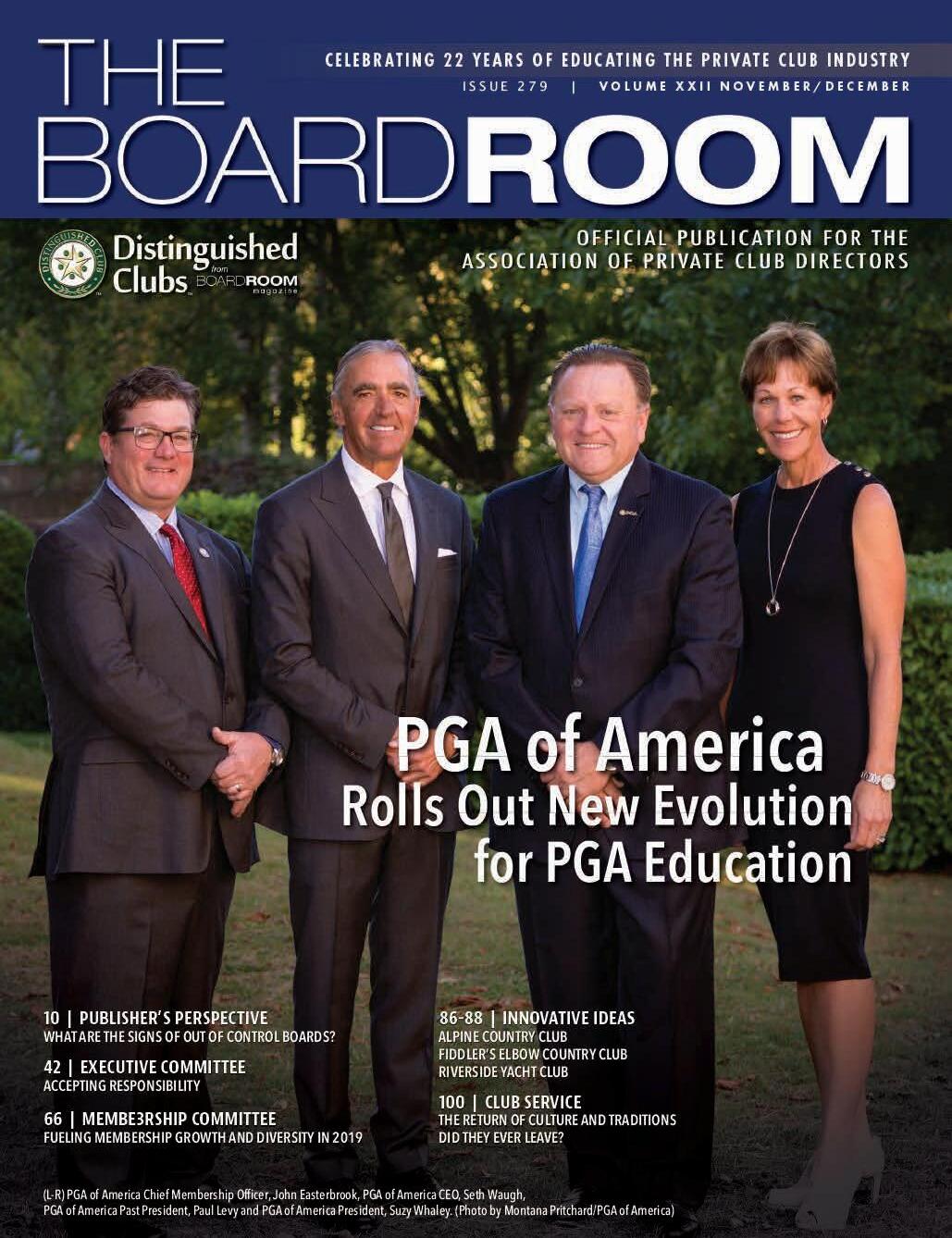
28
Things First Year Board Members Should Know By Joe Abely and Dave Duval
EXECUTIVE COMMITTEE. .
30 Are Country Clubs Fading Away? By Larry Hirsh
EXECUTIVE COMMITTEE.
32 When Is It Time to Go? By David W. Lacey
EXECUTIVE COMMITTEE. .
34 Our Club Has Challenges Contemplating Options for Help By Peter Nanula
EXECUTIVE COMMITTEE. .
Accepting Responsibility By Dr. Ronald F. Cichy and Matthew D. Anderson
36
EXECUTIVE COMMITTEE.
38 Do You Have A (Human) Capital Plan? By Whitney Reid Pennell
EXECUTIVE COMMITTEE.
41 The Rise and Fall of Self By Rob DeMore
HR COMMITTEE.
42 Onboarding Process for Success By Rita B. Craig
HR COMMITTEE. .
44
Winning the Battle for Hospitality Talent By Mitch Marron
HOUSE COMMITTEE. .
Minding the Gap By Lisa Carroll
MEMBERSHIP COMMITTEE. . .
. .
MEMBERSHIP
Fueling Membership Growth and Diversity In 2019 By Steve Graves
68 Starting from Scratch PART III The Job Description By Ted Robinson
62
. 64 FOMO Guide By Ross Liggett
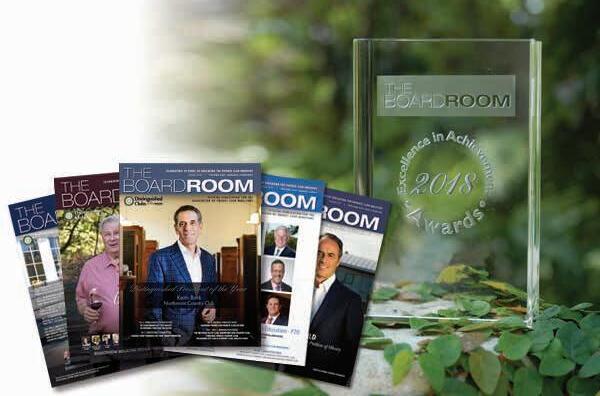
76 Delving Deeper into the Details of Merger By Michelle Tanzer WELLNESS COMMITTEE.
82 Consumer Interest Trending Upward Wellness, a Purpose-Driven Strategy Whose Time Has Come By Rick Ladendorf
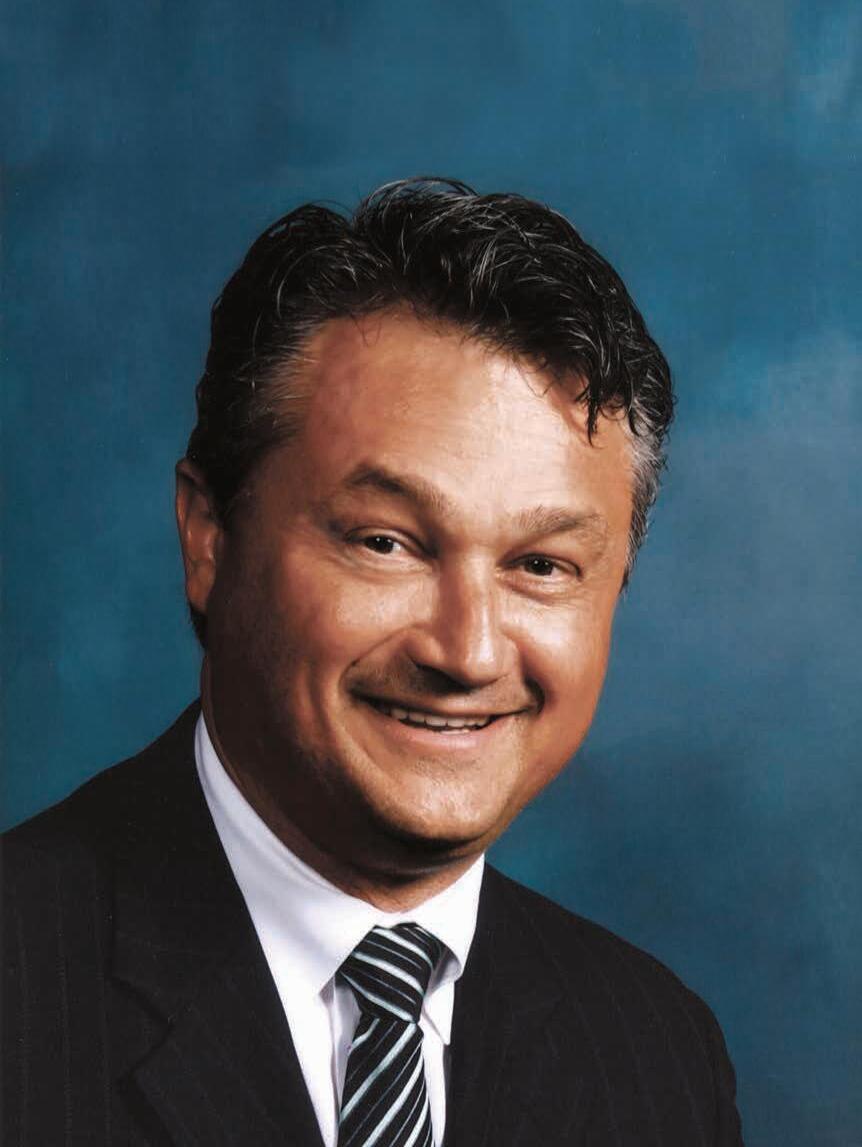
John G Fornaro is the publisher/CEO of BoardRoom magazine, co-founder/CEO of Distinguished Clubs and the CEO of the Association of Private Club Directors (APCD) If you have comments on this article or suggestions for other topics, please contact John Fornaro at (949) 376-8889 or via email: johnf@apcd com
Many private clubs encounter ‘stormy days’ for myriad reasons, one of which can be a board of directors that’s out of control?
Private clubs run into difficult times because of a dwindling memberships, mismanagement and boards of directors that are either neglecting their fiduciary duties or they’re out of control, creating a dysfunctional organization
Often clubs are healthy operating entities, but if boards of directors, board members, management and members don’t notice the warning signs, a healthy private club can quickly enter a death spiral
“It’s a fascinating topic,” declared Gregg Patterson, who before his retirement a couple of years ago, managed the Beach Club of Santa Monica, CA for 34 years.
A p r i v a t e c
“And the effects of a poor governance are many,” said DeLozier. “One is chaotic planning that moves in fits and starts driven by the loudest voice in the room This chaos causes a lack of confidence in the board form the members’ perspective and distrust and disrespects for the board members themselves.”
But it would be unusual for this to be malicious or even intentional.
wo r k s s m o o t h l y t o p r o m o t e t h e c l u b ’ s m i s s i o n a n d s t r a t e g i c p l a n fo r t h e b ett e r m e n t
“Lots of managers lose their jobs because they either don’t see the signals of an out of control board, or, if they see the signals, they don’t know how to ‘nudge’ the board back on the straight and narrow.”
So, why do some board of directors become unruly out of control? What are the symptoms of ‘out of control’, and how do clubs cope with a dysfunctional operation?
“The canary-in-the-coalmine is usually seen with boards that lack the corporate governance discipline to work in a business-like manner,” explained Henry DeLozier, a principal with Global Golf Advisors, a consulting firm working within the private club industry.
“There’s too many chiefs pursuing their own priorities or expectations Conflicts of interest, violations of boardroom confidentiality and the lack of understanding of proper corporate governance are typical early-warning signs.
“It seems to spring from this sense among the board members that they know better than the average member about what is best for the club A sort of bunker mentality takes hold, and members are viewed as misinformed or led only by a vocal minority,” Vain explained.
“As Luke said, In Cool Hand Luke, ‘What we have here is a failure to communicate ’ Boards often get it wrong, in that they think they are going to tell members what to do, such as adopt a certain policy or approve a major capital project when in fact they need to start a dialogue based on facts The leadership has the obligation to inform and educate the membership about the issues and merits of their proposal, but it is essential that they seek feedback,” Vain proposed.
So, in more detail, what do our contributors view as symptoms?


Rick Coyne is Managing Partner, Club Mark Partners, LLC
He can be reached via email at rcoyne@clubmark com
Many years ago, when first starting out in the private club industry, I attended a seminar for about 200 indoor tennis club operators, hosted by the USPTA and facilitated by Dr. Clay Hamner, an economics professor from Duke University.
Challenged by limited court usage during off-peak hours, Dr. Hamner asked this question. How many of you in this room would sell me every hour of your unused courts for $20 an hour?
Given that the average hourly court time was well into the $80 per hour range, the question raised a few chuckles but no raised hands He then asked a few more questions, asking about the number of indoor courts they had, hours of operation and current occupancy percentages
Interestingly, Clay had already understood that nearly 40 percent of indoor courts went unsold, that each club, on average, had 10 indoor courts and that most clubs were open 18 hours a day.
So, on the screen, he wrote out, 10 courts x 16 hours a day x 364 days a year x 40 percent vacancy x $20. After doing the math, he turned to the audience, paused for a moment and then asked, “Would anyone here like to have a check for $465,920 00 that’s pure profit?” The room went silent, but it was very clear that the audience was clearly moved by what they had just heard Anyone can sell prime time Make every opportunity count Even non-prime time!
Dr Hamner stressed that unless clubs are diligent with market intelligence, opportunities are lost To fill those nonused hours required identifying a target market that would use them, determining how many people lived within a reasonable drive time, and developing a plan that would cause them to react and buy-in to the opportunity.
My fascination with and consistent use of data and due diligence is likely the simple by-product of this hour-long session. Dr. Hamner’s lesson has resonated with me ever since.
Today, I watch clubs that embrace market demographics to understand pricing strategies, categories of membership that match their market, and reposition themselves to create a brand most appropriate to their very specific and unique marketplace
An East Coast club brought in nearly 200 members by recognizing the need to develop a more robust junior membership opportunity because the due diligence clearly pointed out a need in the club’s market place.
We see clubs following internal metrics like historical trending and member usage to spot potential issues such as
at-risk members, operational concerns and even strategic opportunities
Age metrics are incredibly important in ascertaining likely attrition on the basis of age, but also comparing market age demographics to the club’s age demographics If they are out of synch, the obvious question is why? Is there something missing from your offering preventing a specific age demographic from finding relevance at your club?
What is the age and family demographic of the incoming members over the past five years? The importance of this metric is the specific drill down into who your club is attracting as new members. Is there a specific gap in who you are attracting by age, by family make-up? If so, there is likely an opportunity Clubs must also periodically take the pulse of the members With an annual turnover average of approximately eight percent, every three years nearly 25 percent of a club’s members are turning over Of critical importance in developing member surveys is the ability to gauge responses by gender, by family make-up, and even by the distance of residence from the club.
Finally, while each piece of market intelligence can drive opportunity, when you learn to cross-tabulate data it gets even more fun and rewarding. Let’s say for example you know that 85 percent of new members over the past five years are under age 50 with children living at home. Cross-tabbing under 50s, women and families with children with their survey responses to the survey, will provide you an absolutely clear and strategic direction to expand this target audience
Top producing clubs today have recognized the necessity of dynamic market intelligence to drive operational excellence, strategic and capital planning and pinpoint accuracy in creating the most appropriate brand driving the broadest cross section of members to regard your club as the place to be.
Brand relevance is the value that members and potential members look for and are willing to pay more for. It is also a source of pride to members, creating ambassadors that are continuously referring new members and inviting guests.
As Carly Fiorina once said, “The goal is to transform data into information, and information into insight ” I’d simply add, that insights create opportunities Make every opportunity count! B R

L
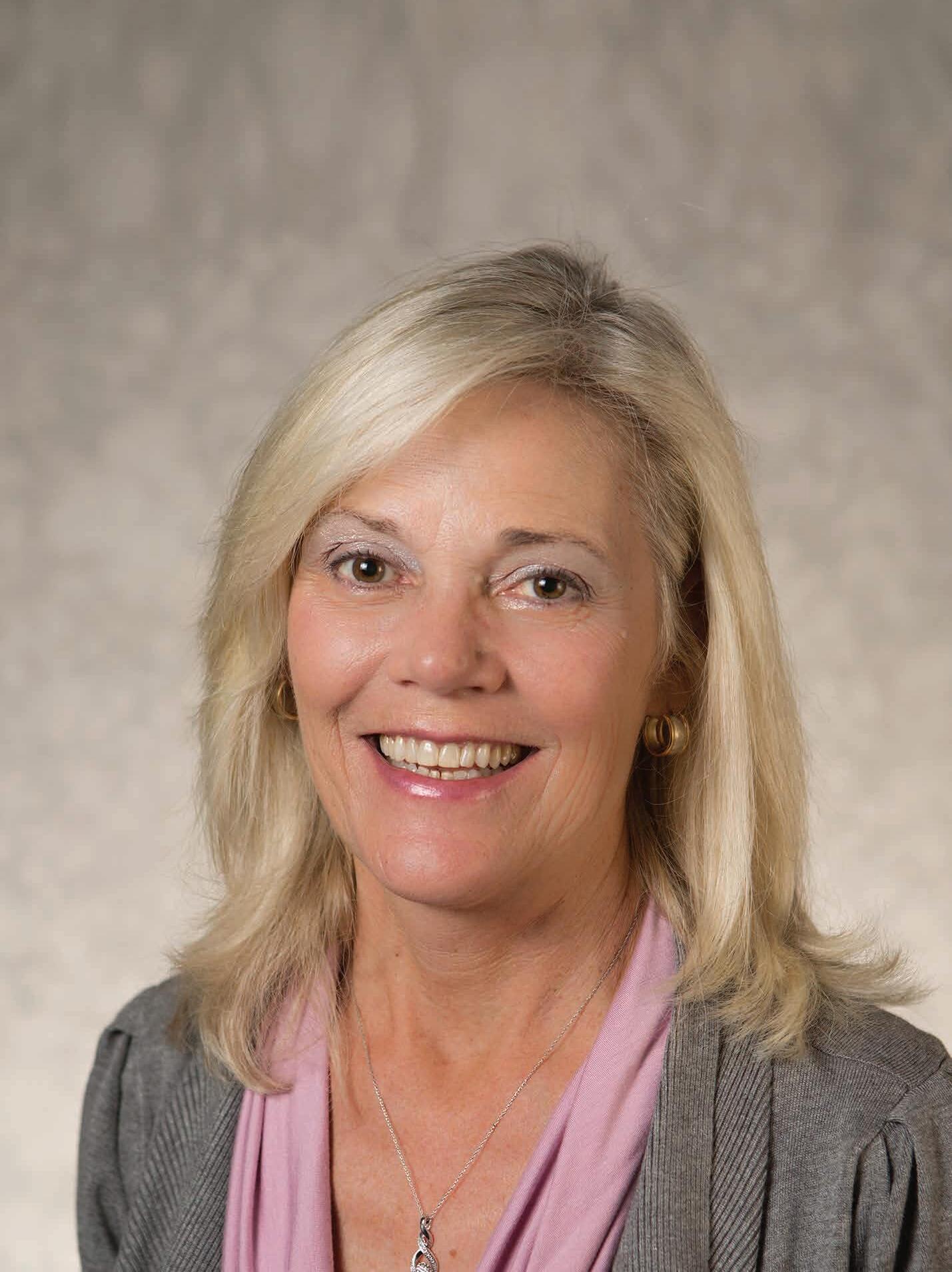
Nancy Levenburg, Ph D , is a Professor in the Seidman College of Business at Grand Valley State University in Grand Rapids, Michigan She has published numerous articles in business and professional journals, and has assisted over 200 organizations She is the president of Edgewater Consulting, and is a member of Spring Lake Country Club in Spring Lake, Michigan. For more information, contact her at: levenbun@gvsu edu or (616) 331-7475
People need to eat and nearly all private clubs have a dining room, as well as a dining minimum
So, if club dining is a membership “requirement,” why does the food and beverage (F&B) operation typically generate low – or no – profit (since it’s not unusual for the F&B area to generate zero profit)? And, is there anything that can be done about it?
An old adage in the restaurant industry is that there are two keys to producing profits: (1) seating as many people as possible, and (2) serving higherpriced meals…and ideally, both at the same time. The unfortunate thing, however, is that many country clubs do not turn their tables in the dining room. One club, in fact, even advertises on its website, “Rather than turning tables, we invite you to take your time.”
We all like to have a relaxing meal; nobody likes feeling rushed at dinnertime And we all know what it’s like when you’re out dining in a restaurant with friends, you’ve finished your meal and paid your bill and everything has been cleared from the table. The server returns to ask if you’d like some coffee, or if there’s anything else they can get for you (no).
And that’s the end of your dinnertime with friends and the “relationship” you had with your ever-so-friendly-when-ordering server, Brittany In fact, you and your friends may have just disappeared from Brittany’s radar screen.
A n o t h e r w a y t o g o a b o u t i n c r e a s i n g
F & B p r o f i t s i s t o i n c r e a s e p r i c e s . Ty p i -
c a l l y, f o o d c o s t s r u n a b o u t o n e - t h i r d o
The message is clear it’s time for you to move on so the restaurant can turn the table and seat the next party. Others are waiting. T
Two factors you’ll want to consider in setting prices are the margin and the volume. Even though it’s termed the “Cadillac” of salmon, if the Copper River Salmon on your menu is priced at $35 for a 5ounce filet, the equivalent to $112 per pound (or $7 per ounce)!
It may be a high price, but will the volume (demand) in the dining room be sufficient to generate desired sales and profits?
O n e w a y yo u c a n a s s e s s t h e c o
t o g e t h e r.
s a d j o u r n t o a c o m f o r t a b l e n e a r by l o u n g e o r b a r a r e a w h e r e t h e y a r e n ’ t o c c u py i n g p r i m e - t i m e d i n i n g s p a c e T h e s e r ve r c a n s e t t h e m u p w i t h a t a b l e a n d w a l k t h e m ove r.
And inviting them to sample a new dessert or after-dinner drink in the lounge or bar area may be just the incentive they need to make a move. Or, is there something going on in another part of the clubhouse which they could join in?
Of course, it’s important to remember that there should be a mix across all cells – not everything on your menu will be high margin and high volume – so be sure your matrix accurately reflects appetizer, soup, salad, sandwich, entrees and dessert offerings (see graph) B R
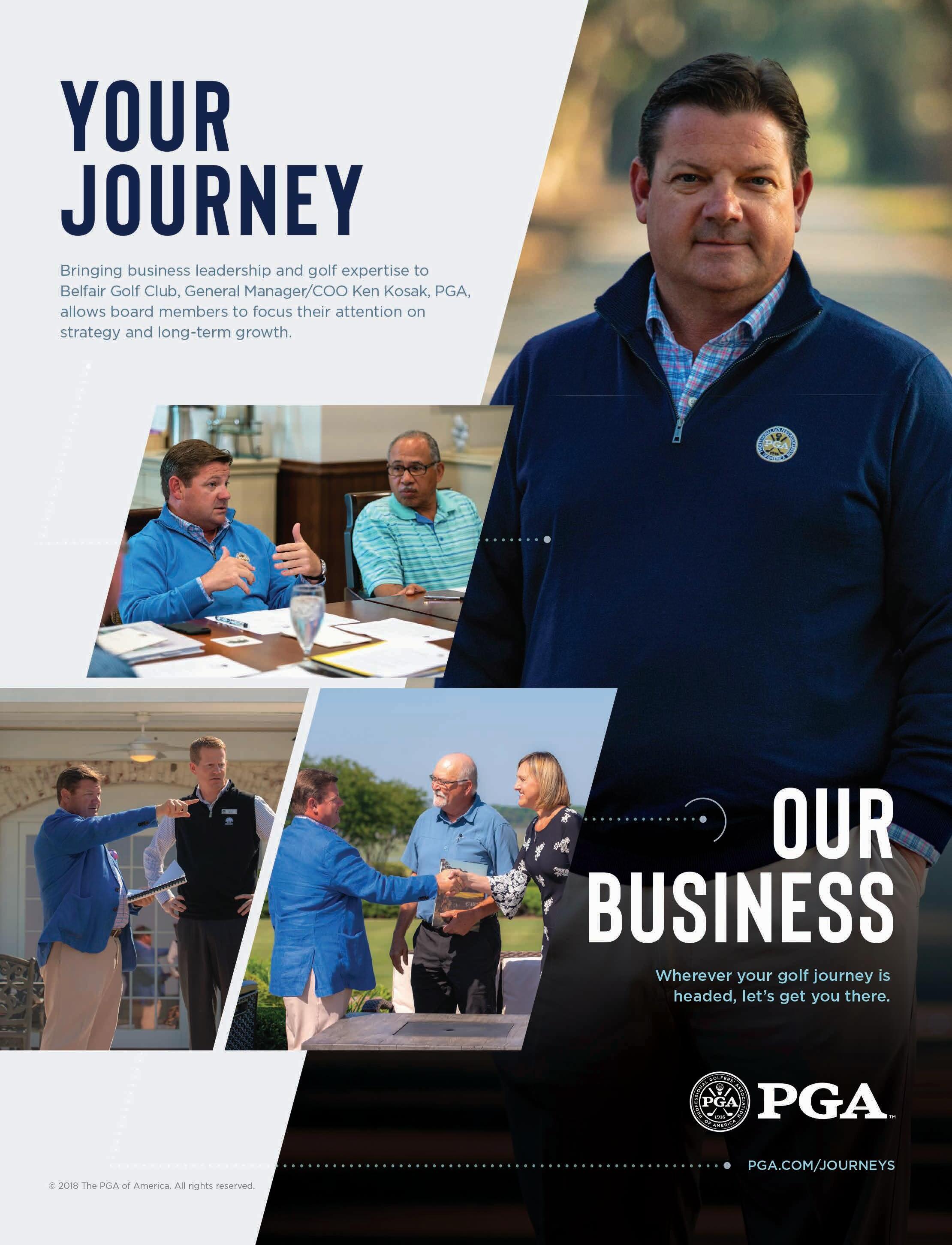
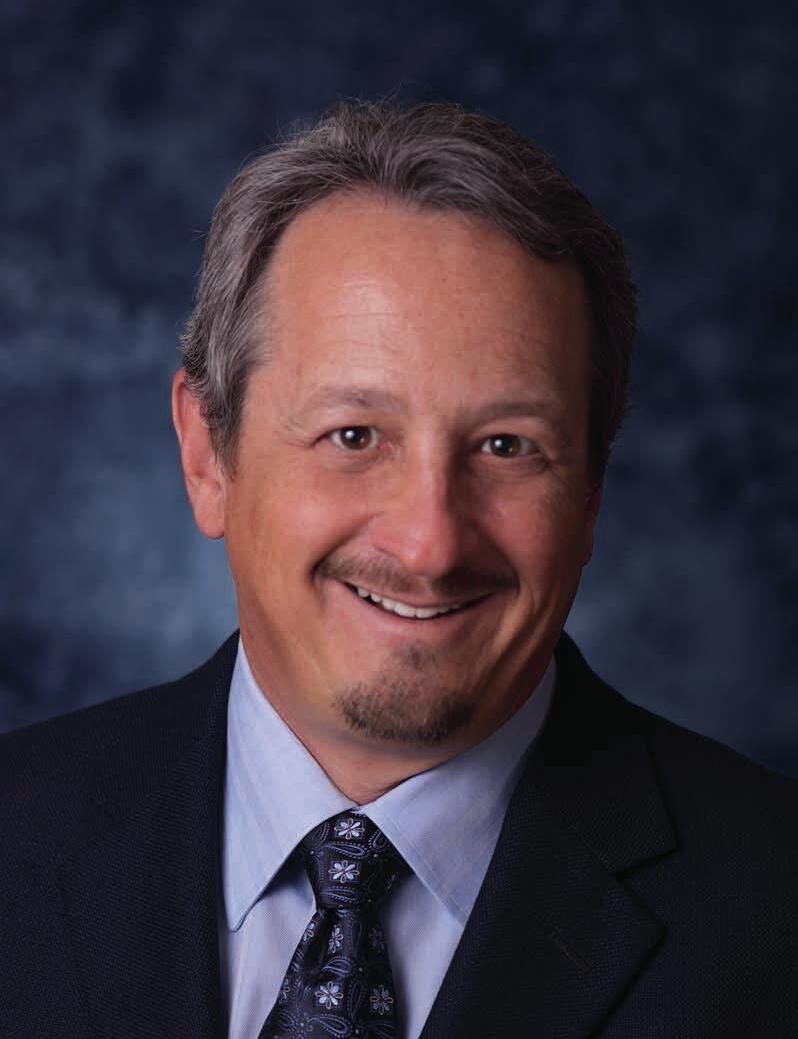
Bill Schwartz is the founder and CEO of System Concepts, Inc (SCI) Based in Scottsdale Arizona, SCI specializes in F&B procurement and inventory management, and is the developer of the FOOD-TRAK Food and Beverage Management System Bill can be reached at 480-951-8011 or bills@foodtrak com
Catering software and food and beverage management software are both highly specialized tools Given the complexity of each, it is unlikely any all-in-one software package can perform both specialties well.
Our club clients rely heavily on catering for supplemental F&B revenue, and in many cases catering revenue is a significant percentage of total F&B revenue. Therefore, many use catering systems to help automate this key aspect of their business.
Providing catered events require a number of specialized components, the first of which is actually making the sale. In order to help with this, catering software must maintain an event database.
Catering sales staff must create each event largely from scratch, and include all aspects of the event such as food, beverages, tables, flatware, glassware, floral requirements, decorations, entertainment, dance flooring, and of course staffing With the exception of the food and beverage aspect, these things fall outside the scope of the F&B system, thus requiring the specialized event database.
Sales staff must associate costs with all of these components, and while most of them are straightforward and easy to quote, the food aspect is anything but. The catering system must be able to provide these costs and allow for the markup required by the club.
Unfortunately, catering systems have limited recipe building and group menu costing capability, and do not have the procurement or inventory functionality required by clubs and associated with F&B systems Therefore they require that data and capability be supplied by other means.
In many cases, the catering sales staff will bring the F&B requirements for each event to the chef, who must cost out the recipes and provide that information This can be an extremely time consuming and inaccurate endeavor and in the case of clubs with significant catering activity requires a great deal of the chef’s time
Once the event is sold and the time comes to execute, the chef must examine the banquet event order (BEO), break down the recipes and determine the purchase quantities of
all the ingredients. Again, a significant time requirement. Finally, if the customer believes the cost to be too high, in many cases the catering salesperson will find a way to discount it while providing the same menu, thereby reducing the margin. The alternative is to go back to the chef for pricing on a modified menu, delaying the process for the customer and requiring more time of the chef
e e l i m i n a t e d e n t i r e l y.
Costs can be uploaded to the catering system and associated with every item typically sold in catered events For example, if hors d’oeuvres, appetizers, entrees and desserts are set up as individual components in a catering system, they can each be tied to a recipe in the F&B system and automatically receive updated costs on a daily basis if needed
T h e s a l e s s t a f f c a n t h e n s i m
In addition to the transfer of current costs to catering systems, the other type of integration is for the catering system to send the BEOs over to the F&B system With this capability, the F&B system can prepare a list of raw ingredients to be purchased for the event, provide a production schedule for the culinary team and track the usage of the items required It can also report on the profitability of the event at current costs.
We have found that integrating the F&B system with the catering system results in multiple benefits. The labor savings afforded the chef not only occur in costing out the event, but also in breaking down the recipe to determine purchasing requirements.
These tasks alone have been reported to save as much as 30 percent of the chef’s time, which can be spent managing

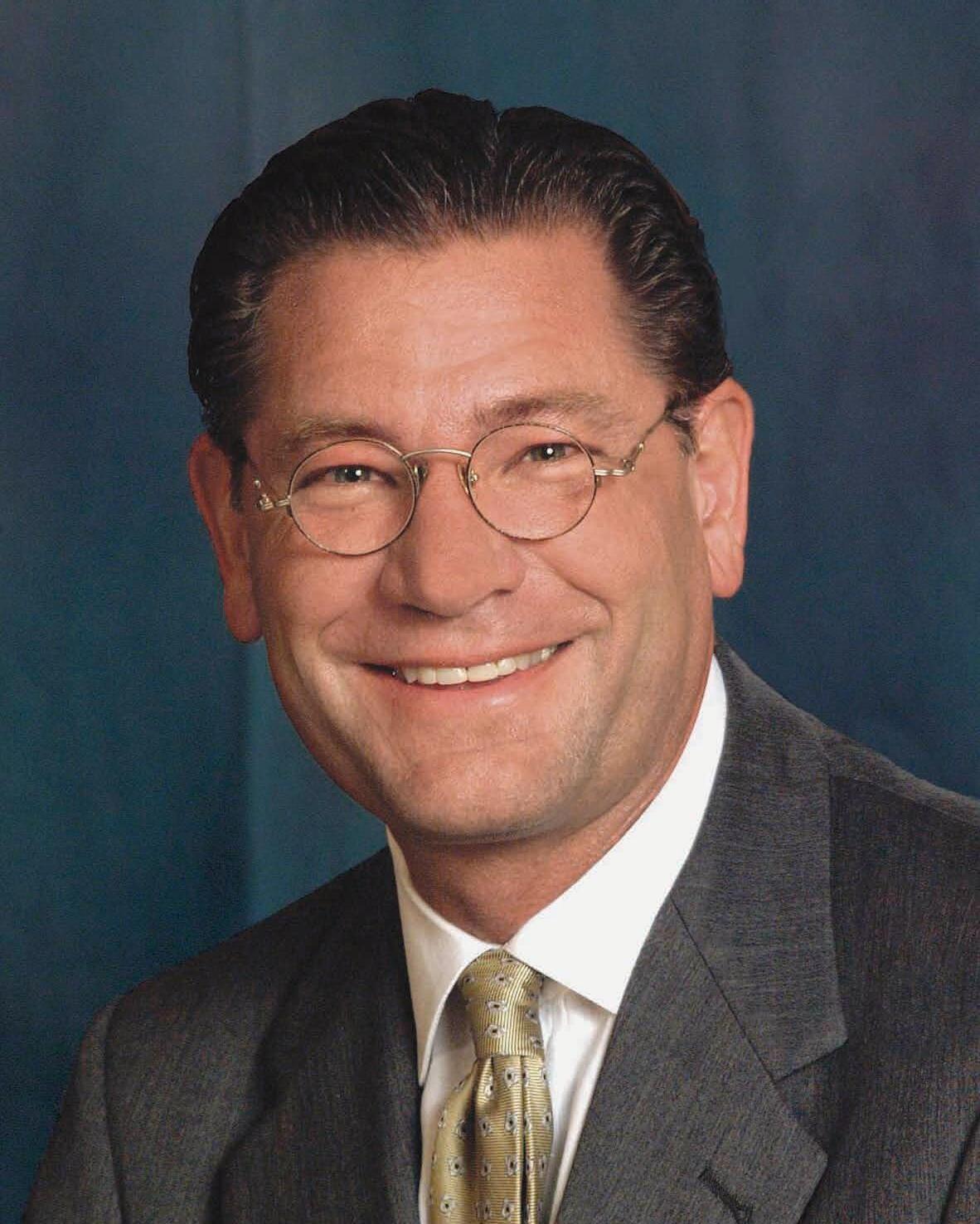
Kurt D Kuebler, CCM is a partner with Kopplin Kuebler & Wallace, specializing in the national executive recruitment and club governance issues, strategic planning and other club consulting requests Kurt’s office is in Jupiter, FL He can be may be reached at (407) 864-6798, or through the website at www kk&w com
For far too many clubs, their governance and organizational structure is out of alignment and dysfunctional! Yes, I actually said that Several times over the past few years.
Definition - Alignment: an arrangement in a straight line, or in correct or appropriate relative positions
Certainly, most organizations, not just private clubs, have opportunities with alignment, continuity and such, but I believe clubs tend to exacerbate the issue simply by the way they are structured. With always well-meaning intentions they try to bring too many people into the decision-making or club direction process and throw it off alignment.
Additionally, because of the nature of the establishment of club –bringing people together for social, recreational and intellectual common purposes – ‘better’ business practices of aligning goals and objectives to metrics and results are not often part of the process or a necessary ‘how to improve our club operation, relevance and viability for the future’ discussion.
It’s nobody’s fault It’s simply the nature of the beast we call clubs! So, what do I mean when I say there is the lack of alignment in clubs?
While a majority of clubs now seem to have, at a minimum, a stated purpose (mission) and guiding values, those that do rarely seem to look at them And, those that do not have one usually don’t recognize their importance
Countless books that have evaluated top performing companies (“Good to Great”, “The Advantage”, etc.) have highlighted the well-defined corporate “culture” that drives consistent quality shareholder value Clubs are often not thought of as the businesses they are –the average club has nearly an $8 million operating budget!
Therefore, the need to be effectively governed and aligned with clear purpose and core principles, as well as annualized goals and objectives, like many (hopefully most) of the business people who make up a majority of a club’s board members!
So…back to the alignment comment.
Because a majority of clubs aren’t focused on mission or guiding values, don’t have a strategic plan or even an annual board retreat to clarify the priorities for the coming year, the social aspects of why people joined the club take over and alignment with anything except the loudest or most vociferous voice sets the agenda.
Often that agenda is not associated with what the club really needs to prioritize. Then, without the board and general manager setting the agenda for the entire organization, well intentioned volunteers on committees or simply members of influence (or ‘loud’ voices) within the club take over
Committee members are appointed, NOT elected, but often take control and, as noted, “hijack” the board’s responsibilities and set their own, often self-serving agendas
To get the overall alignment in sync, it should start with a clearly defined multi-year, rolling strategic plan that associates strategy, tactics, mission and values into common objectives. Measurable ones That drives the foundation of the annual business plan and budget, which has measurable and reasonable objectives.
Within that strategic and annual business plan buildout is a board’s and executive management team’s determination of what committees should work on during the coming year. Too often boards abdicate their fundamental responsibility (again, THEY are the ones who are elected, not committees!) to set direction and objectives for the club each year, as well as evaluating how the club is doing against those objectives.
Isn’t that a typical business practice that clubs should follow as well?
And, if I haven’t made the point yet, boards are elected and have a fiduciary responsibility while committees are appointed and don’t have that same level of requirement
In dysfunctional clubs the alignment of the board election cycle doesn’t often coincide with the annual business plan/budget development With that being the case in most clubs, well-intentioned volunteers (either board or committee members) begin the annual process of “moving my agenda forward”, usually without any relationship to the business plan, strategic plan, or what has been a major priority a year earlier.
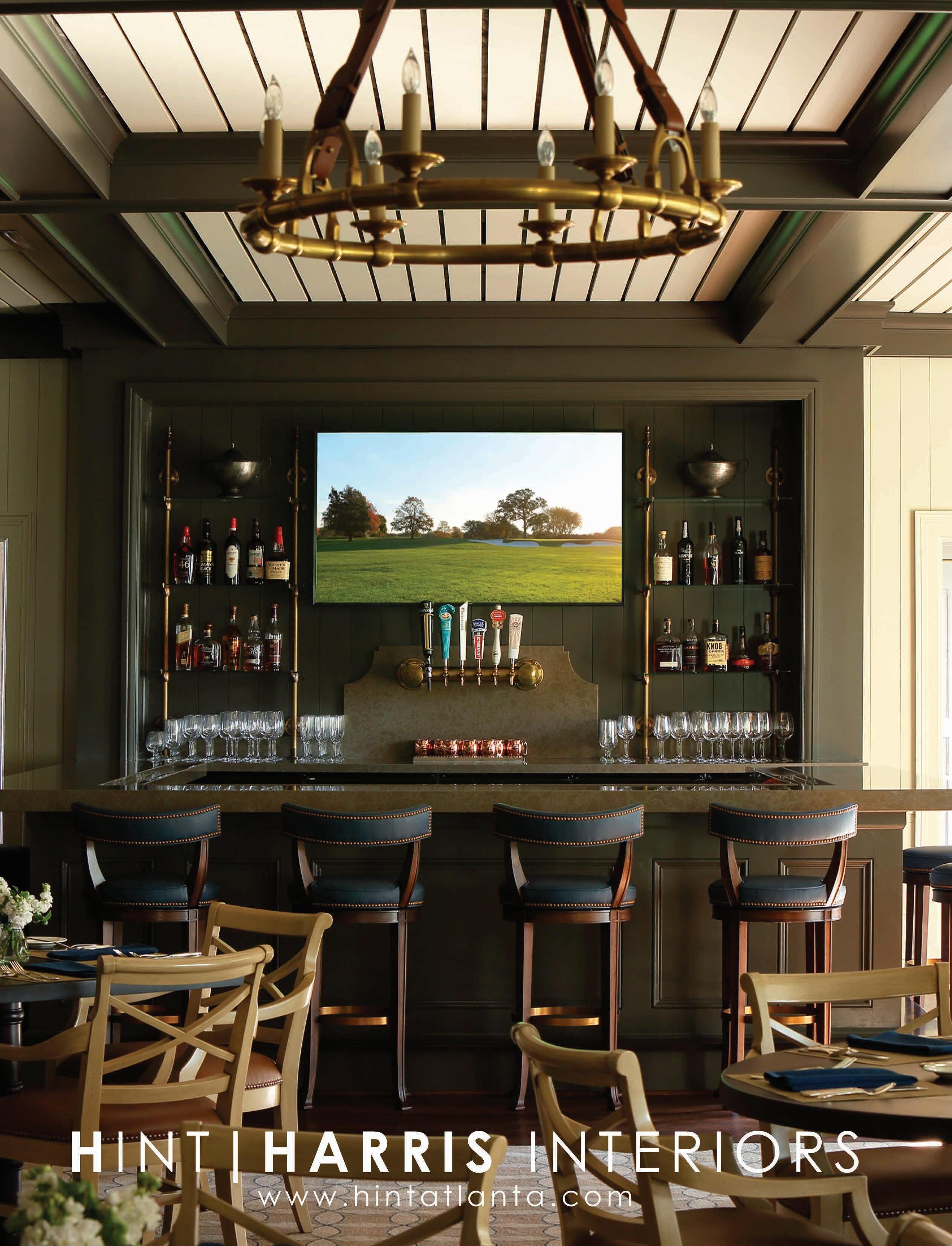

“ We have lost some bright, young professionals who just wanted to focus on coaching … and who decided to pursue teaching a career outside of a PGA membership Now, those same individuals are going to want to be PGA Professionals,” expressed Ed Ibarguen.
And that’s the objective of the PGA of America’s new Education and Certification Plan to be rolled out by the end of the year
“The PGA of America as an education-centered association seeks to provide its members with the necessary tools and skillset to best help them succeed within their chosen career path,” explained Ibarguen, chair of the National Education Committee and PGA Director of Golf at Duke University Golf Club in Durham, North Carolina.
“In studying the employment opportunities that are likely over the next several decades, we identified three primary career paths that will be available to Class ‘A’ PGA members: a) the traditional golf operations, b) the facility leadership position of executive management, and c) the key ‘growth of the game’ career path of teaching and coaching.”
Historically, the association has provided education and training as a golf operation’s ‘Jack-ofall-trades ’ Members then have been able to seek specialization within its certification system to fit their career path interest.
“This evolution in lifelong education for PGA Professionals is designed to focus on career paths that align with the future and current needs of employers, as well as provide our Membership opportunities for long-term personal employment growth,” said PGA President Paul Levy
“It is about equipping our members and associates with the skills needed to advance their careers through three critical paths in Golf Operations, Executive Management, and Teaching and Coaching. We cannot emphasize enough the importance that each track will have on our members and their ability to enhance their career goals,” added Levy
“We will provide lifelong learning education and training within a member’s chosen specific career path. This program is designed for member-career success, in that these Professionals will be able to provide exceptional value and expertise to their employers,” added Ibarguen
Indeed, the revised PGA Education and Certification Plan has been developed around the concept of lifelong learning, giving PGA Professionals access to the three distinct career paths The Golf Operations track will remain consistent with the traditional path PGA Professionals have taken in the past. It remains the core of the PGA’s programming.
Adding specific tracks in Executive Management and Teaching and Coaching, as well as providing extensive education, will expand career opportunities, as Levy noted.
The PGA’s program offers education and training for both public golf and the private club business models. Career-centric certifications for PGA members include relevant competencies, such as leadership, strategic management, hospitality, technology, sales and marketing, operations and event management.
“The new learning strategy will be followed up with new certification criteria. While the certification requirements will maintain their historical education components, the program will also add specific work experience requirements to the PGA Certified and Master Professional designations,” outlined John Easterbrook, Jr., the PGA’s Membership Officer and 30-year member of the PGA.
“With the experience base, certifications will be easier for employers to identify with, based on their needs Meanwhile, our Professionals will clearly see the value, as compensation and retention improve. The industry benefits from golf-centric leaders – who have a passion for golf –holding more and more seats at decision-making tables and boardrooms nationwide
“Most clubs need to increase the golf membership base. So, having PGA Professionals in general manager seats can be advantageous to selling full golf memberships
“Their passion and love for the business of golf, along with their desire to grow the game, will be united with these new educational programs, to enable our nearly 29,000 PGA Professionals to interview for the best jobs in the industry,” commented Easterbrook
The biggest changes in the new strategy are two-fold.
“A PGA member will have the ability to select a specific career track at a much earlier level of our pre-member, associate training program (PGM),” said PGA Master Professional Dawes Marlatt, the PGA’s senior director of education and organizational development. “This will capture greater engagement and commitment, given their specialization, and also help our multi-generational workforce
remain relevant and competitive in an exciting and everchanging industry.”
There will also be full integration with PGA Career Services The role of the PGA’s 19 Career Consultants is twofold – to continue to promote the program to PGA Professionals and to promote the value of these designations to employers. The expanded team of 19 Career Consultants who work daily with PGA Professionals on their career advancement also help explain how it will benefit a PGA Professional’s future.
“As the consultants meet with employers, they will explain the updated curriculum, as well as the value and impact that our lifelong learning strategy can have on their facility – not only in identifying the right talent, but also in the tangible operational and financial benefits that these rigorous initiatives will help produce,” explained Marlatt. “We also see employers searching specifically for PGA members who have achieved these certifications, as it will signify the PGA’s best and brightest by career path.
“This connection will continue to enhance our talent management practices, as well as provide our industry employers with the best match possible to accommodate their business needs in this job market,” Marlatt added.
“The new program brings our education program more in line with other professions,” explained Jane Broderick, PGA Master Professional and Director of Golf, PGA National Resort and Spa, in Palm Beach Gardens, Florida.
“

“I feel the change is very progressive and provides a very clear road map for those entering the profession. We’ve seen many aspiring Professionals leave the education process and not attain PGA Membership, because they couldn’t understand how much of the course material would apply to their career goals,” Broderick said.
“For example, if someone is passionate about teaching and coaching, they were struggling as to why they needed to understand golf car fleet management. The education program provides material relevant to their specific career goals, and we expect to see a higher rate of completion because of it,” she said
“During my tenure at PGA National, we have seen many enroll and many drop out, because a portion of the course material did not resonate with them nor would it be applied in the area they intended to focus on ”

Yes, career specialization within the three tracks stands out as one of the highlights of the program, and it also opens the profession up to a broader base.
“

“I feel this will be a significant help towards recruiting future PGA Professionals. The opportunity to specialize early in your career should be an attraction for both employers and future professionals alike The enhanced certifications and Master Professional status will differentiate Professionals earning these special designations from their peers, and serve as inspirational role models for young talent,” Leemhuis added
He’s also of the opinion that more PGA Professionals becoming club executives will give impetus for others to participate in the PGA’s program.
“We continue to engage our leadership-minded Professionals to take on more responsibility, and ultimately, be more influential within the business and enterprise that they support. I believe the PGA Professional is a critical position, if not the most critical position, to drive change in the industry,” Leemhuis opined
“The number of PGA members who have achieved that level of career achievement serve as an inspiration for young PGA Professionals, as well as those considering PGA membership We see it was a way to recruit young talent to our industry but also a way to retain the young talent.”
Leemhuis is one PGA Professional who’s made his mark as an executive in the private club industry, and
he views the PGA’s program as a way to increase employment for PGA Professionals.
“Anytime you have an opportunity to expand your capability and capacity to impact the growth of the game and business of golf, it should be broadly welcomed. Couple this with the relationships our Career Consultants have made with employers, we see nothing but a bright future for PGA Professional employment,” Leemhuis added
“Meaningful certification that has experience requirements, coupled with an expanded comprehensive education plan will provide the platform for all of our Professionals to build their careers,” Easterbrook expressed
“The marketing and promotion to employers about the extensive education that is required by the PGA will educate the public on what it takes to become a PGA Professional and the ongoing benefits they will bring to their clubs or business partners ”
Those just starting their careers – PGA Associates, formerly known as PGA Apprentices – will be the first to be positively impacted by the changes
“The PGA Membership Committee recommended the change, which is more consistent in today’s world. The term ‘Apprentice’ was viewed as more of a craftsman, whereas ‘Associate’ offers a better description of today’s well-rounded young men and women,” said Easterbrook
It reflects a more collegiate-style progression through all levels of PGA Education.
All Associates start by completing Level 1 of the core Professional Golf Management (PGM) training program Once complete, Associates are eligible to select one of our three career paths in Level 2 (Golf Operations, Teaching and Coaching, and Executive Management). These experiences will continue for the remainder of their time in PGM, as they complete Level 3 and prepare for election to PGA Membership.
“We’ve agreed to terms with the University of Las Vegas College of Hospitality to develop a branded Executive Management certificate, specifically available to PGA Certified Professionals seeking an Executive Management credential,” outlined Marlatt. The PGA has also been developing course work in the Executive Management option, including leadership, strategic management, consumer behavior, diversity and inclusion, and pricing.
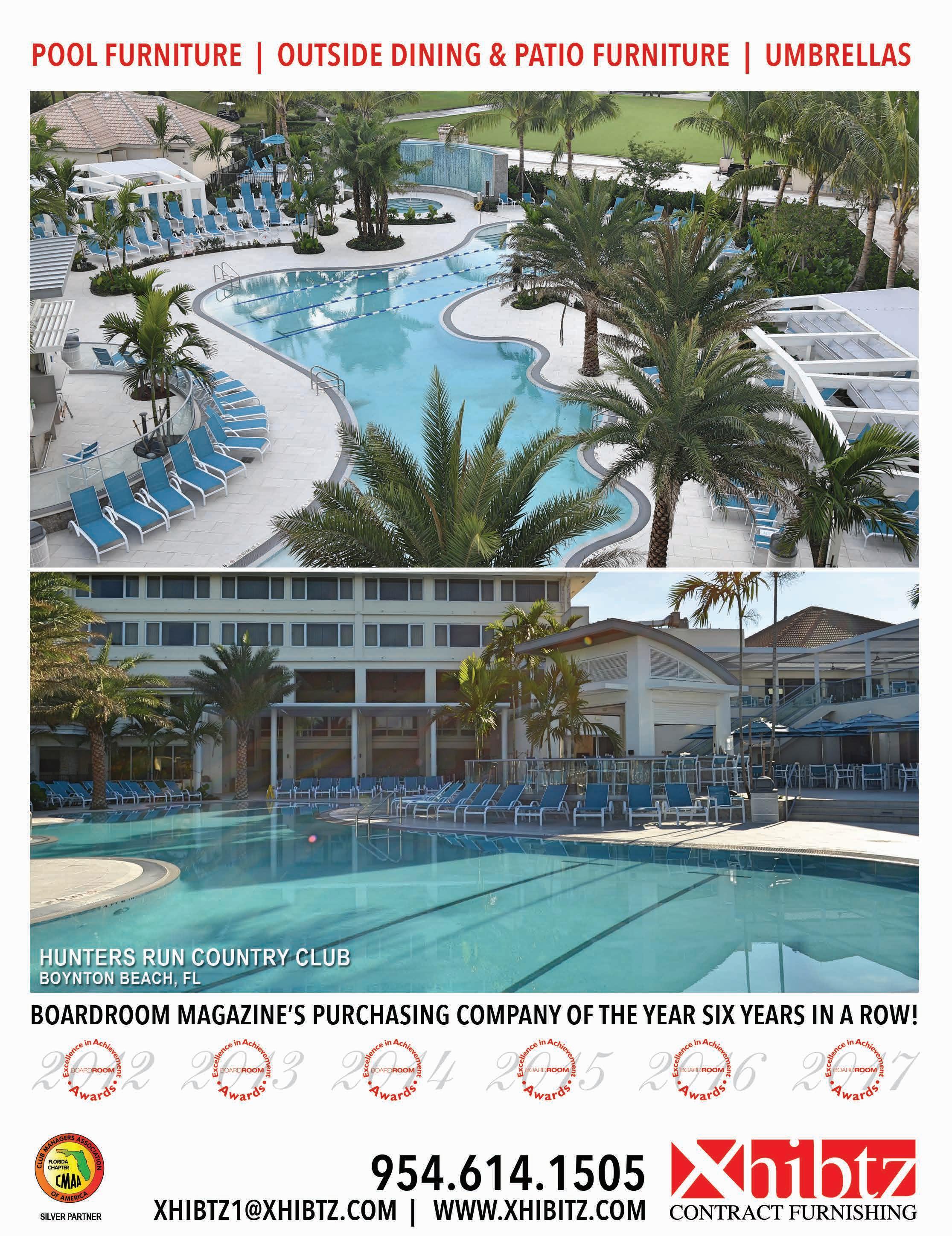


A quest for knowledge and a love of learning stand out as attributes the PGA of America’s new President brings to the association’s nearly 29,000 members across the country.
“I am driven to strive for knowledge. I love to learn Gaining insights into my profession and business, and learning from others who have succeeded is empowering,” remarked Suzy Whaley, a PGA Master Professional and the first woman elected PGA President
“I am inspired by those who continually learn, and I, too, will continue to seek out opportunities to improve my skills in the future.”
After serving the past two years as the association’s vice president, Whaley, PGA Director of Golf at Suzy Whaley Golf in Cromwell, Connecticut; and PGA Director of Instruction at the Country Club at Mirasol in Palm Beach Gardens, Florida, succeeds Paul Levy as PGA President
In 2018, she became the ninth woman to earn her PGA Master Professional certification and joins PGA Past Presidents Roger Warren, Ken Lindsay and J R Carpenter as the only PGA officers to earn their Master Professional designation
A PGA member and LPGA teaching and club professional, Whaley also played on the LPGA Tour in 1990
and 1993 She famously qualified and participated in the 2003 Greater Hartford Open, becoming the first woman since Babe Zaharias in 1945 to qualify for a PGA Tour event This happened after Whaley became the first PGA of America woman professional to win the Connecticut PGA Championship.
“For me, golf was initially all about the competition But as I entered the industry beyond my playing career, with my own business, I quickly discovered that sharing in others’ journeys in learning to play golf truly gives me joy I still like to compete, but nothing beats helping someone new have fun playing the game,” Whaley explained
Whaley takes over the PGA’s top position at a time when the association is launching a new evolution for its education program that focuses on multiple career paths, and this certainly dovetails with Whaley’s thinking
“Education is a key element in our commitment to offer our Members the highest value for their membership PGA Golf Professionals can take multiple career paths: Teaching and Coaching, Executive Management, Operations, Marketing, Retail and more Their training and passion enable them to add enormous value wherever they work,” Whaley added
“Whatever path they choose, lifelong learning, combined with an impressive career resume and leading-edge industry expertise, are the keys for PGA members to remain the recognized gold standard in the job market, as well as deliver the value employers and consumers expect from a PGA Professional ”
For those considering golf as a career, the PGA’s lifelong learning and education program allows those with a passion in Operations or Executive Management or Teaching and Coaching to specialize in these areas to achieve success
“It gives every professional the opportunity to do a deep dive in their area of choice and offer that expertise to those in a hiring position,” Whaley offered
The revised educational program and providing PGA members with the resources and tools to grow their own careers are certainly on President Whaley’s to-do list.
“Learning – joined with our members’ impressive operational expertise, as well as their personal drive and commitment to embrace cutting-edge technology that delivers innovative solutions – creates an enriched value exchange for our customers,” Whaley explained
Whaley, when asked if there are programs now available to encourage more players and diversity, said, “We believe that the game must begin to look more like the communities we serve. It is so important that all are invited and welcomed to the game We believe in the power of the invitation, and we will continue through print and digital media to invite all to play the game
“PGA Professionals are diligently working to offer programming that fits everyone ’ s needs KPMG Women’s PGA Clinics, PGA Jr League and PGA WORKS are just a few of the programs we currently run that are making great strides in gender and diversity While we are making progress, we understand that we have a long way to go Our board and our members are committed to providing a welcoming environment in golf for all,” Whaley expressed.
A graduate of the University of North Carolina, Whaley and her husband, Bill, are both PGA members. They have two daughters, Jennifer and Kelly. B R
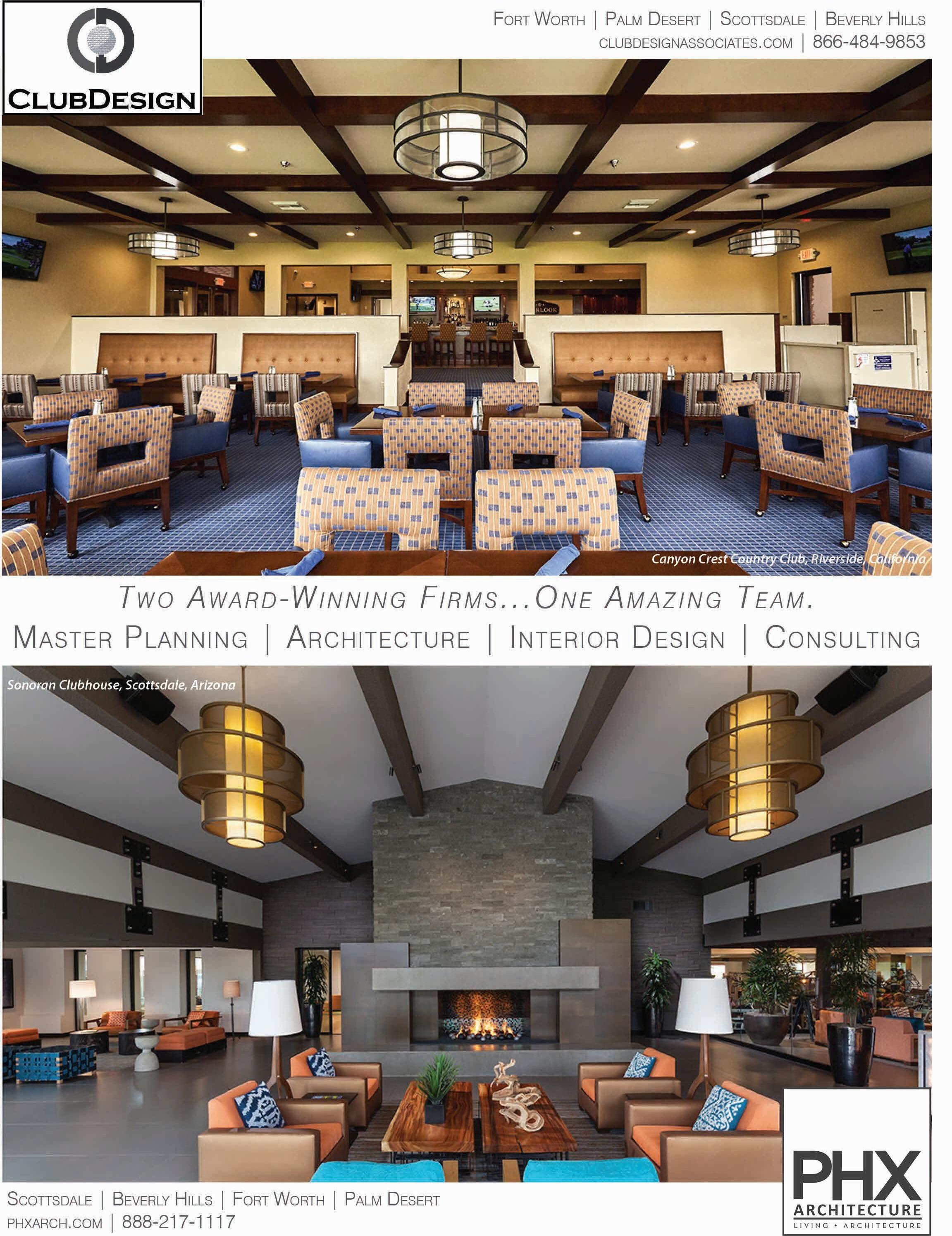

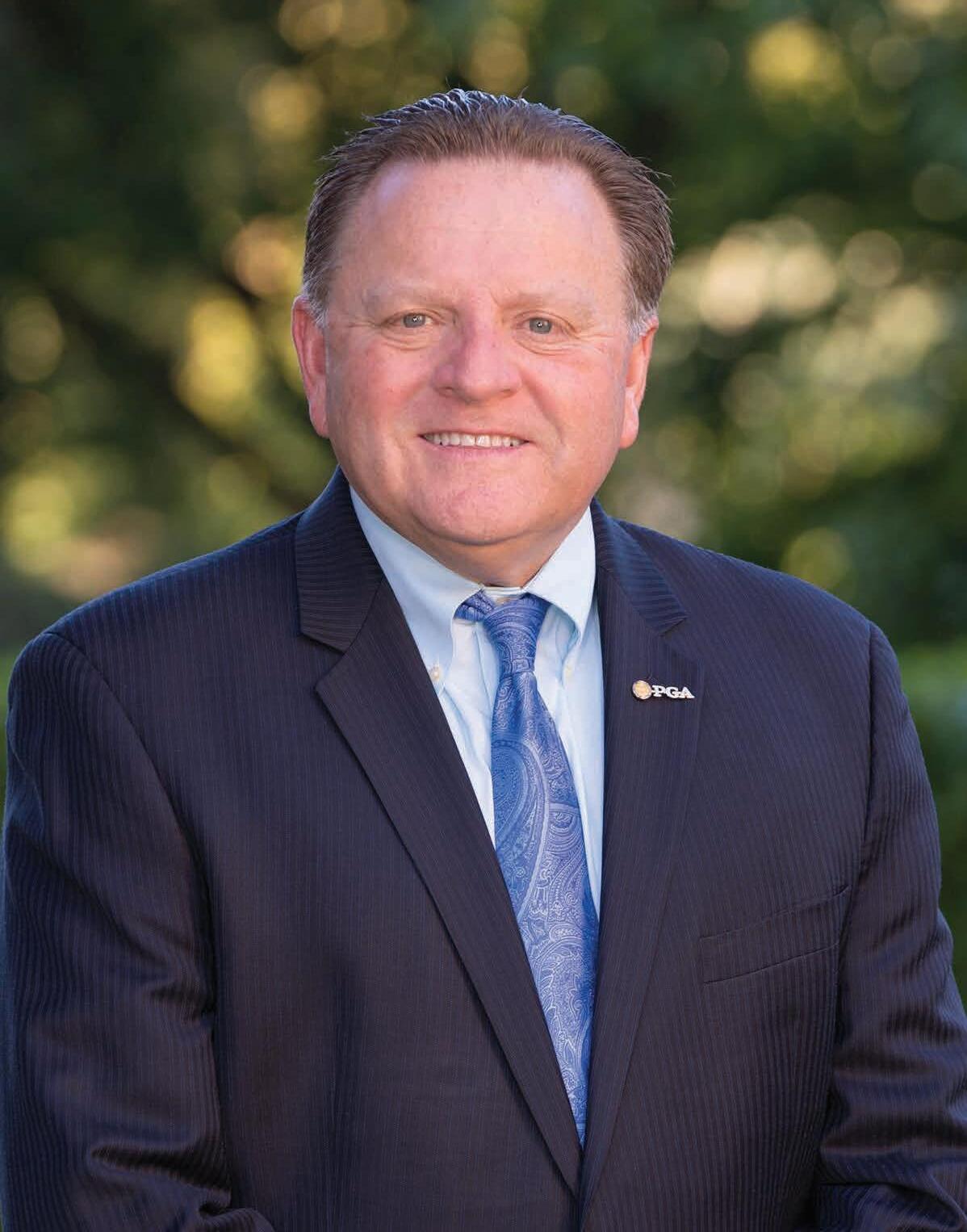
Sometimes work never really seems like work, especially if it’s something you love to do. That, in a few words, describes ‘passion.’
And golf remains the passion of Paul Levy, outgoing President of the PGA of America
“I’ve never had a job that wasn’t golf during my entire career, ” offered Levy, “and my love of golf is why I got into this industry ”
Levy has just finished his two-year term as PGA Pres ident His successor is Suzy Whaley, a PGA Master Professional and the first woman ever elected to serve as the PGA’s President. Levy will now serve a two-year term as PGA Honorary President
So, what’s been the highlight of Levy’s presidential tenure? “ The growth of the PGA’s educational platform and the incredible progress we ’ ve made through PGA Career Services,” Levy said.
The PGA’s Career Services Department has doubled its staff and now features 19 Career Consultants, supporting thousands of PGA members and employers nationwide
“In terms of passion, training, and expertise, PGA members represent the gold standard in golf,” explained Levy “We recognize that the industry benefits when PGA members earn seats in the boardrooms and at decision-making tables and add value in the ways only a PGA member can As a result, enhanced employment opportunities and promotion of our nearly 29,000 PGA members and associates are the focus of the evolution of the PGA Education and Certification plan ”
Three career paths are emphasized – Golf Operations, Teaching and Coaching, and Executive Management.
“ The two biggest growth areas, and the best opportunity for the future, are in both Teaching and Coaching, and Executive Management. Of special note is the growing trend toward Executive Management,” added Levy
“We have nearly 1,500 PGA members who now serve as general managers, and during the first half of 2018, another 191 PGA Members achieved GM status. This demonstrates how PGA Members across our 41 Sections are embracing our enhanced focus on career development.
“ The biggest impact is a focus on the three career paths and how PGA Members can leverage this knowledge into key positions, such as general manager, chief operating officer, director of golf, etc. This will enable PGA Professionals to have an opportunity to interview for the best jobs in the industry,” Levy opined Levy, a native of New Orleans, a 1983 graduate of Louisiana State University and three-year member of the Tigers golf team, assumed the mantle as PGA President in November 2016
He earned his PGA membership in 1986, and has also served in a leadership capacity at both the Section and national levels since 1992 Levy is also a member of the Club Management Association of America.
He’s president and CEO of PKL Golf Management and Club Services, specializing in operational management and consulting services for all aspects of golf and the club industry. Previously, as president of club operations and development for Sunrise Company, he served for more than 18 years developing and managing properties in California, Texas, Nevada and Colorado
In 2004, Levy moved to California to oversee development of Toscana Country Club in Indian Wells, California, as CEO and general manager
Levy and his wife, Heidi, live in Indian Wells. They are the parents of three sons and two daughters, and have five grandchildren
And now as his term as PGA President ends, Levy’s focus remains on his passion – golf – and what the PGA means to him and his fellow members
“ The role of the PGA Professional has come a long way in the club industry,” Levy enthused. “Since I got into the business, I have played, taught and worked in operations, executive management, and general management I’ve lived that life So, I know firsthand that when a PGA Golf Professional seeks out a position in the industry, they have a key advantage ” B R
The newest addition to the award-winning FOOD-TRAK System’s mobility platforms.
With the FOOD-TRAK Mobile App (FMA) for Android or Apple devices, our clients eliminate printing, filling out and entering data from paper forms Collect data where it lives, or look up information from wherever you are. Mobility equals efficiency! FMA Features Include:
Take Inventory
Receive Goods
Create Requisitions
Record Transfers
View Recipes
Use your device’s built-in camera to scan barcodes, saving time and improving accuracy for all types of data collection Print routing slips, invoice reconciliation reports and recipe right from the device to your network printers
Join the leaders in the club industry who use the FOOD-TRAK System to manage and control their F&B costs and reduce or eliminate subsidies. Easily affordable and suitable for clubs of all sizes
So leave your desk, hold the phone and call your FOOD-TRAK Account Manager at 800-553-2438 for more information.

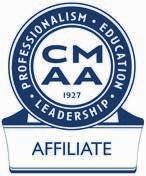

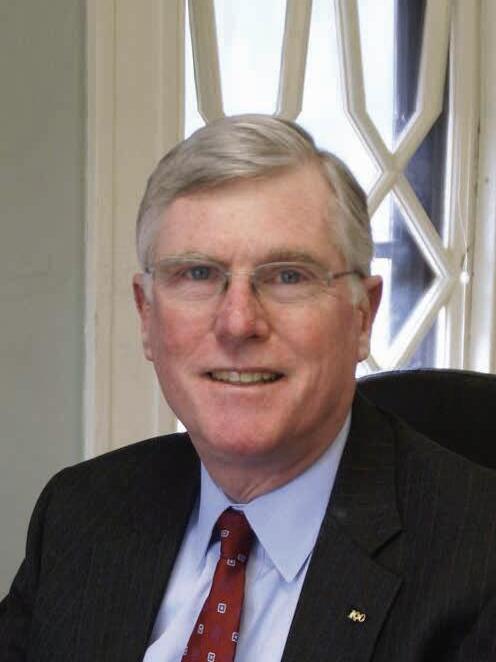
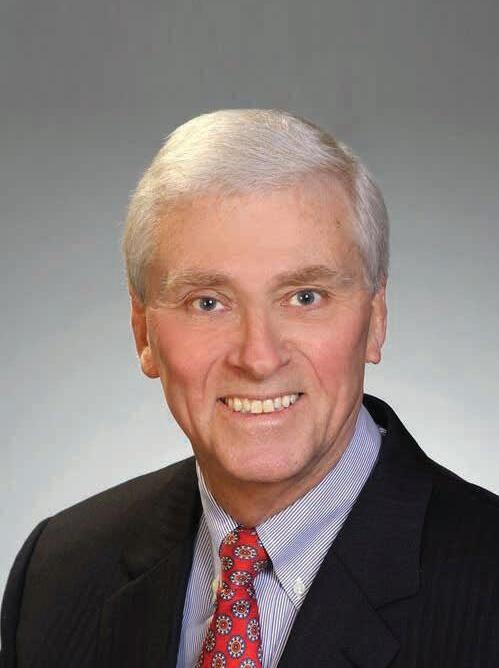
We’ve learned many things while serving on the boards of our own clubs as committee chairs, treasurers and presidents
We each served for more than a dozen years and have watched many new board members come and go and based on our experiences there are some basic truths that first year board members must understand in order to be effective contributors
Your club will experience attrition of four to seven percent per year over time. Over the next decade, you’ll likely need to replace more than 50 percent of your current membership roster just to stay even.
The new members will likely be younger, seeking a broader family experience and place greater emphasis on the quality of facilities than those they replace. As a new board member planning for the long-term vitality and financial sustainability of the club, membership development and satisfaction must account for the changing nature of the membership over the next decade or more
Yo
d
n h i l l s l i d e
Create, monitor and update a funded long-term financial plan that simultaneously projects separate operating and capital funds. Align all decisions with it. Respect the integrity of capital funds and resist the temptation to use capital to bridge operating shortfalls.
When considering capital fees and the use of debt or special assessments, fund a prioritized plan, not just a project.
Debt causes more club failures than anything else. D
e f f e c t i ve t
Food and beverage is a critically important amenity but should not be viewed as a profit center or be mandated to break-even. This amenity touches everyone Membership satisfaction starts here Virtually all amenities lose money. That’s what dues are for.
Clubs that successfully command the highest initiation fees and annual dues often show the greatest losses in member F&B Boards that emphasize outside functions typically underestimate the true costs including the demands on staff, facilities and membership enjoyment.
Don’t cut member facing ser vices and amenity costs for the sake of meeting budget. While it may look like low-hanging fruit, it’s shortsighted Nothing will diminish the value proposition of a private club like cutting back on what’s most visible and valued by the members. Modestly increasing dues (three to five percent per year is normal) or having an as-
sessment when circumstances warrant may draw some member concern, but the comments soon settle.
Critical comments about service and amenity deficiencies never seem to cease Improve the dues’ value proposition by improving the experience. Enthusiastic members are the key to attracting new members, the lifeblood of any club
Draw and respect a bright line between roles of the board and management. The board should focus on policy, planning and problems The GM and the management team run day-to-day operations and focus on accomplishing annual goals.
It’s your job to manage the balance sheet and grow the capital base. After the board approves the annual budget, let the management team manage annual operations. It’s your responsibility to think much longer term.
Your net fixed assets are your capital base Depreciation continually erodes the base and is a real cost. You must be planning consistently for a decade of capital replacements, modernizations and transformative improvements to meet the needs of current and future members.
If you spend more time in board meetings analyzing current year operations than focusing on fulfilling your strategic plan and growing the capital base, you are not doing your job.
Succession planning for board members and officers is critical. It perpetuates the best thinking of earlier boards and ensures continuity of planning, management and execution! B R
Joe Abely and Dave Duval are co-founders and principals of Club Board Professionals LLC Joe can be reached at (781) 953-9333 or via email at jabely@cbpros.com Dave at (617) 519-6281 or dduval@cbpros com

e x e c u t i v e CO M M I T T E E
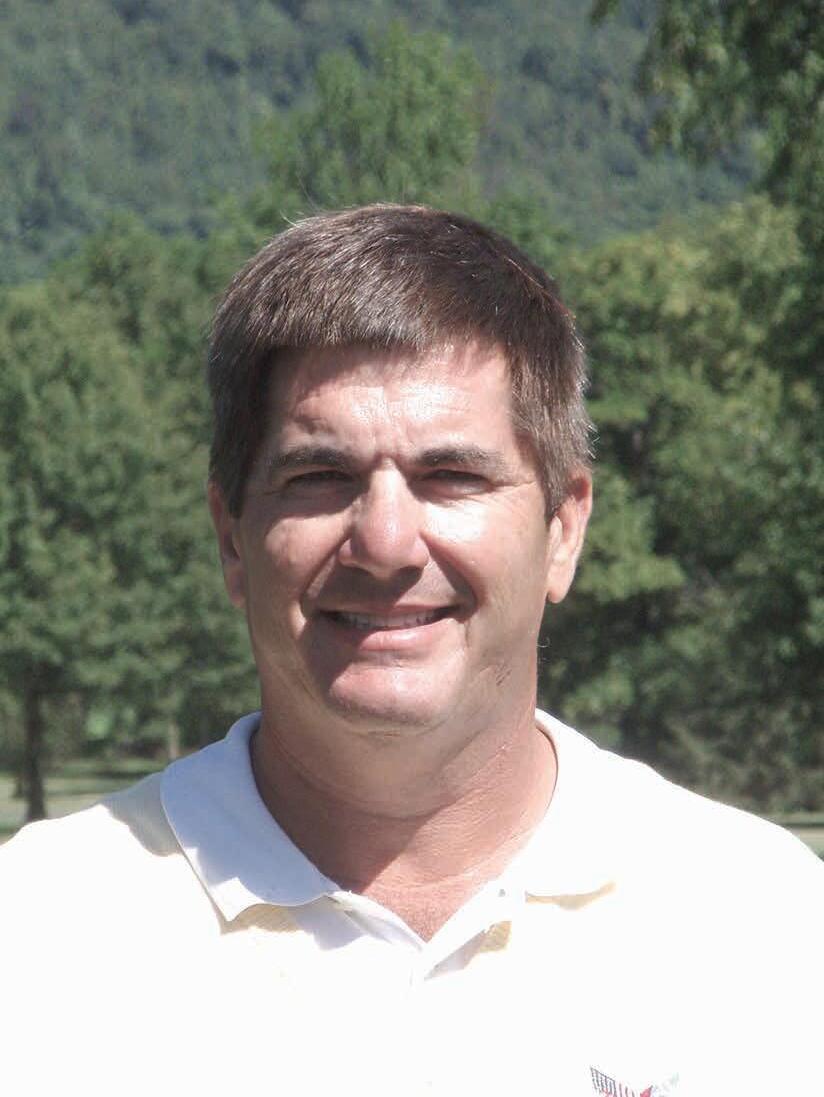
L A r r y H i r s H
Larry Hirsh, CRE, MAI, SGA, FRICS is the president of Golf Property Analysts (www.golfprop.com), a leading golf and club property consulting, appraisal and brokerage firm based in Philadelphia He blogs on variety of club and appraisal issues at http://blog golfprop com
A recent article by Kelsey Lawrence sent to me by a friend (Why Won’t Millennials Join Country Clubs?) raises a much bigger question: Are Country Clubs Fading Away?
I’m concerned about where golf is headed, especially private golf, which, in my opinion, has a culture problem.
When a country club closes it wipes out relationships, memories and economically, jobs in the community, which are not easily replaced. The culture problem relating to club rules that Millennials perceive as onerous, and a lack of racial and gender diversity at many clubs, is of great concern to the industry
E
a c c e s s
To be fair, many clubs have improved their performance over post-recession times and are preparing for a more competitive environment by investing in their facilities In many cases, these clubs take on debt that creates risk when (not if) the next recession comes along
Tradition is a big part of many of the older, more successful clubs. Often, club leadership resists evolution and progress in favor of these traditions It would be interesting to find out how many clubs still hold annual, formal balls and how well they are attended Wi t h m a ny c l u b s f o c u s i n g o n b e i n g f
i l y f r i e n
l
d r e s s c o d e s a r e b e i n g r e l a xe d , s o m e r u l e s a r e b e i n g e l
c l u b we l c o m e t h e
Will country clubs fade away? My guess is that there will continue to be consolidation in the industry. Clubs will continue to close, some memberowned clubs will be purchased by management firms and some clubs will open to the public, at least partially
This will mean that more than ever private clubs will need to offer value in membership. For the most part, gone are the days when folks join private clubs for the prestige or business entertainment.
In some circles, especially among Millennials, joining a private club is viewed negatively and there are numerous other ways to achieve social goals or conduct business, most of which are less costly. Furthermore, in
many areas, premium daily-fee golf provides a platform for upscale golf to serve those needs
What private country clubs do offer that few of the options provide is the socialization on a regular basis. That doesn’t exist at most of the alternatives Is this enough to eventually lure back Millennials?
Ac
v e s t m e n t ?
I’ve observed that some (currently) successful clubs often seem to feel an aura of invincibility. They think they’re “bulletproof ” Those are the clubs where leadership, seeking to preserve tradition, often implements policies and procedures that many members find objectionable.
T h e s e c l u b s u s u a l l y o f f e r e x c e l l e n t f a -
c i l i t i e s , p r o u d h i s t o r y a n d h a v e b e e n r e c -
o g n i z e d f o r t h e i r e x c e l l e n c e b y o u t s i d e
o b s e r v e r s . T h e q u e s t i o n i s : A r e t h e m e m -
b e r s h a p p y a n d h o w m u c h a n e c o n o m i c
d o w n t u r n m i g h t a f f e c t t h e c l u b ? T h e r e i s
n o o n e a n s w e r f o r a l l c l u b s , b u t e v e r y
c l u b s h o u l d e v a l u a t e t h e i r r i s k s o f d e c l i n e
a n n u a l l y.
Are country clubs fading away? I suppose it depends on whom you ask. As long as the number of clubs and club members declines, the technical answer is yes. Are they likely to disappear? No B R


David Lacey is a member of Philadelphia Cricket Club and served two terms as a member of the board of governors He also served as tennis committee chair He can be reached at this email address: dlacey@hirshorn com or by phone at (215)
During the past 18 months, at least 13 CEOs in publicly traded companies decided it was time to go All of them have turned their attention away from the success of their business for different reasons. But all of them have one reason in common – the position is very demanding and they are exhausted.
n o m e n o n
Being the “chief-in-charge”, especially at a country club, is very demanding The “chief’s” role includes multiple and complex demands including: challenging our thinking of ideas that increase member satisfaction, our capacity to convert ideas into meaningful and targeted execution, our ability to forge camaraderie and team effectiveness, and our resolve to do all of these actions without missing a beat or overlooking the obvious in the daily work of a GM.
T h e “ c h i e f ” r o l e o f a G M e f f e c t i ve l
t r a c k m e t a p h o r, t o p o l e v a u l t 2 3 f e e t e ve r y m o m e
s u s t a i n e d ove r t i m e
Are there signs of GM exhaustion or burnout, resulting from the “ask” by members and trustees alike? I believe it’s time for a general manager to leave the chief role when:
1) You move from being a good listener to boredom with the issue Colleagues suggest you are offering a blank stare with no effect
2) You replace being responsible and accountable for results to blaming co-workers for performance shortfalls at the club.
3) You hoard information as a political weapon for leverage. This GM behavior is a counterpoint to open communication an essential attribute of a successful team leader, especially when it comes to discussing your performance expectations of the team.
4) You stop sharing the spotlight. Too much focus on oneself impedes progress Sharing motivates your team members to share too
5) Yo u s t o p d e m o n s t r a t i
These five behaviors signal “enough is enough” or “time is up” in the role of general manager. At times the evidence for showing one or two of
these telling or ineffective behaviors may be explained away or even rationalized. Any effective general manager with a well-developed sense of self or self-awareness will note the warning signs and announce it is time to leave.
A l s o , t h e s e b e h a v i o r s a r e n o t a w k w a r d
m o m e n t s b u t w a r r a n t a t t e n t i o n w h e n t h e y
b e c o m e a G M ’ s n e w a n d p e r v a s i ve b e h a v -
i o r s . B o a r d s o f g ove r n o r s s h o u l d t a k e n o t e
o f t h e m a n d t h e n a c t .
T h e r e i s a n u r g e n c y a b o u t a c t i n g b e c a u s e
a n e f f e c t i ve a n d c o m m i t t e d G M i s t r u s t -
w o r t hy, e m p a t h i c a n d c o n n e c t s w i t h a l l r e l -
e v a n t c o n s t i t u e n t s a t t h e c l u b . T h i s k i n d o f
G M m a k e s t h e l e a d e r s h i p t e a m f e e l a p p r e -
c i a t e d a n d i n s p i r e s c o n f i d e n c e f r o m t h e
m e m b e r s a n d t h e b o a r d .
I t i s t i m e f o r a G M t o l e a ve w h e n t h e y a r e
e d g y, u n i n s p i r e d a n d f a i l i n g t o e x p r e s s
g r a t i t u d e T h e s e b e h a v i o r s by t h e c l u b ’ s
g e n e r a l m a n a g e r o r C E O w a r r a n t i m m e d i -
a t e a t t e n t i o n .
I m m e d i a t e a c t i o n i s b e s t f o r t h e G M , t h e
b o a r d a n d c l u b m e m b e r s Q u i t e o f t e n a
s a v v y G M w i l l b e a w a r e o f t h e c h a n g e i n
t h e i r b e h a v i o r a n d w i l l i n i t i a t e a c o nve r s a -
t i o n w i t h t h e b o a r d . I f t h e i n i t i a t i ve d o e s
n o t b e g i n w i t h t h e G M , t h e n t h e b o a r d c a n
a c t a f t e r w i t n e s s i n g t h e b e h a v i o r a l s h i f t i n
a n e g a t i ve d i r e c t i o n .
A l e a d e r s h i p c h a n g e i s a n o p p o r t u n i t y t o
r e f r e s h a n d i nv i g o r a t e a l l a s p e c t s o f c l u b
p e r f o r m a n c e I t i s a m o m e n t t o e m b r a c e
a n d t r e a s u r e a n d n o t d i s m i s s o r i g n o r e . B R
“Armen, after evaluating our options and several firms, we believed that KK&W provided us with the best set of skills, experience and industry contacts to present us, in a timely manner, a group of potential candidates for consideration of our GM position. You guided our Search Committee masterfully throughout the process. Your insights and guidance were invaluable to us through the candidate interviews and final selection process. Your communication kept us informed and made us all feel comfortable with the progress we were making at all steps of the process.”
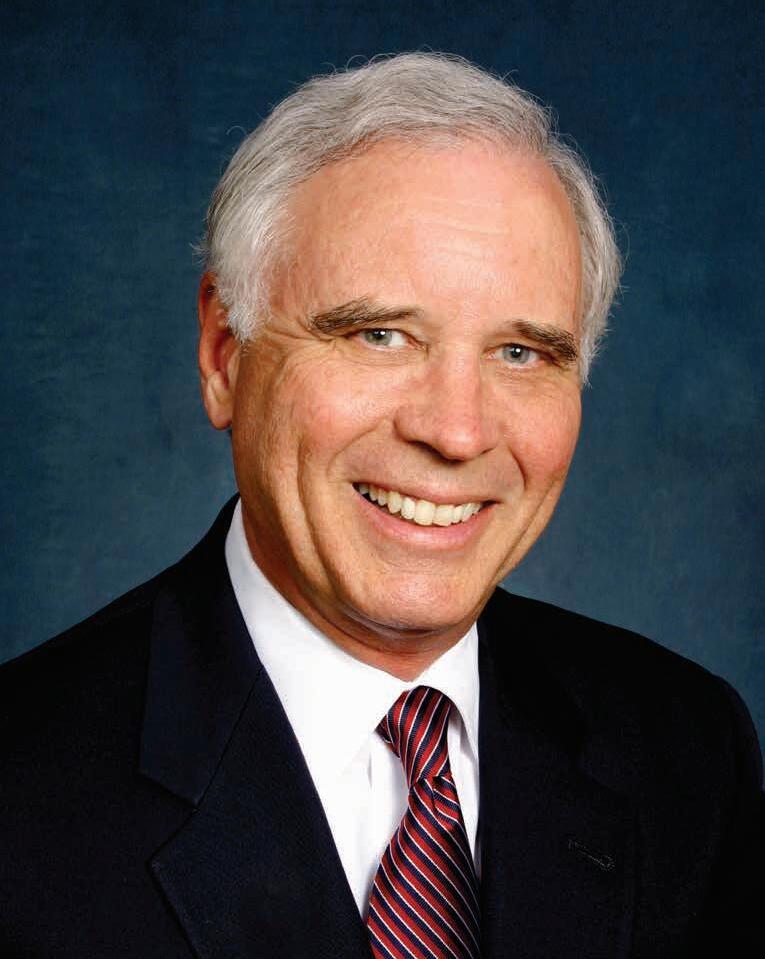
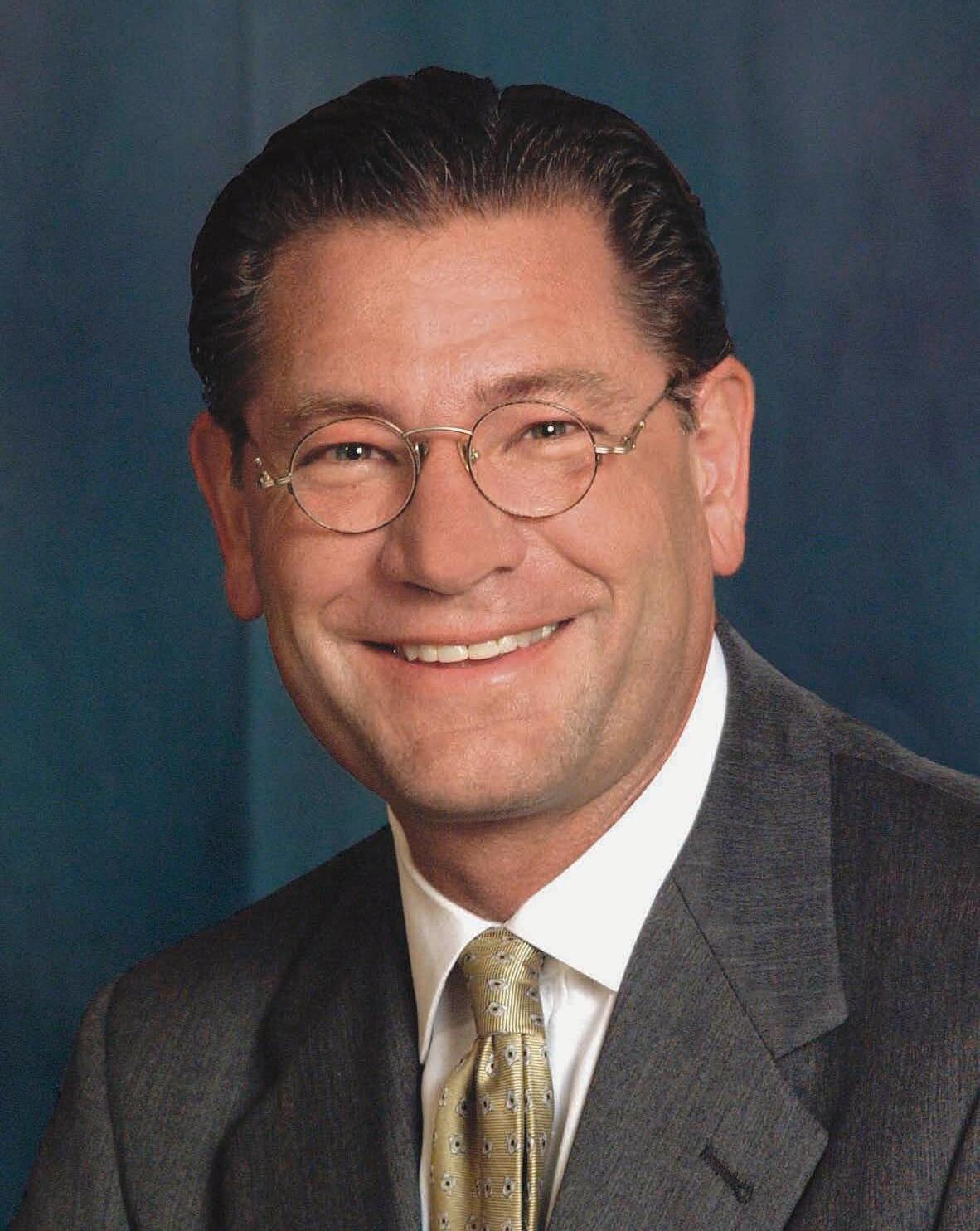



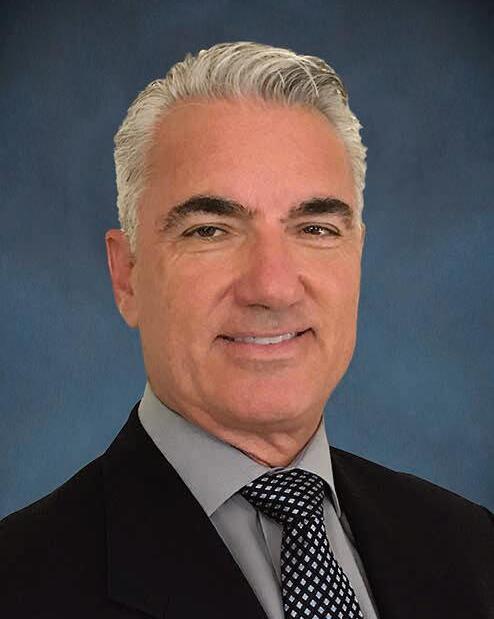
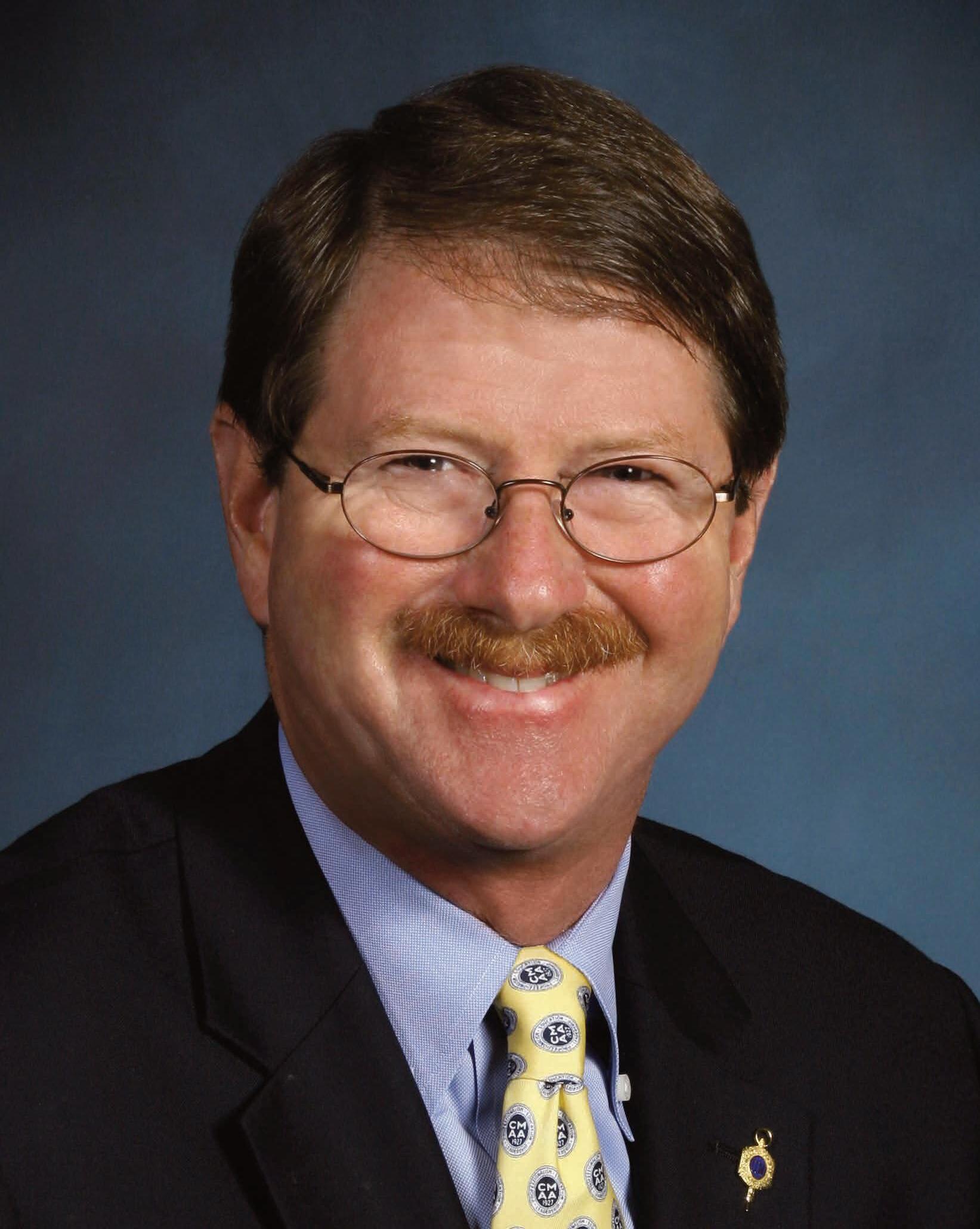
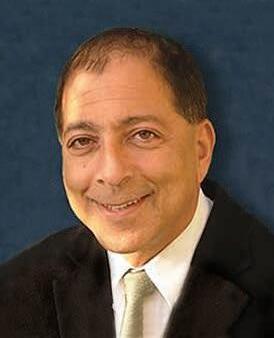




Peter J Nanula is chairman of Concert Golf Partners, an owner, operator and all-cash buyer of private golf and country clubs CGP specializes in recapitalizing member-owned clubs carrying too much debt, converting them to non-equity status, and maintaining the clubs as fully private www concertgolfpartners com | (949) 715-0602 | pnanula@concertcapital com
Member-owned private equity clubs often wrestle with the same issues: funding capital projects, growing membership, dealing with volunteer board governance and trying to break even or generate surplus cash flow
The truly elite clubs have a waitlist to join and six-figure initiation fee checks to sustain them. But the other 2,500 equity clubs operate with less cash, and thus must remain lean Inevitably in today’s competitive golf and country club environment, boards are forced to evaluate alternatives to the status quo. And they do have options:
Hiring a fee-based management company. When feeling financial strain, clubs often partner with fee-based third party management companies These management companies have years of experience at public and private golf courses and teams of professionals who can bring systems and structures to an equity club board trying its best to operate the club with no roadmap.
Hiring a third-party is usually a relatively easy decision The board decides to pay $150,000 to $200,000 per year to bring in some additional professional expertise. The management company works at the direction of the board, which is a rotating group of volunteers who often have busy day jobs and limited personal experience owning and operating golf courses or country clubs.
Results can be mixed. Boards report visible improvements in areas where the club was previously lacking, and members often appreciate the improved food and beverage service, golf operations or the back-office accounting systems
However, the membership levels may still remain stagnant. A thirdparty management company cannot fund improvements and cannot override the wishes of the board in recruiting or selecting new members So the club might get new members, which may be good enough for clubs that needed some structure and better marketing.
Recapitalizing the club. Partnering with a private club owner-operator in many cases means the club’s debt will be paid off and millions may be invested in capital improvement projects to revitalize the club’s membership base
This certainly has been true for MacGregor Downs Country Club in Raleigh, North Carolina. Members voted 93 percent in favor of partnering with a private club owner-operator to get rid of the club’s debt, inject $5 million into capital projects and freeze dues rates – these actions grew the membership back to pre-recession levels. In just three years, the club reached its capacity.
The results with the owner-operator model are very consistent, with nearly all recapitalized clubs experiencing immediate growth in member-
ship. New members join because the private club owner-operator or club hospitality firm paid off the club’s entire debt, funded new capital projects and restructured the dues rates to market levels with a guarantee of no member assessments.
Board members report high degrees of member satisfaction and they express relief at not having to deal with committees and board meetings anymore.
However, partnering with a private club owner-operator or a club hospitality firm is often viewed by members as a bigger, riskier step. The hospitality firm will assume day-to-day operating responsibility for the club as well as shouldering all the financial burdens of operating losses and funding capital projects. The members are no longer at risk, but they also are no longer completely in charge
Typically members retain a voice in the strategic direction of the club through an advisory board, but the day-to-day details are handled by experienced private club operators Members may no longer be making all the decisions, but they love seeing their club thrive without the hassles of ownership. The club hospitality firm is focused on member satisfaction and the catering and events side of the business to continue to sustain an upscale club.
There are two ways to get professional help at your equity club: hire an extra level of professional management or get both capital and professional management in one package These two options can help your club, but they represent either partial or more comprehensive solutions to the common challenges of private equity clubs. B R


Picture sitting in a boat in the middle of Lake superior the sky is cloudy; the moon is new; everything remains pitch black. Waves are rocking the boat, so you hold on, because there is nothing but endless water in all directions.
Those in the boat with you are increasingly concerned that the boat is floating aimlessly and you are lost They look to you for guidance And it’s your responsibility as the leader to reassure them.
You take the wheel and steer the boat in the direction you feel the destination is located After some time, a pinprick of light appears on the horizon It is the lighthouse! Everyone has entrusted you to get them to safety, and even though there is still quite a distance between the boat and the light, they know that you are leading them in the right direction.
That lighthouse is a vision in our lives and clubs Between where you are and the source of the light, there is unknown expanse What you encounter in that expanse will test your mettle as a leader, and your faith and fortitude will see you through. Your perseverance will guide you from where you are to your goal
Leaders have a responsibility to understand where we are going, and then lead others there. Recognizing and honoring the responsibility communicates the goal with those being led. When everyone knows that the leader knows where they are going, and what the team needs to accomplish, each person can fulfill their individual responsibilities – making a contribution.
A wise person once said: “If you do not know where you are going, any road will take you there.” If “there” is the collective vision for success of the members/owners, then what must you understand as a member of the executive committee to make the B1G DREAM a reality? The B1G DREAM is the destination selected by you. The 1 represents your unique B1G DREAM, one that is personalized for your club and appeals to the individuals
Why? Accepting responsibility as a leader is a necessity because the more clearly that you can see the future, the more likely you will steer yourself toward it. The vision of the future allows an intentional approach to the present, to be thoughtful of our actions, and mindful of the now To lead ourselves and our teams to success, we are responsible for being focused on the future, while in the present.
Who? Understanding ourselves and what is most important in life outlines a vision for a life intentionally lived What do you want to see when you finish your career? In order to accomplish that vision, what must your life look

like three years from now? The vision for your life is uniquely yours. For the club, it must be a vision that can be adopted and owned by all.
Once a path has been identified, next comes the responsibility to decide who will be on the journey with you Friends, family, significant others, other club members/owners. Each person plays a role in your ultimate success in reaching the goal, or in missing it Who will help with the B1G DREAM?
Where? Taking the first steps toward success means understanding our individual priorities “Step” and “success” are based on your principles It is up to you to define the direction and to hold yourself and others accountable for achieving results.
When? A timeline is essential for any S M A R T E R goal What is the finish time and when do we begin? Start with the end in mind. Plan backward from the future to the present Describe the B1G DREAM simply so others clearly see a way to contribute and exercise their responsibility to achieve.
Responsibility – When we understand ourselves and our values, in the context of our individual vision for success, we can look beyond ourselves to understanding others. The understanding helps all see where their unique responsibility is needed in a relationship or in a career B R
Dr Ronald F Cichy, O M is professor, The School of Hospitality Business, Michigan State University
Matthew D Anderson is chief brand officer, Engaged Educatio

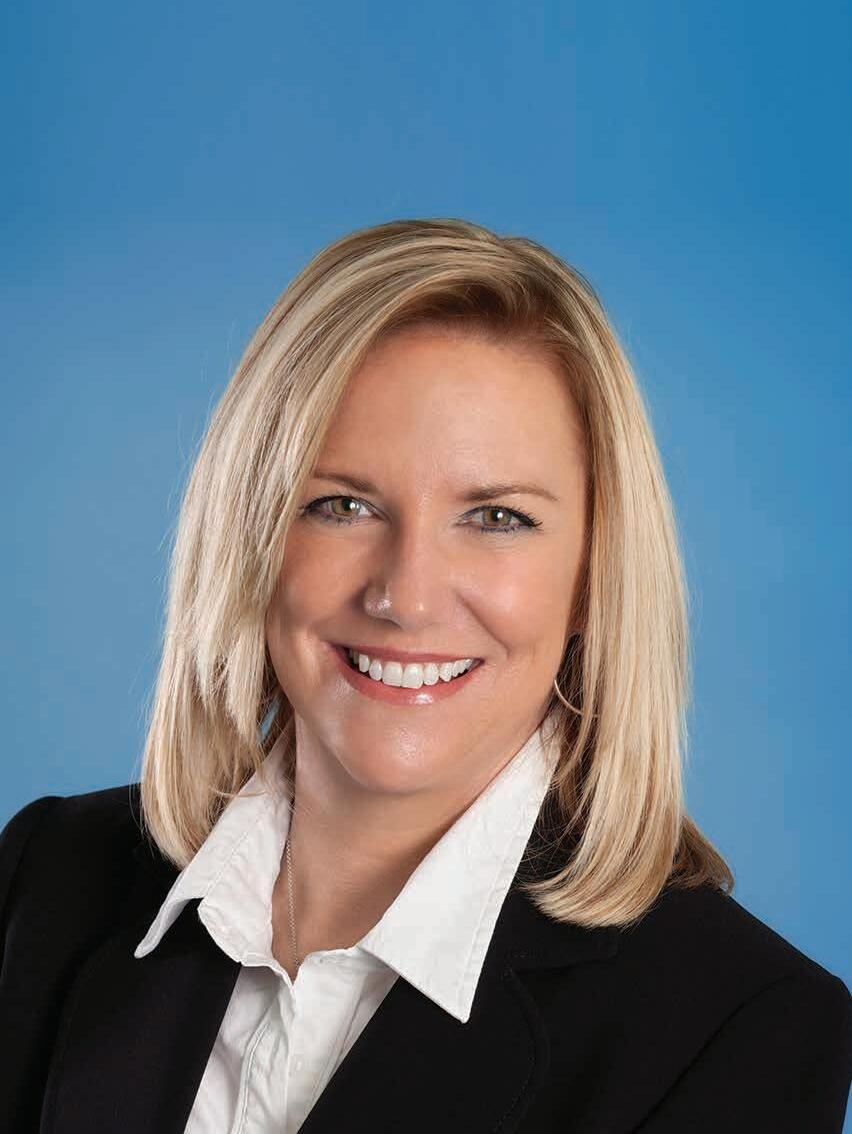
in the 1999 book The Experience Economy, the authors offered readers a new way to think about connecting with customers to secure their loyalty: stage experiences to leave a memorable impression.
The experience economy started two decades ago, yet we seem to continually underinvest in our greatest asset for delivering experiences – the people we employ. Understanding today’s modern private club member and members in our future, who have made it clear they want experiences, not things, it is imperative we are investing in the ‘how and who’ of consistently delivering the experience at a private club, not just the ‘what’, such as updated amenities.
Many clubs have invested heavily in their ‘what’ – the physical amenities/building Recent industry reporting indicates this past year private clubs have made the largest capital investment seen in decades – much of it to stay relevant to an ever-changing membership and multi-generational demands.
Industry benchmarks tell us that successful clubs invest 12 – 15 percent of their total operating revenues into capital expenditures
As we look to the future of our industry, the question clubs should be asking now is, “What are we investing in our HUMAN CAPITAL?”
Human capital is as important as the building capital investment and many clubs have underinvested in employees for so long, they haven’t yet recognized how costly it has become to retaining and attracting members. Underinvesting in human capital also has an impact on employee retention and attraction, further exacerbating turnover/training challenges.
Many times, as clubs make the commitment to invest in physical capital, they are forced to compact their organizational chart to meet the unexpected expenses of a construction/renovation project. This manifests as elimination of higher paid professionals to save money and promotions from within without providing tools, resources or training to be successful
Every manager in every industry is struggling with the workforce, experiencing unprecedented turnover and challenged by unproductive or unskilled labor. In the service industry the labor crisis shows up in the member experience we are able to provide
Many clubs are now caught looking for the answer to the chicken and egg conundrum: “Are we struggling with consistency and productivity because we have underinvested in human capital or are we unable to invest in human capital because of other factors (debt, increased operating costs, lost dues, declining usage) permanently limiting our consistency and productivity?”
Investing in your human capital produces a strong return on investment if done thoughtfully and consistently. Assuming you understand and are providing what the members want (amenities, activities), you must then have the people, systems and procedures to deliver the experience consistently. The results will be evident in your revenues. Human capital investment feeds into your service culture and also helps you to become an employer of choice.
Here’s how to invest:
• Make a continuous investment over time. Competition for today’s modern member is fierce and experiences are the real competitive differentiator from one place to the next Just like traditional capital investments, the less a club invests in human capital, the less revenue realized because of the inability to successfully deliver the experiences being promised
• Do a ‘human capital reser ve study’. Would you hire the people you currently have employed? Do they have the skills and abilities to consistently deliver high productivity? Do you have the right organizational structure for your new facilities and services being offered or have you re-purposed people who don’t quite fit their new role? Have you provided training for them?
• Treat your employees like the capital assets they are. Rewards, recognition and development opportunities will take you far Paying a competitive wage to get the best employees is key, and once you get them, work hard to protect the assets you choose and in whom you have invested B R
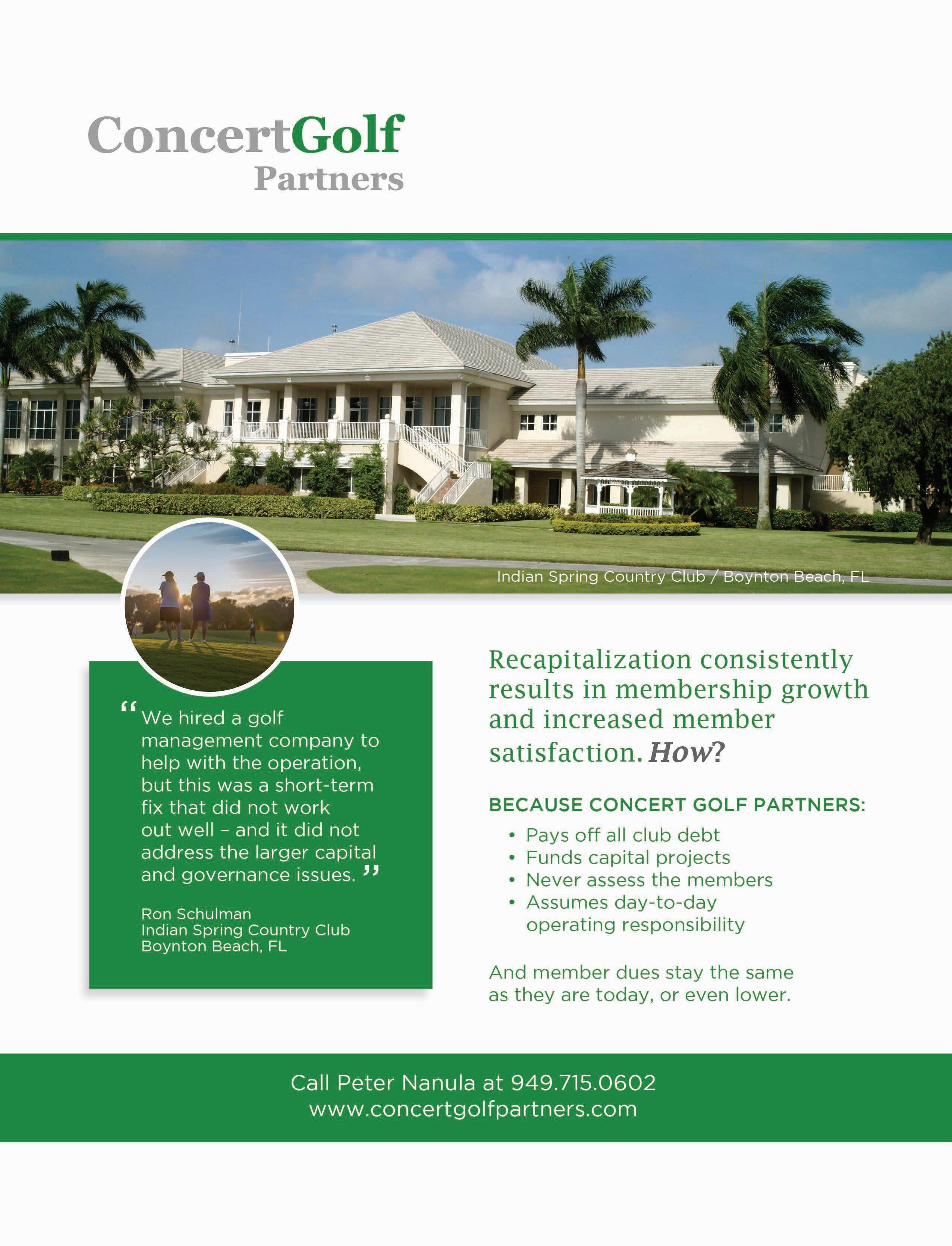

Gordon Welch is the president of the Association of Private Club Directors (APCD), the only association representing the club’s board He can be reached at gordon@apcd.com or by calling (949) 376-8889.
things are slow to change in most of Americas boardrooms. Many of the challenges we have discussed or read about regarding our boardrooms haven’t changed much at all. is that surprising to you? it should be
In my many discussions with board members and even general managers/ chief operating officers I hear the same issues. Boards are still receiving a ‘packet of information a week or so before the meeting (paper or electronically) and meeting at the same pace as years past ’
I will say to you that, unless you have a major issue or strategic plan before the board, your meetings should not last more than 60 to 90 minutes
tance of the role or don’t care. In either case – they need to go Board members must work together and not create this type of concern or animosity.
Boards are still wondering why they don’t make money in food and beverage. This is an ages-old question and the answer is simple: it depends on your club, your clubs’ budget, your goals and the culture and tradition.
I’ve seen clubs that make money or break even, and I have seen clubs that ‘lose’ hundreds of thousands of dollars per year That is their intent Clubs are all very different. Club food outlets are expected to be open and ready from sun-up to late night. The labor to operate in member expectation hours is enough to break any budget.
Board members, you must have an open dialog with your GM/COO. Open dialog includes an open, clear, honest relationship If that does not exist it will be a long year. With open dialog your board meetings will be more focused and timelier
If you do not have a consent agenda, you should consider it. It saves time and gets the board to the intent of the meeting. A consent agenda is a board meeting practice that groups routine business and reports into one agenda item
The consent agenda can be approved in one action, rather than filing motions on each item separately. Using a consent agenda can save boards anywhere from a few minutes to a half hour It moves routine items (minutes, financial reports, COO/GM report, committee reports) along quickly so that the board has time for discussing more important issues.
Recently while listening to a board president, he stated that because of one of the board members (that shares info outside the boardroom) he did not feel comfortable with sending information out early for review.
If you have an individual like that on your board, ask them to leave They either don’t understand the impor-
In closing I want to invite you to join the only association for private club boards and committees. The Association of Private Club Directors (APCD) is an outlet for boards to learn from top leaders in the industry and content experts
The Boardroom Institute is the association’s educational arm and offers over 50 relevant educational modules covering seven areas that will not only help your board members understand their role but will help give guidance to committees as well
The seven areas of content include an Introduction to Private Clubs; Private Club Governance; Committee Roles and Responsibilities; Private Club Finance; Management; Ingredients of Successful Boards and Strategic Planning/ Long Range Planning.
APCD offers a wealth of information and should be part of your Board’s Orientation and ongoing development of boards and committees
For more information please visit APCD.com or contact us at (918) 914-9050 for a demonstration! B R
Rob DeMore is president of Troon Privé and can be reached at (480) 477-0558 and via email: rdemore@troon com

Henry David thoreau once wrote, “i would rather sit on a pumpkin and have it all to myself, than be crowded on a velvet cushion ”
If he were living in today’s society, there is a hail storm of evidence that he would have chosen the pumpkin
By the numbers, analysts predict 42 million Americans (33 percent of the U S work force) will be self-employed by 2020, with 97 percent of those indicating they have no interest in ever climbing a corporate ladder (Freshbooks Second Annual Self-Employment Report).
An article on AOL.com notes that within the average lifespan of 27,375 days, the average Millennial will take the time to capture 25,700 selfies and subsequently contribute 74 percent of Snapchat’s total photo inventory. We self-serve frozen yogurt, appreciate that it is YouTube rather than YouTooTube, and celebrate Treat Yo Self day each October 13th to ensure “me” is covered (see YouTube if you want to learn the origins of Treat Yo Self Day).
And yet, we are a nation simultaneously crippled by loneliness Former U S Surgeon General Vivek Murthy noted last year in the Harvard Business Review that, “We live in the most technologically connected age in the history of civilization, yet rates of loneliness have doubled since the 1980s ”
Murthy further notes that working in excess has become the norm in America contributing to the diminishment of well-being for so many people. The
loneliness epidemic impacts not only our health as individuals, but it also threatens the health of societal institutions such as private clubs
Human beings innately have a core need to be welcomed and part of a larger social group in order to survive. Yet our industry, despite being borne from a desire to fulfill this same fundamental human need, continues to decline. What can be done? Successful approaches are sprouting in a number of thoughtful ways. It is encouraging to see the reinvestments being made in order to reimagine clubhouses that mirror the evolution seen in American livings rooms today – removing walls to expand spaces, featuring bars and creating singular spaces that encourage both individual and shared usage
The core of country club athletic facilities such as golf, racquet sports and fitness has sEE ExECutivE COMMittEE | 94


Rita B Craig, president of Top Tier Leadership, is a leadership consultant, trainer and keynote speaker She can be reached at (561) 775-3396 www TopTierLeadership com
When you hire a new employee, do you have a plan to create a sensational first day? Do you assign someone to be the “mentor ” for that individual? Have you been thoughtful about putting together all the information they need to know? Here are some answers so keep reading!
Onboarding is how new employees acquire the knowledge to make them effective and productive additions to your workforce It’s integrating them into your distinctive culture and its individual behaviors through everything from printed material to ensuring they understand how they help live the brand
Chances are you spend a significant amount of time and money attracting and hiring an outstanding individual. With unemployment just over three percent, it’s challenging to find talent. When you are attracting talent and “selling” a brand, you need to make sure that you live that brand at every touchpoint!
What you should know is that newly-hired individuals who go through a well-thought-out onboarding program are more likely to be with you a year later by a whopping 91 percent The number who are still with you three years later approaches 70 percent
You should also know that such a program is likely to show a yearover-year improvement in revenue of about 60 percent, that the increase in customer satisfaction is even higher, and that the return on investment (ROI)) may gain you a whole lot more from the boss than a satisfied smile. Here’s what onboarding is all about:
• Acquire new people – select and recruit the people you need.
• Accommodate them – provide the tools they need to work.
• Assimilate – help them join the team
• Accelerate – show how they can deliver results faster.
Successfully onboarding new employees in the first three months requires absorbing them effectively and creating rapport, a positive relationship The support you provide during that time can foster an outlook that makes them happy to join your team and ready to work hard for it.
To begin, ensure all paperwork is sent to them electronically in advance Prepare a FAQ for your new hires from a link in a welcome email. Use technology wherever possible.
If you have a handbook, send the club’s digital handbook – or a brochure or handout you create yourself – with information about the club You can utilize remote workers on sites, i e like fiverr com to prepare some great looking documents O r g a n i z a t
During what can be a glazed-eyes procedure, stop occasionally to ask the hire if they understand what you’re trying to convey. For you and for future onboarder-managers, it’s important to note what works and what doesn’t Don’t be afraid to be self-critical.
After the initial encounter, check in during the early weeks to make certain you’ve communicated job responsibilities clearly Are you providing the tools to do the job well? Is the workload manageable? Does the worker seem comfortable and engaged?
Encourage questions so you can provide feedback on what’s most important to them. Ask what you do better than their former employer and what you do worse!
Mentoring can be useful If your club supports it, help the employee choose someone who is knowledgeable about the club and works well with people. Check with the mentor to keep things moving in the right direction
Remember too that new hires who aren’t prepared properly may not make it past the early months, and that turnover costs the club even more. How efficiently you keep costs down will be a reflection of your talent and hard work, showing that done well, onboarding is money well spent.
Finally, remember that the onboarding process is just the beginning! B R
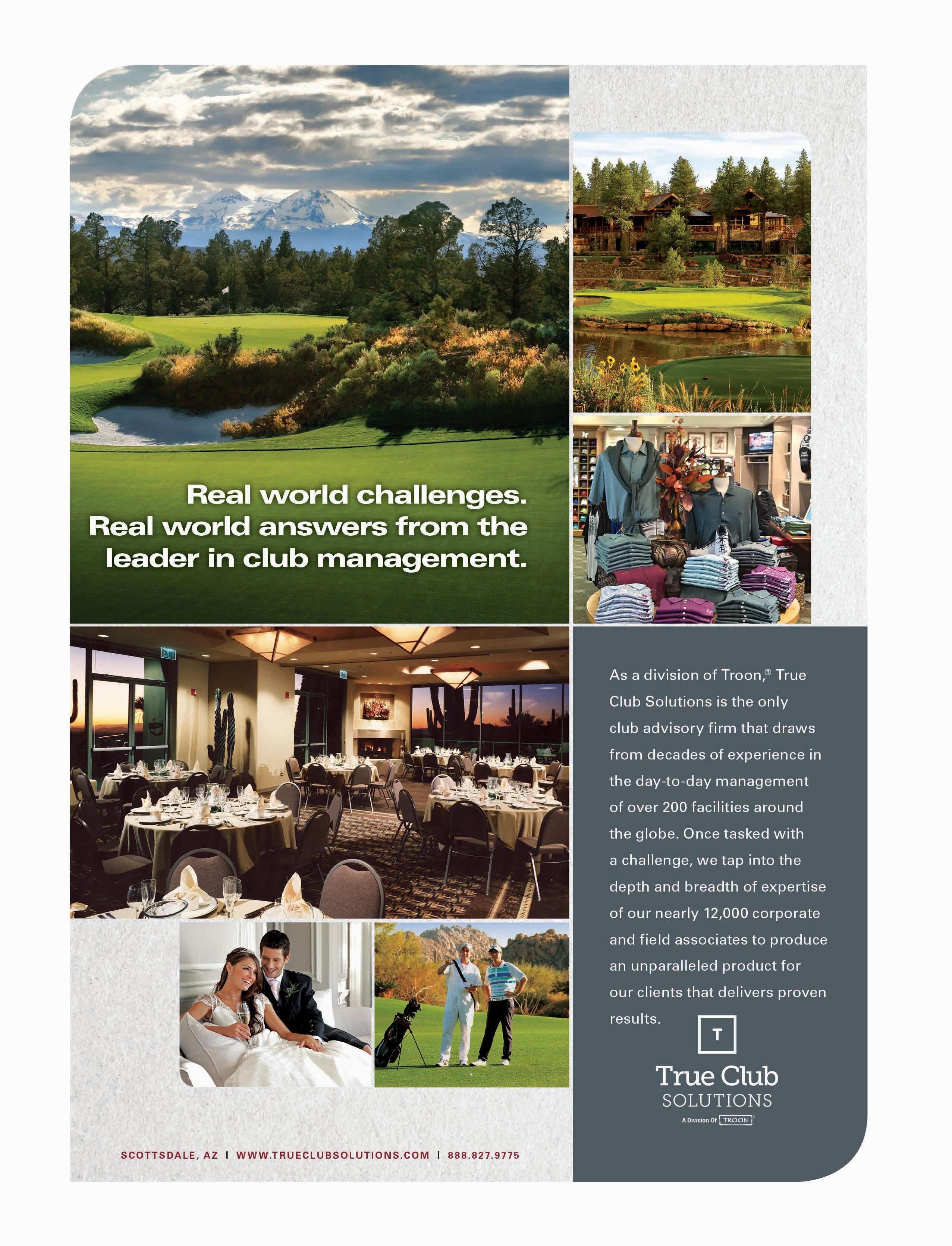

Mitch Marron is a leader in Goodwin Recruiting’s club division and a former board member and host of the CMAA International Wine Society Goodwin Recruiting is a full-service recruiting agency with specialists in hospitality, executive, finance, and clubs Mitch can be reached via email: mmarron@goodwinrecruiting com
the problem is all too familiar to club directors. Finding top talent in today’s market is an uphill battle. Clubs face competition from a fierce job market that is currently profoundly lacking in available candidates
So how do clubs win this battle for talent? It takes a strategic plan. To make a plan, it is critical to define the problem.
Clubs operate in very different ways than traditional hotels or restaurants. The hiring process for clubs is complex because a board of directors manages clubs Board members often want to weigh in on all key hires This can slow down the process in a way that makes hiring excellent hospitality talent nearly impossible. Hiring for clubs can often take two months or more.
Hospitality hiring, on the other hand, moves fast. Really fast. Candidates are often hired and up and running at a new opportunity within two to three weeks. The contrast between the two processes is stark. In addition to the difference in time to hire, the current job market is at an all-time historically tight level. In May 2018, for the first time in the history of employment tracking, there were more jobs than people looking for jobs. Talent availability in hospitality is even lower given that job openings in other fields are siphoning off those who are tired of the day-to-day grind that hospitality work requires.
WHErE DOEs it Hurt?
So how can clubs combat these issues and fill key positions in their food and beverage service areas? It helps first to identify the posi-

tions for which it is most difficult to locate talent. Many clubs report the following positions as the toughest to fill:
• Executive chefs and sous chefs
• Sommeliers
• Restaurant managers
• Catering directors
• Sales and marketing directors
For these key positions, it’s imperative to have a faster turnaround time. Take too long, and you will quickly find the perfect chef has been snatched up Clubs have to adjust for this new world order if they hope to win in today’s hospitality talent wars. Candidates need to see the hiring process is progressing or they will grab another opportunity
strEAMLiNE tHE PrOCEss
So how can a club manage the hiring process to achieve success? Get the board on board Propose a list of mid-level hospitality positions, like those above, that require streamlined hiring. Make the new process and the reasons for it clear to everyone involved Consider incorporating modern recruiting tactics like initial screenings via phone or video call. Contact hiring experts in the field with deep pools of passive candidates that you can entice
Get people excited about the new process. While maintaining tradition is essential, modernizing club processes is a goal for many clubs today Like a breath of fresh air, it can bring new energy to the entire club
Finally, consider using staffing firms that specialize in hospitality recruiting. They fill these positions regularly and can help you understand how the process works best and what it takes to land the talent that best fits your club’s culture. With a streamlined plan for hiring mid-level roles and specialists in club recruiting to back you up, you can ace the battle for hiring top talent for your club. B R



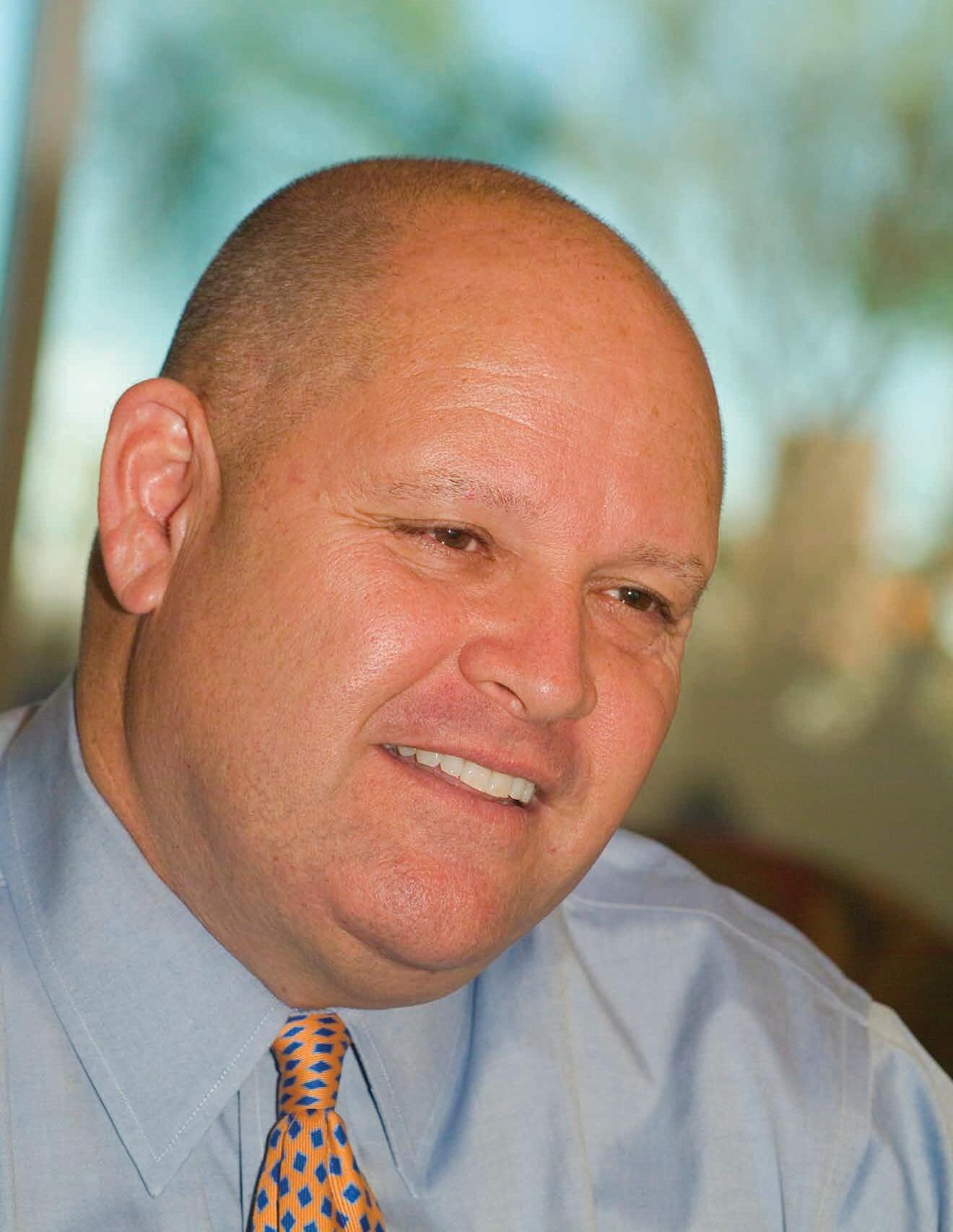
Henry DeLozier, a recipient of the BoardRoom magazine Lifetime Achievement award for 2014, is a principal of Global Golf Advisors You can contact him at hdelozier@globalgolfadvisors.com.
it’s that time of year when forecasters are looking deep into their crystal balls and trying to make sense of reams of data in anticipation of yet another round of predictions.
For private clubs, which historically and by definition are insular in nature, it makes sense to look outside the boardrooms and beyond the fairways to envision what’s next. Taking a macro perspective, we can then try to extrapolate on a more micro level to focus on clubs and their boards.
Here are six trends that are shaping consumer behavior and spending. For each we’ve tried to identify opportunities for clubs to take advantage The key to making this exercise fruitful, of course, is not only nailing a couple of trends (shouldn’t anything above the Mendoza Line be considered a rousing success?), but also in connecting the dots between what’s coming and what to do about it In other words, defining the “so what ”
Let’s plan on meeting back here in about a year to see how we both did.
Trend No. 1: Distrust at an all-time high: The general state of trust across the globe continues to erode. The latest Edelman Trust Barometer Survey, which measures trust and credibility, showed the largest-ever drop in trust across the world’s four major institutions: business, government, media and NGOs
One of the places where we clearly see the effects of this trend is in traditional advertising. Mainstream print, broadcast and direct mail have been on a downward path in terms of credibility for some time now, and their fortunes don’t look any brighter
In fact, 30 percent of all internet users are expected to use ad blockers by the end of this year, meaning traditional ads won’t even reach a large segment of possible target audience members
So, does this mean marketers should abandon ads completely? Not necessarily. But it does call for more transparency and authenticity in marketing. The most trusted advertising sources are now people you know, branded sites, editorial sites and reviews
Storytelling is a credible and compelling form of marketing that continues to gain popularity and converts. Tell the stories of your club in authentic ways and you’ll gain the trust of members and prospects. And when you’re telling those stories, do it with video as much as possible.
According to Content Marketing Institute (CMI) and MarketingProfs’ 2018 content marketing benchmark reports, 72 percent of B2B marketers and 76 percent of B2C marketers use pre-produced video as part of their strategies. We love stories – especially ones told with video.
Trend No 2: Putting Cx to work for you: You’re probably familiar with the concept of customer experience, CX for short. “To deliver on the full range of CX we need to anticipate the needs of consumers and that means understanding your customers and giving them experiences tailored to their individual wants and needs They expect relevant and timely promotions, products and services based on their personalized data. In other words, consumers expect brands to know them,” according to INC.
Where does this knowledge come from?
Increasingly, we’re able to mine data from all manner of sources, especially from our interaction with internet sites. Surveys and focus groups are helpful, too
But if you really want to know your customers on a personal level also consider more traditional methods. A simple oneon-one conversation can clue you in to an upcoming birthday or anniversary; an overheard conversation can alert you to a member pushing his putts; a direct question to a waitress can uncover a customer’s favorite dessert Then it’s easy enough to send a congratulatory note, ask your pro to drop by the putting green with a tip or comp the tiramisu. These are gestures that add emotional value to the member experience.
Trend No. 3: Diversion- less/snug spaces: The demand for fewer distractions will be a key requirement for consumers hoping to simplify and push back on the pressures of their day-to-day lives, according to Designlsm, an international consulting firm focused on the retail and hospitality sectors
To accommodate the desire to lower the noise level in your members’ lives, look for ways to create snug spaces that invite smaller, more intimate conversations and gatherings.
A fire pit with comfortable chairs and hot chocolate on cool fall nights An alcove just off the main dining room with a current collection of magazines and bestsellers. A poolside tent or cabana where moms can chat and grab a snack while keeping an eye on the kids Think small, private and soothing.
Trend No. 4: Millennial power: Millennials are having a profound effect on retailing This first generation of tech
natives grew up with PCs, tablets and smartphones, and using all three is second-nature to them
Millennials are more willing to try new things, especially new technologies. When it comes to online behavior, mobile and social resonate with millennials. They are more likely to start a product search with a retail app, look at ideas on social media sites and seek advice from friends or family
They’re more influenced by product reviews, questions and answers and photos posted by other consumers than they are overt marketing overtures
There are about 6 4 million Millennial golfers, according to the National Golf Foundation. That’s more than any golf cohort other than 6.8 million Gen Xers, whose birth years span the early-to-mid 1960s and the late 1970s to early 1980s (By contrast there are 5 4 million Baby Boomers, once thought to be golf’s saviors, but now on the back nine of their golfing careers.) They also represent a lot of membership prospects.
Research conducted by Global Golf Advisors in cooperation with Nextgengolf (The Truth about Millennials) found that 75 percent of avid Millennial golfers are prepared to consider private club membership, but cautions that this cohort has different wants, needs and expectations. Clubs need to think about greater flexibility and customization in membership, according to the report’s authors.
The most important thing marketers need to know about Millennials is where and how to reach them. The answer is proving the validity and timeliness in the decades-old phrase, “The medium is the message.”
Research makes a compelling case for focusing on mobile: 39 percent of Millennials interact more with their phones than with humans They also make up 29 percent of the American population, but account for 41 percent of its smartphone use. If you want to be even more targeted –and effective – text them.
Text message or SMS marketing is growing exponentially because it’s simple, powerful and ubiquitous As their 98 percent read rate in the first two minutes attests, texts are just about impossible to ignore.
Trend No. 5: Building and customizing products and ser vices: Personalization remains a key retail trend “We’re not just talking about putting someone’s name in an email subject line or letting customers put their initials on products We’re referring to personalization that enables shoppers to build products and customize them to the very last detail,” according to Vend, a POS software provider.
Modern consumers are placing more value on experiences over physical items or commodities. And so, when shoppers purchase tangible products (beyond things like groceries), they want those items to either tell a story, fit into their lifestyle, be unique or all of the above.
T
m e a s u r e m e n t s
A s k t h e m a n u f a c t u r e r s w h o s e p r o d u c t s yo u c a r r y t o
s e t u p d e m o d a y s a t yo u r f a c i l i t
When the custom-fit clubs arrive, make it feel like Christmas morning for your member.
Trend No. 6: Connect with healthy and environmentfriendly choices: More and more shoppers are choosing products that are sourced responsibly and are good for their bodies and the environment.
According to a Pew Research study, 75 percent of Americans are concerned about the environment and one in five actually acts on their concern A separate Pew study found that women – by 17 percent more than men – are acutely concerned about the environment.
What’s more, a Nielsen global study found that nearly three-fourths of Millennials support companies committed to positive social and environmental actions. “Brands that establish a reputation for environmental stewardship among today’s youngest consumers have an opportunity to not only grow market share but build loyalty among the powerspending Millennials of tomorrow, too,” according to Nielsen.
This trend represents a huge opportunity for golf clubs to tell their sustainability story. If you’re adding healthy items to the menu, practicing farm-to-table, working with suppliers to reduce packaging waste, limiting the amount of water, fertilizers and pesticides or adding to natural areas that need less maintenance and reduce your carbon footprint, make sure your members know
c i a l l y a l a c k o f m i l k we e d A s i t t u r n s o u t , g o l f c o u r s e s
r e p r e s e n t a w o n d e r f u l o p p o r t u n i t y t o p l a n t m i l k we e d a n d
o t h e r w i l d f l owe r s t h a t p r ov i d e s u s t e n a n c e a n d h a b i t a t f o r m o n a r c h s A u d u b o n ’ s “ M o n a r c h s i n T h e R o u g h ” p r o -
g r a m g u i d e s l a n d m a n a g e r s t h r o u g h p e s t i c i d e r e d u c t i o n ,
s i t e p r e p a r a t i o n , p l a n t i n g a n d l o n g - t e r m m a i n t e n a n c e o f h a b i t a t f o r p o l l i n a t o r s .
These six trends suggest opportunities for clubs to align programs and services with ways consumers are predicted to behave and make buying decisions in year to come. The ideas offered here are thought starters. Innovative leaders will find many other ways to connect the dots and answer the question, “So what?” B R
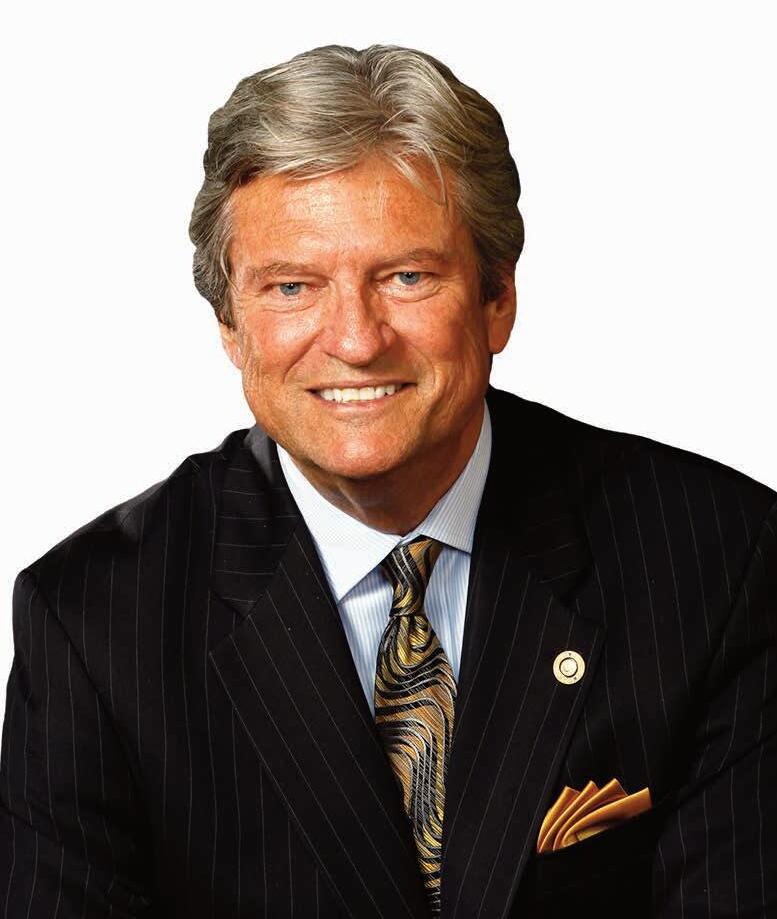
Nowadays, in a highly automated business world, there’s a tendency to focus on converting industry relevant data into ratios, KPI (key performance indicators) variance reports with a few graphs and charts thrown in The focus is on process
Having the right standard operating procedures (aka: process) in any business is important But – having the right people in the right places is mandatory in the business of operating a healthy private club full of life.
At the club, there are two groups of people: 1) Members and 2) Staff
N e a r t h e e n d o f a n o r c h e s t r a t e d i n t e r v i e w p r o c e s s f o r t h e G M / C O O p o s i t i
t i o n s t i l l n
t h i n g l i k e t h i s :
“All of us at this table are comfortable with your ability to work with our members. But, what about staff? How do you treat and interact with them?”
The candidate smiled warmly and laughed right out loud and answered something like this:
“With the greatest of respect, the very question suggests that someone might treat and interact with people differently based upon their position at the club, or life in general. That person is not me
“At this table we have a search committee representing a cross-section of your entire membership. How have we treated and interacted with each other throughout this entire interview process? I’ll be bold in offering that you’ve seen forthrightness, honesty and industry expertise laced with appropriate moments of shared laughter and smiles Well, that is exactly how I treat and interact with every staff member I am honored to work with and serve alongside. I treat every person with the same consistent approach ”
The letters after our author’s name Michael Crandal, CNG stand for: Certified Nice Guy Self-certified, by the way But, a nice guy nonetheless Michael provides meaningful interim GM/COO services and employee development programs. He lives in the Buckhead area of Atlanta, GA www linkedin com/in/michaelcrandal or (760) 464-6103
The club president smiled and said he didn’t know how he felt about being treated the same as a pot washer The candidate shared a smile back and said, “Well, I suppose the pot washer may not be used to being treated like a club president either, but, my guess is everyone will quickly get used to it.”
This true story conveys the importance of focusing on people rather than overemphasizing process
We can take the most detailed and meticulously prepared SOP (standard operating procedures) book, with color-coded departmental indexed tabs, bind it in leather, gold stamp club’s name/logo on the front and place copies in the GM/COO’s office, on the boardroom table and in the employee lounge.
So what? Without the right people in the right places it means nothing. So does that nicely framed organizational chart on the wall. It is lifeless
It all comes down to people – members and staff that combine to bring life to a club.
The vetting process at a fine club for a proposed new member candidate goes far beyond just making sure their checks will clear A vibrant club needs vibrant members, who take pride in being a part of something special and appreciate all the people that make it so.
Club employees are not just simply hired. Instead, they are handpicked and selected! They too will quickly learn that they are indeed part of something special and take pride in professionally treating and interacting with a deserving membership – and each other!
Consistent remarkable member experiences are a byproduct of where the focus really needs to be – specifically, on all the people involved When it comes to club operations, it starts with the GM/COO and goes up, down, around and throughout.
Every club is unique. I am convinced that private clubs are an honorable calling to which we can both belong as well as being employed Private clubs offer the highest and very best opportunity to continually bring out the greatest quality of people and highest level of service available.
I have a great professional passion for the industry and enjoy seeing clubs doing things ‘right ’ But, even a greater personal affection for the people that bring it to life members and staff.
Peter Cafaro Senior VP of Studio JBD responsible for business development and club communications Founded by Judd Brown and Steve McMahon in 1983, Studio JBD with sister architectural firm, Jefferson Group Architecture (JGA), have successfully completed an impressive array of projects for private clubs across the US www JBDandJGA com

In a world of long hours spent in the office or on your daily commute (or trips to the soccer field), where does today’s busy member want to be – outside!
One of the most popular gathering spots for members has become the patio. Whether you are dining al fresco or lounging in an Adirondack chair, watching the big game or enjoying an after-dinner drink in front of a roaring fire, it’s all that much better when it’s outside.
Our clubs, by nature, enjoy some of the most spectacular views of mountains, lakes, oceans, city sky lines and, of course, great golf courses. Use those views as backdrops for all sorts of member activities and events. Most of today’s clubs are adding or enlarging their outdoor gathering capacities whether patio or elevated deck
Expand the flexibility of the space with an outdoor bar and mixed seating groups, televisions and fire pits allowing members to maximize their enjoyment of the great outdoors.
Bring that outdoor feeling right in to your clubhouse with the use of full opening door systems like Nana Not only will you connect in
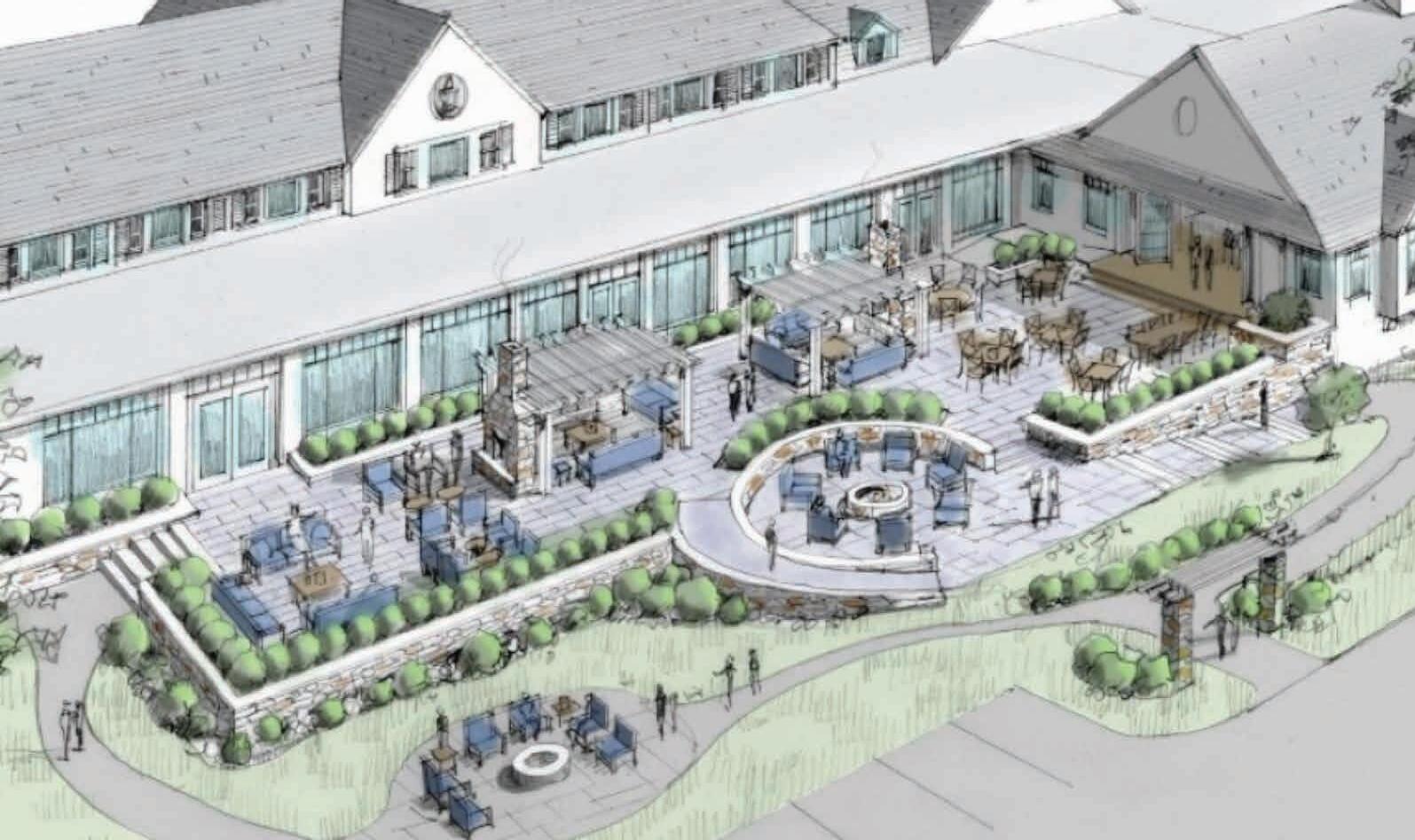
and out when they are open but even closed, most systems’ low-profile design put a lot more glass in place of walls.
With the right combination of accommodations, location, view and events, you will never have to tell your members to get out they will do it all on their own. B R


Bonnie J Knutson Ph D is a people watcher A professor in The School of Hospitality Business, Broad College of Business, Michigan State University, Dr Knutson is a member of the Country Club of Lansing and the Michigan Athletic Club She can be reached via e-mail: drbonnie@msu edu
They don’t learn cursive writing
They get a smart phone in grade school
And they don’t live by the ABCs.
They live by the AAAs and I don’t mean the American Automobile Association, the Agriculture Adjustment Act, or Authentication, Authorization, and Accounting No. Not even close. In this case, they is Generation Z and the AAA they live by is Apple, Amazon, and Alphabet.
Just when you think your getting a handle on Millennials, here comes the next generation of members and employees. And they are a lot different than their predecessors. Generation Z is actually known by several names: Gen Z, Centennials, the iGeneration or just plain iGen. But whatever it is called, this generation is the one that follows the infamous Millennials (Generation Y)

While there are no exact dates for when each generation begins and ends, in general, demographers and researchers use about a 20-year time frame for each cohort
Typically, then, iGens are said to have been born between 1995 to 2005, putting them still in school with leading edge finishing their college years.
But if you believe your club doesn’t have to think about them yet, think again. Although this cohort is still relatively young, they influence about $600 billion of what and
where their family spends its time and money – i.e. that’s about 70 percent of their parents’ spending.
Already they are swaying their parents’ decisions about where to eat, where to have their pool party, where to play golf, tennis or sail, or even if belonging to a club is worth it.
By 2020 – that’s less than two short years from nowthey will represent 40 percent of the world’s consumers
Within the next five years, they will become the fastest growing group in both the workplace and the marketplace. And don’t most clubs work off five-year strategic plans?
Since iGen is still in its formative years, no one can accurately predict how its attitudes, values and activities will impact our clubs. But we do have a glimpse of that future because we do know what key markers have defined them as a generation.
They saw how the Great Depression of 2008 impacted their parents with downsizing, outsourcing, job cuts, and the housing crisis. They watched as skyrocketing educational costs burden their older siblings and friends. They embraced an expanding definition of diversity and inclusion with the legalization of same gender marriage, validation of medical marijuana, passage of the Affordable Care Act, the #MeToo Movement, a growing focus on immigration and the election of the first African-American president Of course, the biggest marker that defines this emerging generation is technology.
iGens have never really known life without the World Wide Web and 24/7 internet access to information and social media, giving them instant connectivity to family, friends, work, as well as what is happening globally or in their own back yards.
They are truly defined by Apple, Amazon, and Alphabet!
Perhaps the Center for Generational Kinetics says it best: “Technology is the core to how [iGen] operate[s] in the world.” It affects and will continue to affect every aspect of their lives, from education to health care to shopping and even to dating And yes, it will affect how they connect with and relate to your club – as a member or as an employee.
Mobility: For them, it is mobility, first, last, and always with smartphones being their favorite way of engaging anyone and anything at any time They have grown used to moving seamlessly between physical and digital space, and
they’ll expect that seamless experience wherever they live, work, or play too
While this may mean your club needs to have 5G internet service today, who knows when it will become 6G or 7G or even 10G down the road. It also means paying more attention to your website or presence on Facebook, YouTube, Instagram, Snapchat, and whatever other communication platform becomes “hot” in the future. These will be your starting points – i.e. they are communication necessities, not luxuries.
Multi-Tasking: We watch as they text-message, surf the internet, microwave a snack, listen to iTunes and download a TV show…all at the same time. Anyone who has a teenager at home, knows this to be true. In fact, it is true for many of us
Fo
At the same time, I’m drying my hair with one hand, brushing my teeth with the other, while standing on one foot because I was using a foot massager on my other one Five tasks at the same time Too many tasks – not enough day. The culprit is, of course, technology. It has made it easier to do several things at once – to multi-task. And because they grew up with mobility, iGen is the most adept of all generational cohorts at this
Life-Work Balance: Ol’ Ernie Ford got it all wrong for this generation when he sang his famous line –I owe my soul to the company store – in the song, Sixteen Tons. For iGen, it is all about life-work balance.
While their two most important career goals are job security and work, they are not putting all their eggs in one basket. For them, rewards are a basic human right and that means far more than just vacation time. It means immediate feedback, it means social time, it means flexibility, it means choice, it means sustainability, and it means that it is all about mobile communication, anytime, anywhere.
iGen is really swimming upstream here considering a recent OECD report that ranks the U.S. 29th out of 30-member countries on work-life balance The report attributes this to long work hours and a lack of social activities
Remember that, for the first time in history, there will be five generations in the workplace and in the marketplace. And this fifth iGeneration is expected to be larger, wealthier and more demanding than any of the four that preceded them.
They will redefine many industries to fit their needs, including clubs So, while iGen is just now beginning to collect their degrees, GMs, COOs and boards should start thinking about their impact on clubs today because iGen will be club members and employees tomorrow. And tomorrow will be here before you know it
Your bottom line will thank you! B R


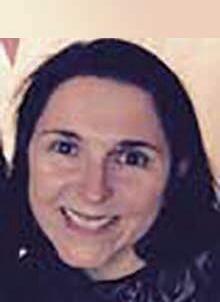
Angela Hartmann is associate director, communications, Golf Course Superintendents Association of America She can be reached via email: ahartmann@gcsaa org
To learn more about GCSAA’s wide range of continuing education opportunities for the golf course management industry, visit gcsaa.org.
The Golf Course Superintendents Association of America has a three-pronged mission of serving its members, advancing their profession and enhancing the game of golf In 2018, GCSAA made big strides in all three areas
For our members, GCSAA expanded its education offerings with new professional development programs for assistant superintendents and equipment managers. In addition, we partnered with the Hays Companies, a leading national insurance and financial services organization, to provide a variety of product and service offerings exclusively to GCSAA members.
Late in 2017, we launched our political action committee, GCSAAPAC, to strengthen the voice of superintendents at all levels of government. We have ramped up our GCSAAPAC efforts this year and continue to engage those who support us, as well as our detractors
These and other new member benefits and opportunities, along with our traditional offerings and long history of member service, have helped us grow and retain membership by offering great value to them and the facilities they serve We have set a goal of having 20,000 members by the end of 2020.
Our current membership is just under 18,000, and we exceeded our membership goals for the first two quarters of 2018 and are on a positive trajectory to repeat that feat in the third quarter. Growing our membership provides a stronger voice when we advocate for and champion the profession and industry.
As the golf industry continues to face challenges such as water conservation, nutrient management and increasing regulatory pressure, GCSAA is spearheading the implementation of state-specific best management practices for golf courses. Good BMPs are based on research, and agronomic research is vital to the future of the game.
BMPs aren’t just a response to regulatory pressures but are a proactive environmental stewardship policy that also provides quality playing surfaces and economic sustainability. BMPs offer science-based responses to commonly held misperceptions about the industry and present a sig-
nificant platform for advocacy, education and recognition for the game of golf.
GCSAA has created a best management practices planning guide and template to help states develop agronomic and environmental BMP programs. The goal is to have 50 state BMPs by 2020. By the third quarter of 2018, 37 states were already at some stage in the BMP process.
GCSAA’s annual Rounds 4 Research auction, administered through our philanthropic organization, the Environmental Institute for Golf, supports turfgrass studies with online auctions of donated rounds of golf. The 2018 auction in May sold more than 1,300 rounds and raised $313,000. The program has raised more than $1 million since its launch in 2012.
Now in its ninth decade, GCSAA knows that the future of golf is also dependent on future golfers In August, GCSAA officially assumed leadership of First Green (www.thefirstgreen.org), which centers on golf courses as environmental “learning labs” for students in middle school to 12th grade.
First Green, which began in the Pacific Northwest in 1997, provides hands-on STEM (science, technology, engineering and math) education at golf courses. Studies fall within the focus of schools’ environmental science and horticulture curriculums
Teachers and golf course superintendents work together to tailor lesson plans to the school’s curriculum. First Green field trip kits and study guides make it easy to quickly organize and host field trips
When the students arrive the golf course environment becomes the star. Putting greens morph into math problems, sand, clay and silt offer lessons in soil science, and small streams transform into living laboratories for experiments with water sources, quality and flow rate
With GCSAA’s network of members from 78 countries and 99 chapters in North America, First Green will be able to expand its profile and be able to reach more young people than ever before
Through enhancing established programs and broadening our reach with new offerings, GCSAA is setting a course in 2018 and beyond that sets the stage for a promising future for our members and the game of golf B R
B I L L B O OT H E
Bill Boothe is president and owner of The Boothe Group, LLC, an independent consulting firm that helps clubs understand computer technology, make good decisions and receive the highest value from their technology investment During his 28 years in the club industry Bill has assisted more than 400 private clubs Bill can be reached at bboothe@boothegroup com

Recognized as one of the greatest, if not the greatest golfer ever, Tiger Woods is still working on his game. So is every athlete –pro, college, high school, grade school, my seven-year old grandson. It’s all about learning, and practice and learning some more, and more practice.
Getting better is a primary focus of sports in general And practice is the in cubator that delivers improvement. Organized practice involves teaching from an experienced coach and exercises that ingrain that teaching into the minds and bodies of the athletes
There is universal agreement that the teams and individuals that perform at their best are well-coached and practice often.
There is also universal agreement that to get the most out of any software program, the user must know how to operate that software. And not just have a minimal knowledge of the software’s features and capabilities, but a full knowledge in order to maximize the performance of the software and the performance of that user
Why is this important to private clubs?
Simple. Every key employee of the club is using one or more software programs Yet very few of those employees have received any formal training on the software they are using. Think of a college basketball team that plays all of its games with no practice, no coaching, no learning. Game after game Season after season What are the chances that team will perform at a high level over time? You know the answer.
Some things remain constant. Knowledge has always paid high dividends Lack of knowledge has always cost an organization – in real dollars as well as in customer service The majority of software programs used by private clubs have a direct impact on member service.
Communications, reservations, billing, websites, apps –all touching members directly, with an ability to satisfy or disappoint. And behind those programs are the club’s staff members, struggling to make the software work with a minimal knowledge of its capabilities.
Imagine a member taking a golf or tennis lesson from someone who knows very little about those sports, much less about how to teach. Or an executive chef who knows
very little about cooking and cuisine. Or a golf course superintendent who knows very little about turf management or course maintenance. Unacceptable of course. But, how about a member services manager who knows very little about how to maintain the club’s website and app. Or a dining reservations manager who is minimally competent in managing member reservations. Or a member billing staff member who knows little more about that software that they were taught 10 years ago.
Acceptable? Fo
e t a r y b u c k e t Enlightened boards and club managers are awakening to the value such an investment adds to each employee’s performance and the resulting improvement in member service and satisfaction B R
“ T h e r e ’ s a l w ay s s t u f f t o wo r k o n .
Yo u ’ r e n e v e r t h e r e . ” – T i ge r Wo o d s
“ I f yo u t h i n k e d u c a t i o n i s e x p e n s i v e ,
t r y i g n o r a n c e ” – A n n L a n d e r s
“A n i nv e s t m e n t i n k n ow l e d g e p ay s
t h e b e s t i n t e r e s t . ” – B e n j a m i n Fra n k l i n
By Heather Arias de Cordoba, associate editor, BoardRoom magazine
BoardRoom magazine annually recognizes the world’s top private club presidents, captains and chairs as Private Club Presidents of the Year, for their outstanding work, their understanding of the industr y, and role and responsibilities of the club’s board of directors In this continuing series, BoardRoom introduces four of the top 21 presidents for 2017
Private club board presidents play a huge role in professional operations of their clubs as a volunteer working diligently with their board of directors and general managers, striving for well informed, but not emotional decisions
This recognition by BoardRoom magazine has at tracted board president nominations from clubs and other nominators around the world
These outstanding presidents exemplify the focus on the leadership responsibilities, the accountabilit y and the management of the board providing a healthy respect for the club’s macro management. They are cognizant of the impor tance of working, ef fectively and ef ficiently, with their volunteer boards and the dedication required from ever yone with whom they work
Key elements of a “good” board include commitment, competence, diversit y, collective decision making, openness, transparency, ef fective communication with the management and the membership, fiscal responsibilit y, development and establishment of the clubs’ mission, vision and policy direction, especially through establishment of a strategic plan
A successful board president draws upon the exper tise of other board members, the club’s institutional memor y and stewardship of the club’s resources As well the board president provides new board members and future board presidents with information they need to per form ef fectively as board members.
Congratulations to these outstanding private club board presidents.


JOHN LYNGAAS, CHAIR
GREY OAKS COUNTRY CLUB | NAPLES, FL
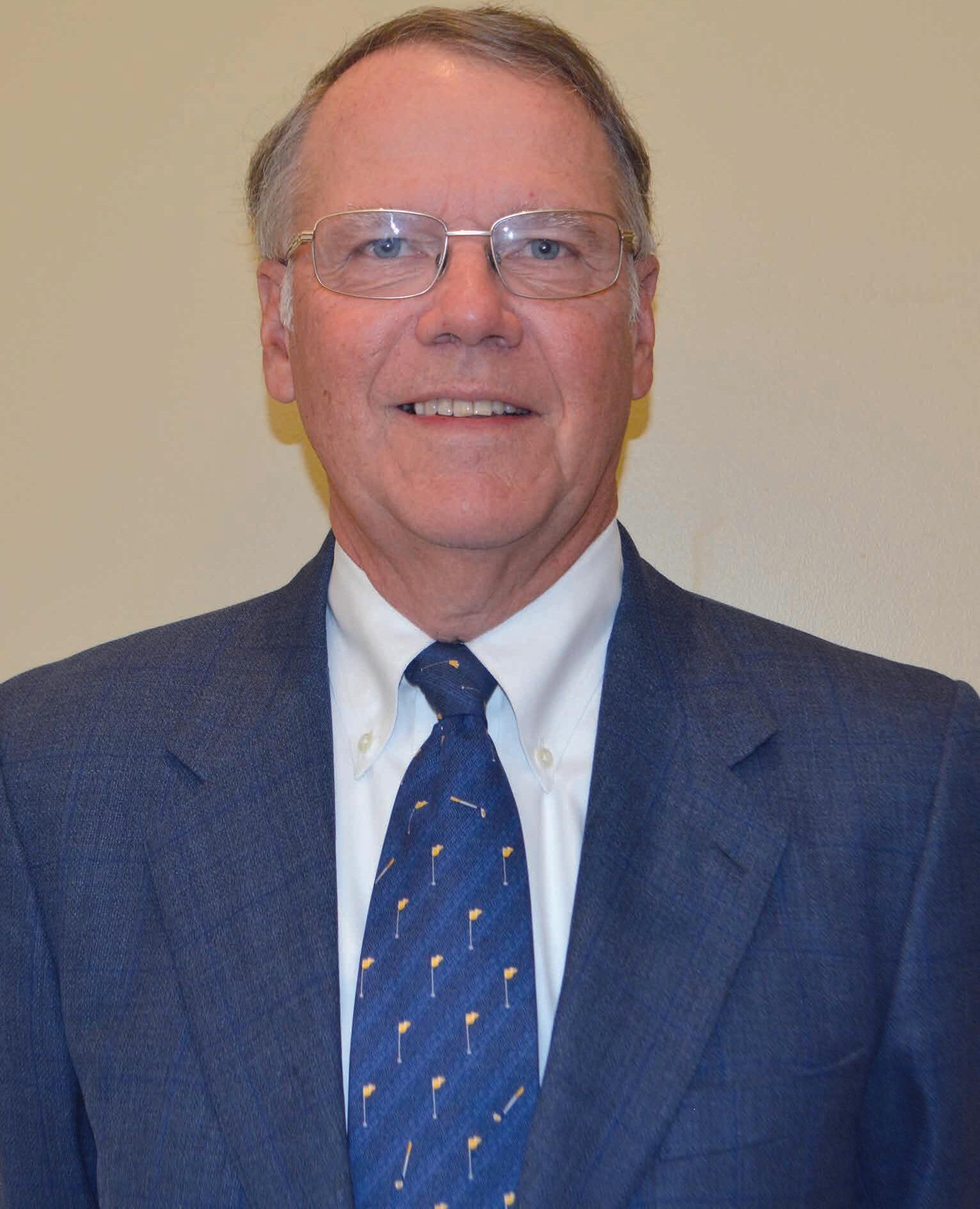

John Lyngaas has worked tirelessly in driving a number of initiatives while serving as Chair of the board of directors for Grey Oaks Country Club.
During his tenure, he, along with former club Chair Steven Hokanson, spearheaded initiatives as part of the club’s $34 million capital improvement plan, along with a focus on development of the club’s strategic plan Chair Lyngaas has also been instrumental in succession planning so that there’s continuity and a smooth transition when new boards are put in place Chair Lyngaas worked with the board-level strategic planning committee and was responsible for overseeing the development of the strategic plan that became a point of focus at the club’s monthly board meetings.
Chairman Lyngaas partnered with the general manager in making joint decisions and coordinating the implementation of board directives under its strategic plan Michael Stott, the club’s general manager/president, leads the staff while Lyngaas leads the board. As a result, the club membership opportunities have been extremely successful, with Grey Oaks now enjoying an entry wait list for golf membership, the first in club history.
Working with the club’s new executive management – GM Stott; Ed McDermott, the club’s chief financial officer and chief administrative officer and human resources director Doug Wernecke – the club’s member experience has improved through expansion and construction of a 300-seat casual dining café, a 30,000 square foot fitness and wellness center, all of which is in response to fulfilling needs recommended by members in the club’s annual satisfaction survey
He is a strong believer that the Grey Oaks staff members be provided the tools to plan and execute the highest level of service for the members and invited guests The club’s recent kitchen renovations increased the ability of the executive chef and culinary staff to deliver what Grey Oaks members want most from their club dining experience, “Fresh, clean and creative fare delivered expeditiously ”
m a ge l eft by I r m a
“John has been a strong leader, keeping all board members and management engaged with each other and working to make our club better His focus, persistence and collegiality have been a great formula for Grey Oaks,” offered one board member
“ The Grey Oaks Board and its processes have improved significantly over the past years It has become more strategic and has taken on many knotty issues These have required intense and, sometimes, incongruous discussions But the best decisions have been made,” explained another member
C h a i r Ly n ga a s j o i n e d G rey Oa
“When Linda and I retired, we searched for the best possible country club to begin our new life When we found Grey Oaks, we knew that this would be our home. With Grey Oaks’ comprehensive and world-class amenities, we have never been disappointed,” concluded Lyngaas B R


APCD believes that effective board leadership and governance requires an ongoing commitment to board development and to a healthy board/ staff relationship.
• Reduce micromanagement
• Minimize board member liability
• Nurture tax-exempt status
• Create a shared playbook
• Focuse on collaborative governance
• Do you believe effective club governance is critical?
• Are you looking to reduce micromanagement in your boardroom?
• Are you concerned about your club’s legal exposure?
• Are you concerned a board members may violate privacy issues?
Contact APCD today!
We can strengthen and support your board! Gordon Welch: (918) 914-9050



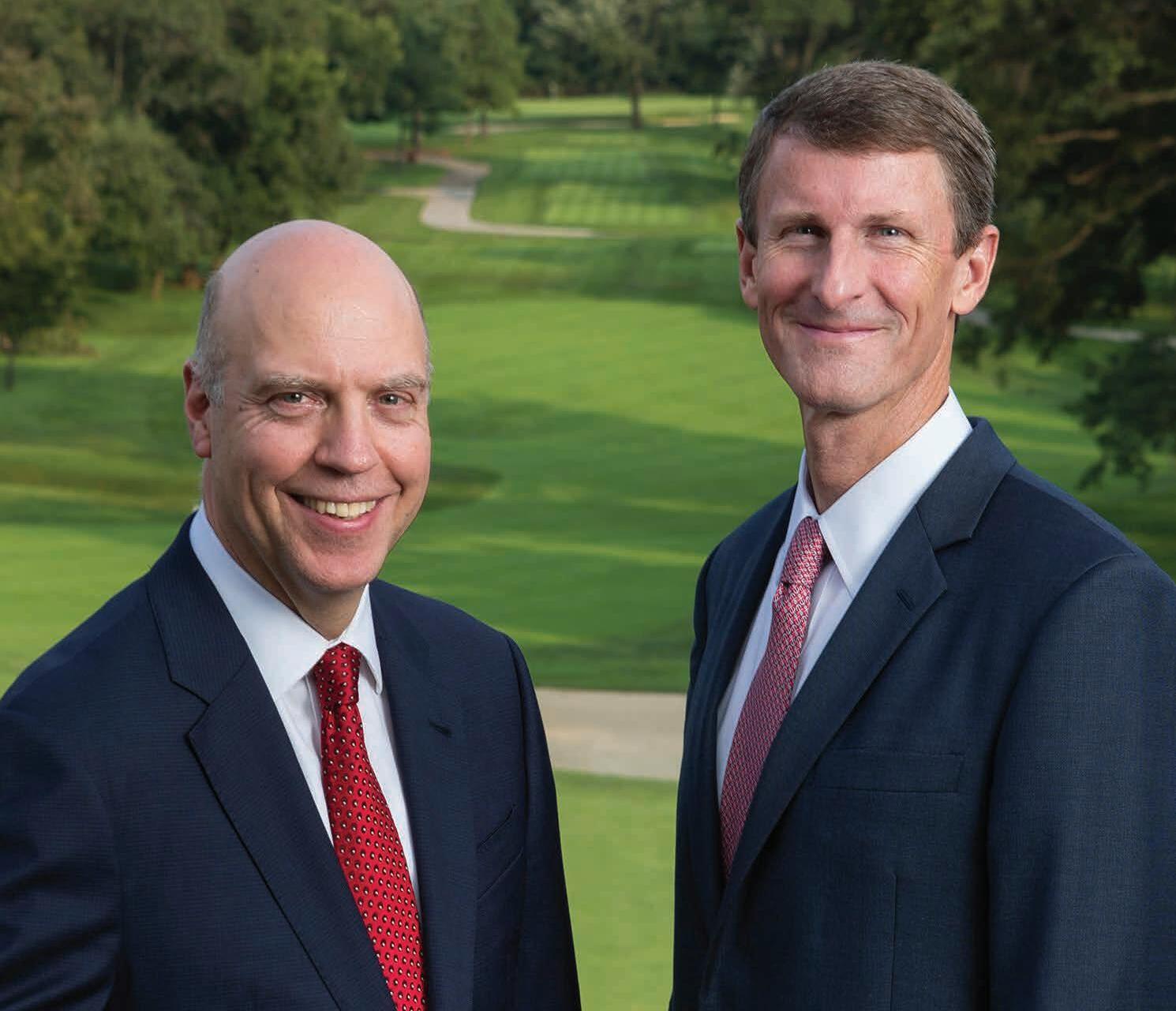
Development of Belle Haven Country Club’s new comprehensive, long-range strategic plan, “A Centennial Vision”, was the focus for Joseph Thomas during his term as Belle Haven’s president
This singular plan identified six strategic pillars upon which the club will concentrate over the next five to eight years Using this established framework, Thomas and the club’s board began to set realistic goals and objectives for the club overall and for the general manager specifically
“It’s been a privilege to serve with my fellow board members and together we helped to set the club on a clear course for future success as we look ahead to our 100th anniversary in 2024,” commented President Thomas
T
e re

t r i b u te d to T h o m a s ’ s fo c u s o n st rateg i c l e ad e rs h i p a n d b e st m a n a ge m e n t p rac t i ce s, a n d h i s u nwave r i n g co m m i t m e n t to ke e p i n g t h e b oa rd o u t of d a i l y o p e rat i o n s
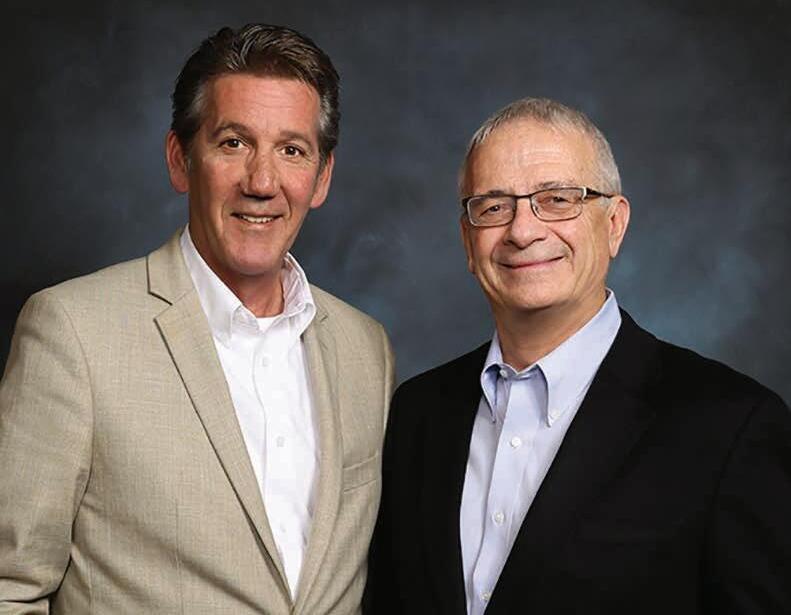
STEVE VL AHOS, GM MARK SABIN, PRESIDENT
Following the recommendations of the club's strategic plan, Thomas worked hard to improve Belle Haven’s governance model He led with the old axiom for successful board members, which is to have their “ nose in and fingers out” of the club’s operations. This has proven to be an effective working model for Belle Haven’s boards and committees.
“President Thomas is the epitome of the consummate private club president,” said Christian Potthoff, Belle Haven’s general manager
“He is a strategic and visionary leader, has no interest or desire to get involved in the daily operations, has only the club’s best interests as a leadership priority, is always professional and even-keeled while very supportive and appreciative of the club’s management team and staff ”
Thomas restructured the board’s communications process and began sending board books out five days in advance of meetings The club has now employed a consent agenda to ensure all discussions in the board are focused on strategy and financials, not routine club operations
During his presidency, Thomas built personal rapport between the board and management staff by scheduling each of the club's management team, including golf, tennis, and fitness professionals, to make a presentation to the board of directors during their monthly meetings
Thomas also made a year-long commitment to communicate regularly with the membership, in an honest and transparent manner, through monthly email updates from the president via the club’s newsletter He lived up to that commitment throughout the year, and then some, adding in quarterly “town hall” meetings to keep members informed about the club’s financial and operating performance
He also enthusiastically participated in the club’s monthly, new member orientation program dinner, to personally meet and welcome new members … helping to educate them about the club's traditions and culture.
He developed a new culture mnemonic called “HAVEN” that highlighted Belle Haven’s culture in terms of Hospitality, Attitude, Values, Escape and Nostalgia The cultural statements attached to these words highlighted what the board desires members and guests to experience when they are at their club
Thomas has been an active member of Belle Haven Country Club since 2005 when he and his family moved to Alexandria, Virginia He has been an active user of Belle Haven’s Fitness Center with his daughter Hannah (19); a regular golfer and recent winner of the Father-Son Golf Tournament with his two sons Will (17) and Sam (15), and frequent diner with his wife, Diane B R

top presidents for 2018.
Sabine, president of Mission Viejo Country Club in Mission Viejo, CA, initiated a program which allows the club to sell out of equity memberships and the revenue allows the club to establish a capital improvement fund for the first time in the club’s history
The achievements by President Sabine and the club’s board were made by working with and listening to the club’s management. This enabled the board to provide management with the tools to bring success to MVCC.
a l l re co rd e d a l l -t i m e at te n d a n ce re co rd s
T h e c l u b’s re se r ve m e m b e rs h i p, w h i c h i n c l u d e s te n n i s a n d so c i a l m e m b e rs h i p c l a sse s a l so ac h i eve d a l l t i m e m e m b e rs h i p h i g h s
Pre s i d e n t S a b i n e ’ s co n se n s u a l l e ad e rs h i p st y l e foste rs s h o r t a n d p ro d u c t i ve b oa rd m e eti n gs a l l w h i l e a l l ow i n g t h e b oa rd to set a l o n g-te r m d i re c t i o n fo r t h e c l u b i n co n j u n c t i o n w i t h c l u b m a n a ge m e n t By wo r k i n g a s a te a m , t h e re h a s b e e n a ‘ b u y- i n ’ f ro m by b ot h t h e b oa rd a n d m a n a ge m e n t , i n s u r i n g s u cce ss rat h e r t h a n a n ‘ U s ve rs u s t h e m ” m e n t a l i t y
President Sabine, an entrepreneur with a sales background, started a robotic manufacturing company in his late 20s Married to his college sweetheart for 43 years, Sabine also participates in member-guest tournaments with his son as his regular playing partner B R

President Judith Stant, in 2016, kicked off the start of her two-year term as the club’s membership adopted a 10-year master plan It all started with the renovation of the club’s golf operations building and construction of a new sports/fitness center, and the Boathouse Restaurant
This happened as the club’s general manager moved to a new position out of the state, meaning President Stant had to shift focus and lead the board of directors in a search for a new general manager The appointment of Nicholas von Hofen, formerly the club’s director of golf grounds and building maintenance, as general manager followed

Stant also set out clear expectations and objectives for the club’s board by introducing a board retreat led by Kurt Kuebler of Kopplin Kuebler & Wallace Board goals and objectives were established, and the club’s committee charters were also updated Other accomplishments under the leadership of Stant and von Hofen:
Updated the club’s website and introduced a new mobile app for the membership
Helped launched a new marketing plan
Effectively communicated club updates with the membership during the Hurricane Irma aftermath
Brought continuity to the board of directors through goal planning and focus on strategic items, not on day-to-day operations
Participated in our annual Employee Appreciation Day
Achieving 2017 Distinguished Club designation through BoardRoom Magazine
The club in 2017 also initiated a membership satisfaction survey for the first time in five years, which indicated the members were extremely satisfied with all areas of the club
President Stant’s culture instills clear measurable goals with a focus on membership satisfaction, excellent service with a trained staff with the objective of consistently delivering amenities that exceed expectations. The board’s focus on developing long term and strategic goals along with setting policies for the club. President Stant challenges the board not to get into day-to-day operations which allows the general manager to lead operations and report back to the board with updates and necessary action items.
"Judy has brought a level of professionalism and elegant competency to the President’s role at Colliers Reserve Country Club that has made us all very proud Combining her outstanding communication skills with a persistent commitment to quality and member satisfaction makes her a very hard act to follow," expressed Norm Thompson, the club’s president in 2009-10
“With Judy’s visionary leadership, conscientious attention to detail, and persuasive communications skills, Collier’s Reserve now enjoys unprecedented membership levels, state of the art facilities, and bright future based upon a solid long-term financial and strategic management plan,” said Peace Conant, facilities co-chair
"For the past three years Judy Stant has provided Colliers Reserve with dynamic and focused leadership Under Judy's tenure CRCC has completed significant facility upgrades, provided enhanced membership programming while improving member satisfaction,” explained David Bupp, the club’s finance chair
“Judy has directed the completion of a modified long-range plan that will be executed in the coming years including clubhouse refurbishment and renovation of CRCC's Audubon Signature golf course "
President Stant joined the club’s board as human resources and programming chair in 2015 She also served on the governance, green, membership and facilities committees before her tenure as president B R


“Hi Steve, Juan, George. Hi there, Betty, how are you doing?”
It was noon and Melissa Giordano, a board member who chaired the house committee, had just dropped into the club’s kitchen before enjoying lunch with her foursome, to visit with her “family.”
Steve, Juan, and George were behind the line working to keep up with the orders, each looked up from their tasks to acknowledge and smile Betty was at the station preparing her tray for delivery as Mrs. G. approached and put her hand on Betty’s shoulder “Oh, hi Mrs G I’m OK ”
Mrs. G sensed that all was not right with Betty and pressed, “Betty, is everything OK, you seem a bit down ” “Oh, I’m OK.” “Really, Betty, I think something’s going on Tell me about it ” Betty now turned away from her duties to look at Mrs. G., “Jimmy got promoted.”
“Wow, Betty, I can see that you’re disappointed Did you speak to Dan, your super visor?” “No, he just told us about Jimmy getting promoted ” “Betty, you’re one of our super stars, I’ll talk with Chris about this and see what’s going on ”
With that Mrs. G. turned on her heels and pushed through the double doors
What we have here is something similar to grandparents, parents, and children Grandparents can visit with the grandchildren, bounce them on their knee, tell them stories and add value to the children’s lives. They can also “correct” (in their eyes) parenting failures.
Any parent whose own parents are active in the lives of the children understand this paradigm: the confusion, stress, and, sometimes, resentment, that can occur when grandparents step into the role of parenting. In this situation Mrs. G. is the grandparent, Dan and Chris are the parents, and Betty is the child
Grandparents often don’t understand the dynamic between parent and child, the on-going teaching or the relationship that has been built. By attempting to momentarily parent the child, they can often cause a rift amongst all the participants.
a n d m a n a g i n g .
In this case Betty had eight years of experience as a waitstaff person Dan, her supervisor, had a solid relationship with the service staff and had made the easy decision to promote from within for the role of service captain. Dan chose Jimmy, a young person who had been on staff for two years Jimmy, a graduate of a local four-year hospitality program, had shown great interest in learning, growing and accepted responsibility well.
B e t t y h a d b e e n ve r y h a p
a n d h a d n o t s
n e g a t i ve l i g h t .
There were many members, such as Mrs G , who enjoyed the relaxed and casual attitude that Betty portrayed at the table, and others who felt that she was way too informal for this level of club – as usual, some members loved her, and some asked for others.
Dan made the promotion after a great deal of thought and discussion with general manager Chris – the decision was Dan’s to make and Chris was in support. And the paradigm was about to shift again…
“Chris, what’s going on with Betty? I heard she’s going to quit. She’s a real asset, Chris, we can’t lose her. What are you doing about it?”
G M C h r i s w a s t a k e n a b a c k by c l u b p r e s i d e n t B i l l ’ s c o mm e n t a t t h e c o n c l u s i o n o f t h e i r u s u a l M o n d
g r a n d p a r a d i g m
While Chris was fully aware that Betty was disappointed at Jimmy’s promotion, Chris was unaware of the conversation between Betty and Mrs G and certainly the follow up between Mrs G and president Bill
“Well, I agree, and you make a good point that Betty is a keeper. Let me look into this further and get back to you.”
Chris could sense that Bill had a lot on his mind, was in a bit of a negative frame-of-mind, and that he might be more receptive to a discussion on the roles of directors at another time.
Chris and Dan had both spoken to Betty about her progress. Betty was clearly very comfortable in her role as waitstaff person and was not qualified, nor interested in pursuing a role as captain. However, it is understandable that the reality of seeing someone promoted can cultivate feelings of insecurity and self-awareness which may bring on a bit of sadness
Mrs G had caught Betty during that moment of realization. Now Betty was in a pickle…she really did not want the added responsibility, felt very unsure of her own ability, and now had directors and the president pushing for her promotion – word had spread of her “disappointment” and morphed into her quitting – Yikes! No one was happy about this situation.
Normally, when a director veers off the path, Chris would talk with Bill, however, in this case and at this time, Bill was not going to be receptive to logic. Chris knew that the best way to address this problem was with Bill, but at a time when he would be more receptive to a discussion




Later that week Chris found Bill in a far better mood and after some casual conversation took him aside and talked about the issues raised by Mrs. G. Chris explained the process to promote, Betty’s status and the decision to select Jimmy
Chris also touched on the issue of Mrs. G. entering the kitchen and inserting herself into a personnel issue. Bill was receptive and understanding of the situation. He assured Chris that he would talk with Mrs G and help her to understand the complex nature of her actions.
Personnel issues are always tricky. First are myriad laws and requirements that must be followed and secondarily are the consequences of stepping into the role of grandparent While members mean well, the consequences can be far reaching.































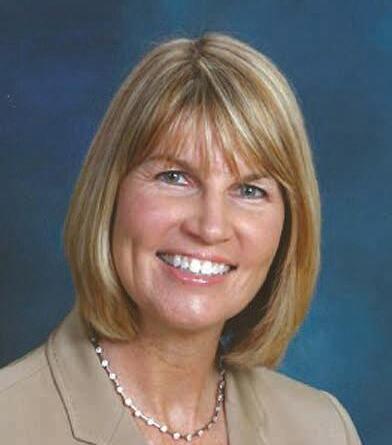
Lisa Carroll is a search executive and consultant with Kopplin Kuebler & Wallace, LLC, a consulting firm providing executive search, strategic planning and data analysis services to the private club industry She specializes in executive chef searches Lisa can be contacted at (561) 596-1123 and at lisa@kkandw com
Great news! Your number one applicant for executive chef has a cce p te d yo u r j o b o f fe r a n d i s p l a n n i n g to s t a r t i n 3 0 d ay s ! N ow w h at?
Typically, there is a gap between the time that a candidate accepts your job offer and their first day at the club. This is an invaluable opportunity to connect with the candidate and build loyalty and excitement I call this “minding the gap ”
To mind the gap, provide a warm welcome and give the candidate a taste of the enlightened hospitality that you want them to embody when they commence their (hopefully) long tenure at your club I cannot think of a better indoctrination into the culture of the club and the team then to share club hospitality before your new team members start.
• Send the candidate’s spouse a welcome and thank you note along with club logoed merchandise and even a house warming gift if they are moving to the area.
• Have team members, who will be working closely with the candidate (peers and subordinates), send handwritten notes to the new team member. Can you imagine getting welcome notes in the mail from peers and subordinates? Talk about a “wow!”
• If you are working with your management team on a reading assignment, send that book to the candidate so they can get caught up. Leaders are readers!
Employees at all levels can benefit from minding the gap – not just managers. One of the issues we hear from clubs
I f t h e c l u b i nv e s t s i n t h e e m p l o y e e b e fo r e t h e y e v e n s t a r t ,
t h e e m p l o y e e w i l l s e e h ow m u c h t h e c l u b t r u l y c a r e s a b o u t t h e m
a n d t h e i r f u t u r e . No t o n l y d o e s m i n d i n g t h e g a p w e l c o m e
n e w e m p l o y e e s a h e a d o f t h e i r s t a r t d a t e , i t d i f f e r e n t i a t e s t h e c l u b
f r o m o t h e r p o t e n t i a l e m p l o y e r s .
This list provides some recommendations on how to mind the gap with your new employees who are about to commence employment at your club:
• Send documentation for the candidate to review for a more thorough understanding of the current status of the club. If they haven’t already received it, send documentation such as financials, menus, core values, satisfaction survey results, employee handbook, historical information, event calendar, strategic plan, etc. This will provide the new employee with a solid foundation regarding where the club came from, where it is now and where it is going before they even start
• Provide biographies of the staff that the candidate will be working with – superiors, peers and direct reports.
• Send club-logoed merchandise such as hats, polo shirts, t-shirts, etc , to show that you are invested in them and to build excitement and loyalty for their new club
are no-show employees – those new employees who are hired but don’t show up for their first day of work.
Consider a little extra investment on the front end by minding the gap to build connectivity and loyalty If the club invests in the employee before they even start, the employee will see how much the club truly cares about them and their future. Not only does minding the gap welcome new employees ahead of their start date, it differentiates the club from other potential employers.
t h e i r f i r s t d a y o n t h e j o b .
So, the next time you hire an employee at any level, consider creative ways you can mind the gap to showcase the club and develop a loyal, long-tenured employee B R


Ross Liggett is director of marketing & revenue management for Landscapes Unlimited He supports property-level sales, marketing and revenue-generation strategies for the firm’s portfolio of more than 40 golf properties
A few months ago, a few of my friends invited me on a fishing trip to a famous trout stream in Colorado Work and family commitments prevented me from going. As is normal in 2018, I was bombarded by a steady stream of Instagram photos and videos documenting big trout, cozy campfires and good times. I felt like I had really missed out.
After actually speaking to my friends, however, it turns out very few fish were caught, one of the rafts endured a near-catastrophic deflation, and the weather was mostly cold, r ainy and very windy. The trip wasn’t nearly what it appeared to be on Instagram.
I was not alone in feeling as though I had “missed out ” In fact, Google Dictionary recognizes Fear of Missing Out (FOMO) and defines the term as FOMO, noun anxiety that an exciting or interesting event may currently be happening elsewhere, often aroused by posts seen on a social media website. FOMO goes well beyond social media and Millennials. Daniel Kahneman won a Nobel Prize in Economics for his study of human decision-making, of which Loss Aversion Bias was a major component. His book Thinking Fast and Slow covers decades of rigorous, scientific research on the subject. Today, it’s the foundation of modern understandings of decision-making.
What does this mean for private clubs?
Your club is in the business of creating an enviable experience. It could be your incomparable golf course conditions or layout; it could be your food, service or wine list; it could be your resort-style pool, kid’s program or pickleball league
It’s likely some combination of those and more, but the bottom line is that your club exists to deliver experiences that are not available elsewhere. In other words, you are in the business of creating FOMO-worthy experiences – and your social media strategy needs to reflect this imperative
Every day clubs are delivering exceptional experiences to members Clubs must take the time to map the nuance and singularity of their experiences to specific prospect groups, and tailor messaging accordingly. Further, clubs must encourage their membership base to do the same –creating FOMO moments among their friends and relatives
The chart opposite plots different club experiences along a dualpronged continuum – the X-axis represents how social each event is, while the Y-axis represents the balance of competition versus fun
Plotting your unique experiences similarly will help you develop messaging that better targets prospective members.
The goal here is to connect the right message with the right experience and deliver it to the right prospect This will create FOMO among your prospects! Follow these steps to develop a broader social media content plan that aligns your messaging and experiences:
1. Identify your differentiators – First, determine your top five plus unique differentiators (the things that best elicit FOMO) and map them on a chart, as above
2. Develop a plan – Next, determine which differentiators will resonate with prospects, then build a thoughtful calendar that regularly mixes content related to each differentiator
3. Schedule posts – Social media success is dependent on planning your content rollout. Use a calendar (or one of many content platforms) to plan your posts at least two weeks in advance Be thoughtful about what content is posted and when. Posting just before scheduled events will make your content timely and meaningful.
4 Pay attention to engagement – Finally, don’t just post it and forget it. Social media is SOCIAL! It’s more like a walkietalkie than a bullhorn. Did a non-member like one of your posts? Take the time to follow them; they just might follow you back and give you the opportunity to deliver more engaging content moving forward Then, if they do follow you back, take a moment to send them a direct message, inviting them to the club.
Most everyone does a great job creating the unique and memorable experiences that appeal to Millennials Follow these steps to be a little more strategic and thoughtful with your content, create some FOMO and watch as your pipeline grows B R

Mike Phelps is principal and co-founder of Pipeline, a marketing agency for membership clubs, residential communities and unique experiences www pipeline-inc

I don’t know you, but I do know what you’ve never done. You’ve never said to a friend, “Let me tell you about a perfectly adequate experience I had recently.”
Branding done well, starts conversations that matter. And the best way to create these conversations is to have a brand that prompts something unique
Our firm has spent a good deal of time with a number of clubs helping them define and amplify their brand, and we’ve discovered an interesting pattern. Most clubs don’t realize the full benefits from word of mouth referrals simply because they give members, guests, staff and vendors insufficient raw materials for conversation. Their story isn’t good enough.
The best brand stories contain a compelling and dynamic differentiator, or brand prompt, that sets your club apart in ways that incremental upgrades to service, amenities or even price reductions cannot In fact, when you fail to have a meaningful experiential differentiator, you have a much harder time charging any sort of premium, because cost becomes the sole basis of comparison.
For example, Tradition Golf Club in La Quinta, California is an unbelievable hallmark to Arnold Palmer, and where he called his west coast home Imagine pulling up to the front gate as a guest or vendor and being greeted by a smiling security officer who offers you an ice-cold Arnold Palmer It’s a simple, yet highly effective way to create an experiential differentiator.
Of course, to be effective implementing brand prompts requires both great process and great mindset It is
In his book ‘Create Distinction’ author Scott McCain writes, “Customers will always find a point of distinction, therefore if you fail to outline one for them in compelling fashion, they will go to the worst possible distinguisher for you price ”
Getting noticed in today’s competitive, distracted world is more vital than ever to a club’s sustained growth and profitability. Clubs have long been focused on providing the best member experience in every respect Of course, that’s always wise as poor quality and service diminish retention But to be relevant today, clubs must now also focus on creating and propagating a truly differentiated brand in order to prompt the right conversations.
When it comes to generating word of mouth, different is better than better. That’s because we are physiologically conditioned to discuss what is different and to ignore average.
Improved service is not a competitive advantage. If everyone has the best members…what’s your edge? If everyone has good service or great food, is yours so much better that it’s a deciding factor for potential members? For a brand prompt to spread beyond the first telling, it has to be inherently more interesting than a core attribute or an updated amenity. It should be unexpected and worthy of a story.
exceptionally rare for a great brand prompt to be activated and immediately thrive. All branding needs evolution, optimization, refinement and feedback There are costs involved and opinions to be weighed. You need to be in the right mindset to avoid frustration and help sustain the momentum
As an industry, we can do much better than just being better. Let’s do different Not for different sake, but to meaningfully attract a new wave of interest in our clubs, and share what makes all of our clubs special and unique Let’s do so with a plan and a purpose Let’s build club brands that prompt meaningful conversations. We are committed to helping our industry do this better than what’s expected care to join? B R

Steve Graves is president of Creative Golf Marketing The company specializes in membership development strategies to enhance membership growth, membership retention, and financial success for its private club clients Contact CGM via email at www CreativeGolfMarketing com or 800-526-8794
The economy is booming and consumer s have discretionary income they are looking to spend on their social and recreational lifestyle.
Private clubs of all types (including golf, country clubs, city clubs, tennis clubs, ski clubs, etc ) are seeing robust membership growth However, successful consumers are not joining private clubs without a great deal of thought and consideration.
Private club members have very specific expectations of what private club life should be for them. If those expectations are not met they will not join the club initially or will resign from their club without any regret
So, private clubs in 2019 should continue to focus on the 21st century needs and demands of their current and potential members. And, without question, private clubs evolving with their recreational amenities, recognition of attitudes/beliefs of Millennials, ever changing social structures and forward-thinking strategic planning are enjoying vibrant memberships and strong financial performance.
capital expenditures focused on “non-golf offerings”, including bocce, paddle tennis, health and fitness, al fresco dining and technology to name a few.
We all know when clubs think about new membership growth, they merely are seeking those with the top line revenue generated by a full privilege membership. For those on the finance committee the term of “full time equivalents” tends to be their main focus.
For those in finance at a private club, this is usually the only definition for the success of new member growth each year. However,
However, golf is no longer the only important amenity, although golf will always play a prominent role as the recreational cornerstone for private golf and country clubs. However, new prospective members are also looking for a much more diverse and expansive private club offering for their social and recreational enjoyment Non-golfers are also attracted to the lifestyle with others of similar ages, interests and activities (think family and young children).
Private club consumers are demanding strategies that connect them to the club and are an extension of their current lifestyles They desire programming that coordinates to how they live and enjoy life (casual dress, music on the driving range, USB port on golf carts, comfort food, high speed internet, kids’ clubs, etc.) so that they do not feel the need to compromise their lifestyle beliefs because they joined a private club
Private clubs need to focus on unique capital expenditures and longterm strategic planning. Again, not simply concentrating on “non-sexy” “deferred maintenance” but rather cutting-edge strategic planning and
private clubs today are enjoying enormous success in memberships being purchased by “non-golfing members.” These social/Sports members are people who were viewed with disdain or completely ignored by the private club industry just a few years ago.
However, private clubs are now realizing the multiple merits of this “non-golfing” member. Clubs are now thrilled to see these consumers using a social/Sports membership as a new “gateway” to a higher dues/initiation fee relationship with the club.
There’s no question, golfers are very passionate about their sport and play a key fi-
nancial role in the success of a private golf and country club, yet a growing number of new members are no longer only interested in a “full golfing” membership. Consumers today are closely analyzing the membership offerings of private clubs and choosing the membership classification that best fits their desired relationship
Private clubs are now embracing the financial importance of their social/sport members who may be “dipping their toe in the water” rather than simply a net to catch downgrading older members
We challenge private clubs to look at social members not simply as a fraction of full-time equivalents, but as an opportunity to potentially cultivate and nurture that member into a full privilege membership down the road When a club has impressed this member thoroughly with its social programming and the wonderful, welcoming environment around the club, it provides these members with the opportunity to envision a long-term experience and lifestyle
I
Believe it or not, Millennials place enormous value on the exclusivity and social relationships they can experience as a private club member
We are seeing Millennials joining private clubs in droves Private clubs that are forward thinking and offering lifestyle experiences that coincide with their beliefs and lifestyle desires are enjoying considerable membership growth success
However, long-term loyalty is not a dominant characteristic of Millennials, which presents a significant challenge to anyone who hopes to capture this invaluable consumer and keep their attention, engaged and involved
Ignoring this consumer today may potentially cost your club dearly in the future by not adapting to an ever-changing societal environment
While it always comes down to providing a unique and fulfilling lifestyle experience, nationwide, private clubs will need to get even better at providing a private club experience to a demanding group of consumers that represent the future of the industry
Private clubs that are adapting and evolving are flourishing in this “speed of light” world for which private clubs find themselves today. B R

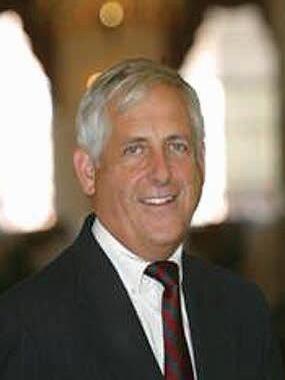
Ted Robinson is a partner with Private Club Associates and can be reached at (478) 741 7996 or via email: tcr@privateclubassociates com
“Recruit entrepreneurial leaders and give them freedom to determine the best path to achieving their objectives On the other hand, individuals must commit fully to the system you use and be held rigorously accountable for their objectives. You give them freedom, but freedom within a framework.” —Good to Great, Jim Collins
Now, in Part III of this series, it’s time to get into the actual job part of the “framework.”
Part I – “Starting from Scratch” (BoardRoom November/December 2017) – described the overall membership marketing process. Part II (BoardRoom July/August 2018) dealt with knowing “who the club is” (the vision, mission and brand position) and how the membership director must personify those statements.
So, now we start with the membership director’s job description. Having an effective job description is critical to hiring the right person For anyone to be successful there must be clear expectations The job must be what the club needs and what the employee wants to do. Many readers may recall starting a job and then every day learning of a new task – not fair and just rolling dice toward success Before you start your search design the job description to meet the needs of your club
It is important to emphasize that this is a “sales” position. The language we use should be private club-appropriate vernacular, but nonetheless the mission is sales and should be approached as such (Only hire someone with “sales DNA” - sales people have a different mindset It is easier to train a cell phone salesperson about the club as a product than it is to train someone from a non-sales discipline to sell).
A good job description is conceptual – not an inventory of tasks There are four key parts, the job description’s “big buckets ” First is a preamble with the vision, mission and brand position statements (See Part II of this series) and how all decision, effort and work must be compatible with these documents.
There should be a very clear depiction of the organization chart and reporting lines of authority. To whom does the membership director report and who reports to the membership director (membership coordinator, receptionists)? Second” is the position summary describing the club’s expectations - meeting or exceeding established goals for new member sales; building and meeting the membership budget; assuring the successful execution of membership marketing events, serving as ombudsman to the members, and being the club ambassador.
A key expectation that should be noted here is assuring all new members are brought into and included in the club’s social fabric
The third part is the processes and procedures section including establishing the membership marketing goals and budget; planning and executing prospecting events; conducting new member orientations; and being certain all staff members are cognizant of the need for and processes by which the club obtains new members
Other components here include community relations and market intelligence – always being aware of the competition’s products, pricing and promotions; and the responsibility for assuring all membership related collateral (brochure, website) and documents (membership application, dues and fee schedule, bylaws, rules, etc ) are relevant and legally up to date and in keeping with the club’s brand position.
The membership director may be tasked with internal market intelligence – membership surveys, event surveys, focus groups and assisting the general manager in maintaining an excellent member/club relationship. The membership director could also be assigned to ensure available tools and technologies are current and being consistently used and with staying abreast of and recommending new tools and technologies that could improve operational execution.
Part four is required qualifications including core competencies and position specific competencies
There are a number of membership marketing job description templates available and you can get a complimentary one from PCA by sending an email to me: Ted Robinson, tcr@privateclubassociates com The next article in this series will address standards of operations and performance (SOP) for the membership director B R


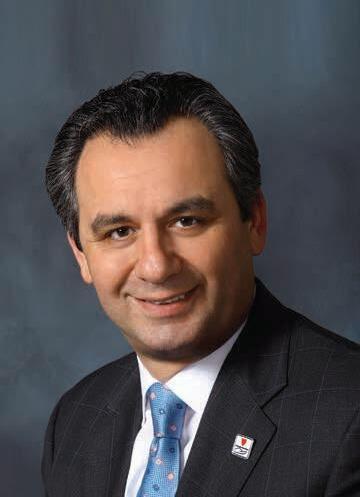
Robert A Sereci, CCM is GM/COO of Medinah Country Club, located in Medinah, IL He can be reached at (630) 438-6825, or via email: rsereci@medinahcc org
During my son’s (Dylan) senior high school year, he provided me with my “Cats in the Cradle” moment when he announced his intention of majoring in hospitality management at the University of Wisconsin Stout.
My first gut reaction was to talk him out of it and to guide him in another direction. His mind was set, his mission was resolute. He left me in no position to rebut or debate. So, what advise does a father give to his son who wants to follow in his footsteps as a club manager. Here’s what I shared with Dylan:
Start with why: Why is it that you want to do this? Don’t tell me that you like people or that you like the golf or restaurant business
Please don’t tell me that you are passionate about the club business because it will not be enough - trust me! Your passion is important, but it will not sustain you your entire career
Finn (our Golden Retriever) is also very passionate when he wants to play ball, but after an hour or so he wants nothing to do with the
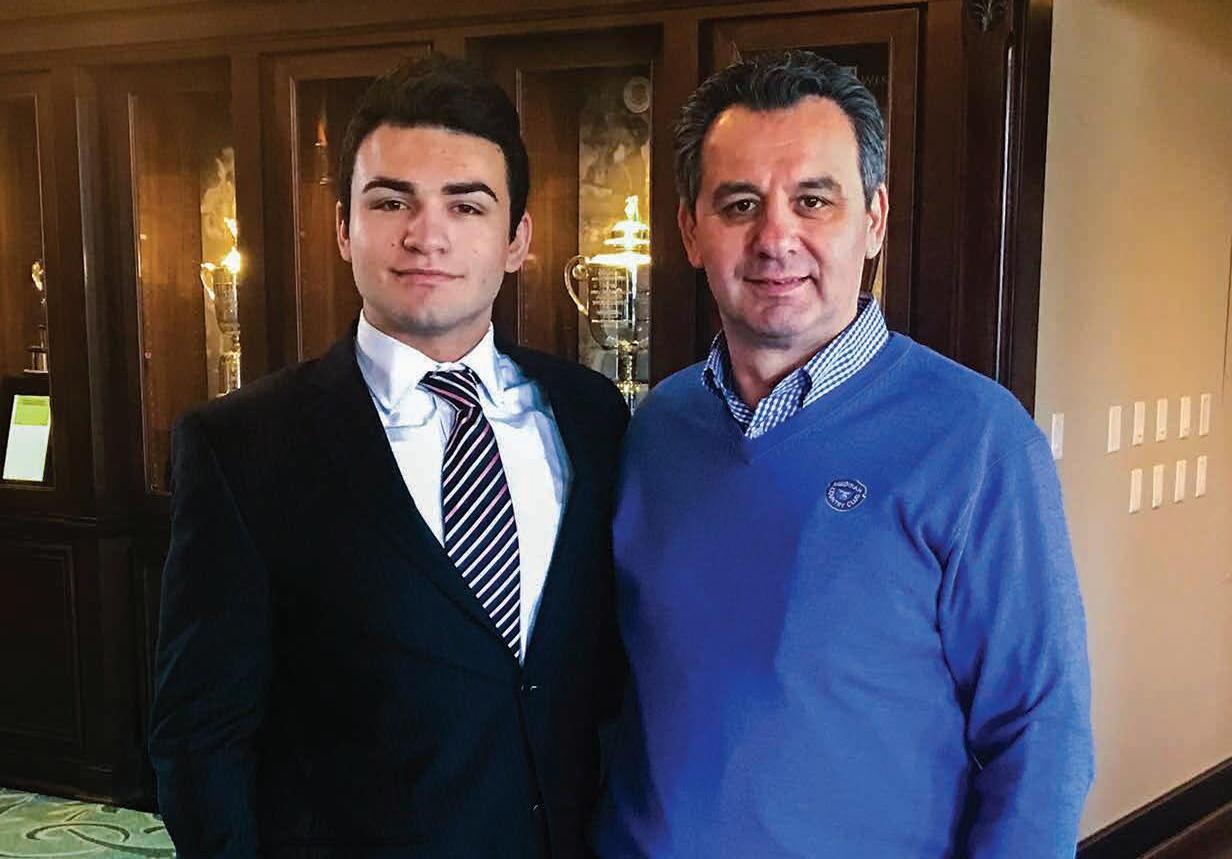
ball and that’s the downfall of passion. You see, passion comes and goes and when things get tough and you are tired and exhausted it will take a lot more to keep you going And by the way, it’s not your employers’ job to fulfill your passion.
My advice is that you find purpose in what you are doing. I’m in this business because I want to make a difference in the lives of the people I serve and the people I lead That’s my purpose and no amount of hard work, stress, criticism or politics will change that. That’s why I get up every morning and look forward to coming to the club. What’s your purpose?
Pick mentors and not clubs: You will be tempted to work in clubs that have great recognition and it will feel like a badge of honor to work for those clubs. The problem is that not all those clubs will teach you the essentials of your trade or contribute to your purpose A club is only brick and mortar – that’s it.
My advice to you is to look for mentors first and forget what the club’s name is on the front gate What matters is who is working at the club Who will be responsible for teaching and mentoring you? Does the club professional have a reputation for teaching and mentoring? Your responsibility is to apply what they teache you and make them look good in return
Chances are your boss will not hold your hand every step of the way and that’s a good thing. Put your head down, learn your craft, work hard and be so good that your boss can’t ignore you One more piece of advice on bosses, graduates make the mistake of trying to impress the members and they forget who they work for and with Accept the fact that you know very little: When you graduate, you will have enough knowledge to be dangerous. Like the great major league baseball manager, Earl Weaver once stated, “It’s what you learn after you know it all that counts.”
My advice to you is assume you know very little or nothing at all. Your boss didn’t hire you because of what you know Your boss hired you because they feel you have potential and are worthy of the investment that they are going to make in you over the next three to five years.
It’s all about mastering your craft and growing professionally, which you will do for the rest of your life Your learning is never ending
Understand how clubs keep score: Everyone will tell you that we are in the service business and that the members are the most important. That may be true, but to you, your staff is the most important
You will be tempted to look good in front of your boss or members. You will even believe that singlehandedly you are making a big difference and that you will make sure everyone notices you
My advice to you is to focus on your team members because they are the most important to you and your career. You can only touch so many members in a day. Take care of your team and the team can touch exponentially more members then you.
For them, members come first. President Reagan once said, “Success is achieving as a team and not caring who gets the credit ”
Never underestimate the power of like: There is a good chance you will work for someone who will tell you that it’s more important to be respected then liked. Don’t believe them – they are absolutely wrong
My advice to you is that in the club business, relationships are more valued then skills. Members will naturally gravitate towards employees they like first and foremost. You will notice that in many clubs there will be employees who have been promoted over the years not because they were great at their jobs but because the membership and staff like them.
That reminds me, I need to explain the concept of sacred cows to you Best you learn the concept from me then the cows themselves Chances are your team will not consist of professionals with MBAs, rather than ordinary people who care deeply about the membership and who work hard to provide for their families.
The average dishwasher, greenskeeper or busser, doesn’t know the difference between the two. They will always work harder for you if they like you.
Welcome to the world of grey: If you think that the club business is black or white, where everything is done the same way for everyone, think again. The reality is that the club business is anything but, it’s actually a world of grey.
My advice to you is to have an open mind and don’t rush into making decisions quickly Every club has its own unique culture and it takes time to learn it. You will be tempted to make decisions quickly because they will seem like no brainers. In reality things are always more complex then they seem Take a deep breath and ask many questions
Know the difference between an accomplishment and success: Your degrees, your CCM (Certified Club Manager), your title, your certifications, your income, your bonus are all accomplishments Success is different
Success is measured by how much your staff, members and peers like and respect you. The score board begins and ends with the impact that you make in the lives of the people you serve and lead. Success is also the nurturing relationship you have with your girlfriend, then wife and children, and the hobbies and passions you pursue outside of work that give you joy and pleasure
Success comes in variable sized packages. My advice to you is to take time to define what success looks like to you.
Keep learning: The real learning starts after graduation and will continue throughout your career CMAA has so much to offer so be sure to work for someone who believes in learning and will give you the time and resources to further your education.
However, there is a lot you can do on your own There’s a saying that leaders are readers and I am a big believer in that. Many times, you have asked me, “How did you know to do that?” Reading 20 to 24 books a year is a big part of that I owe much of my success to learning from what I read It will be the cheapest education, yet the most effective money can buy.
There was only one Sereci in CMAA until you joined: Dylan, I have dedicated 25-plus years to build my reputation and my network within the club industry. My name and reputation may get you an interview and possibly a job, but it will certainly not guarantee you a successful career. That’s up to you.
If anything, people’s expectations will be higher for you than they were for me. My advice to you is to have a strong moral compass and do the right thing no matter how painful. CMAA is a small fraternity of club professionals where accomplishments travel fast and failures even faster. I have worked very hard to build the Sereci brand, now it’s up to you to expand and perpetuate that brand to your peers, your leaders and to your family
You know the thought just occurred to me that my boy has grown to be just like me. My legacy lies with you Dylan more than my past. And one day, your son or daughter, will be just like you. It’s the circle of life, never ending, always moving upward B r
i B a L M a g i c
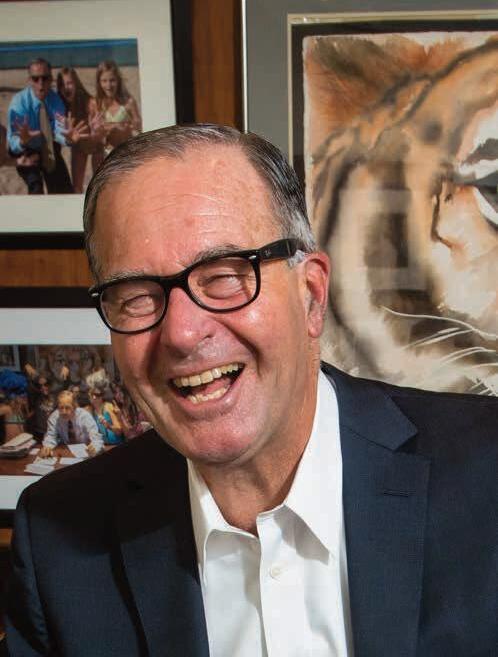
Nowness – In the club business, Nowness is a very big deal
It’s being in the moment, focused, fully aware of and deeply engaged with the place you’re at, the people you’re with, the stuff you’re doing and the moment you’re experiencing People who are in The Now appreciate the wonderfulness of where they’re at, who they’re with and what they’re doing.
When members interact with staff, club quality Nowness is anticipated and expected Members want staff who are fully and completely in the moment, focused on them and enthusiastically interactive. They expect the team to be inthe-now, BUZZED because they’re engaged in delivering a personalized service experience to people they know and care about. Members and “club quality staff” hunger for Nowness. But…
NoWNeSS DISRUpteRS
Nowness is under siege. Disrupters are everywhere diluting focus and diminishing Nowness. There are two types of Nowness disrupters…high tech and low tech. Both are corrosive There are high tech disrupters such as cell phones, computer screens, FaceTime, Pandora and Twitter.
T
ve r s a
Delivering staff Nowness has never been easy. Getting the service team to focus on the people they’re with and the task they’re doing has been and will always be a challenge, and with the proliferation of Nowness disrupters, it’s more difficult than ever to generate member-focused staff Nowness. Managers are paid to deliver club quality Nowness. Managers who want to grow a now focused service culture will need to address the team’s Nowness disrupters – now
CReatINg “NoWNeSS” NoW
Managers need weapons to fight the disrupters. A list of Nowness “must-do’s” is a must have for general managers and their supervisors.
Here are a couple of basic ‘tier one’ Nowness tactics that’ll prevent Nowness drift and Nowness diversion. Walk the talk: The GM and the supervisors must lead by example by doing Nowness right, publicly and often Outlaw the Smart Phone: Make ‘front of the house’ cell phone usage verbotten for management and staff. Out of
sight, out of mind. No calls, no text messages, no games, no nothin’ on their cell phones
Show the flag: The GM and the supervisors need to walk and talk lots because a leader’s presence and example will bring people back into the now. Prevent day-dreaming and emotional drift by showing the flag and being present
Go clockless: Take off the watch and hide the clocks when you’re meeting members or staff. A single glance at either tells the someone you’re talking to that you’re thinking about something else and not the Now
Eye contact: The eyes are windows into the soul and an affirmation of Nowness. When meeting, look ‘em in the eye.
Be curious, ask questions: Questions initiate engagement and force conversation.
Listen, actively and Artfully: Learn to listen Look ‘em in the eye, lean forward, nod your head, focus on what’s being said and think about how you’ll enlarge on the comments just made.
Upbrief: At the start of each shift, review who the team will encounter, what they’ll be doing and the engagement opportunities that’ll arise.
Debrief: At the end of the shift review the day’s doings to affirm “deep looking”, what was done, who did it and the details
Names and faces: People are in the now and far more engaged when they know who they’re talking to. Educate staff about the people they’ll encounter – faces, names, something about them
Screen savers be gone: Screen savers are interesting and diverting. Shut ‘em down during meetings.
Serendipitous encountering: Set aside time for the unexpected encounter, whether the ‘serendipitous meet’ is in your office or during a walk-around and focus entirely on the encounter you’re having.
Condemn multi-tasking: Focus on one thing at a time. Multi-taskers spend less time with less focus on more things and diminish ‘the doing’ because of it
Paper elsewhere: Create an ‘away place’ (paper at home, etc.) for doing paperwork. Paper distracts from the Now.
Be interesting: Boring is a Nowness disrupter Hire interesting people who’ll keep members and their guests focused on meeting them. Work on boosting the team’s I.Q. –their interesting quotient.
Walk slowly: When walking the club, walk slowly. Focus on where you are not where you’re going
Teach ‘eye opening’: The more closely you look, the more interesting people and places become. Teach staff to know the stories behind ‘what is ’
Warm-up: Teach people to ‘do the transition’ from home to work so that they re-focus from where they were to where they are now.
High tech, high touch: Let high tech increase high touch Use the membership information system to personalize current and anticipated encounters.
Do the radar: While staff are doing and talking, teach them to scan continuously for members and to make visual and verbal contact with those they see Ink it: Note taking creates focus and helps get note takers into the Now while, at the same time, giving a powerful Now message to the member who’s encountered.
Describe it: Ask staff to look closely at ‘where they’re at’ then describe it in words. Better yet, have them draw what they’re seeing, because they’ll discover there’s lots more ‘there’ than they imagined.
Don’t read while in the Now: Either hand out things to be read before a meeting or after but prevent reading during the meeting. Whoever’s reading will be in ‘the there’ and not ‘the now.’
Sanitize the desk: Keep the desk top clear of papers that’ll distract from the Now.
Apartness: Schedule meetings far enough apart to give yourself time to dive into ‘the now’ with the person you’re with.
Personalize messages: Avoid automated responses. Personalized notes symbolize having been in the Now when you met
No speaking in tongues: Insist that staff speak English when they’re around members because members can’t share in the Now unless they understand what you’re saying.
Make sure that high tech supports high touch Make sure low tech supports high touch Make sure that the team knows they’d best be in the Now to do hospitality right. And show ‘em what’s right by living Nowness whenever you’re at the club
NeeDINg NoWNeSS NoW
These are challenging times. Nowness disrupters are diminishing focus and diluting engagement
High tech should amplify Nowness Low tech should amplify Nowness.
There’s magic in Nowness. Nowness enlarges and enriches experience and makes where you are, who you’re with and what you’re doing memorable
Managers need to be champions of Nowness, to lead by example, to discuss Nowness with the team and to show them how Nowness gets done.
Live in the Now, emphasize the wonderfulness of where you’re at, what you’re doing and who you’re with. And … enjoy the journey! B r
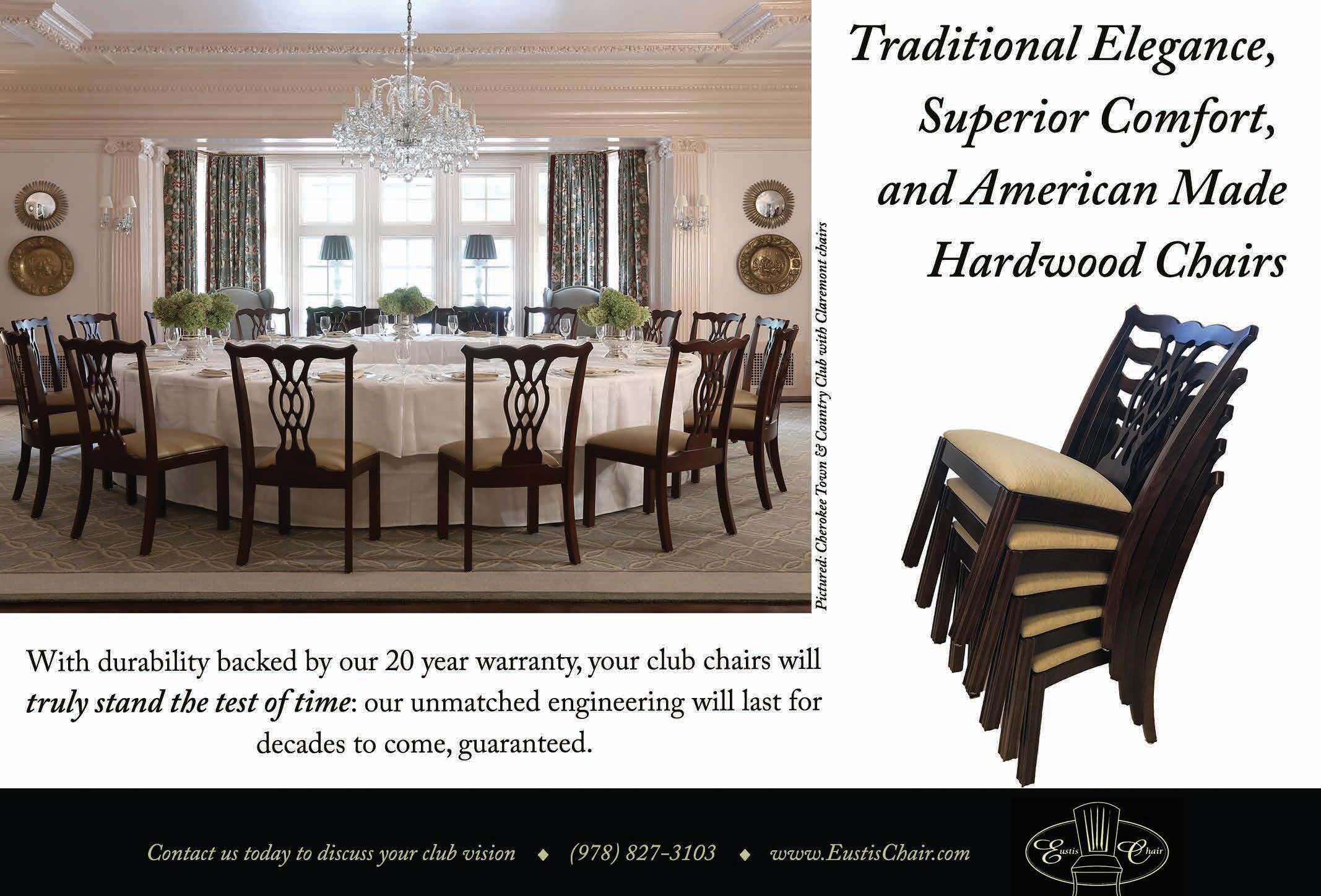

p H I l N e W M a N
Philip G. Newman, CPA, CIA, CGFM is a partner with RSM US LLP and is the firm’s national industry leader for private club services In that role he works exclusively with hundreds of private clubs across the United States Newman is also the recipient of BoardRoom magazine’s Award of Dedication for 2016 He may be reached at Philip newman@rsmus com
It’s a great feeling when you spend an hour explaining a foreign concept to someone which ends with them reciting back your own philosophy “So what I’m hearing is – keep the amenities fresh, keep your people happy and listen to the members’ needs – that will drive the top line?” Yes, I answered, that is how you run your club like a business in 2018.
Recently one of my partners who works in the private equity investment space wanted some advice She has a client that was considering some deals in the private country club arena. Like all good investors, they wanted to understand what they might be getting into before inking the check
Speaking with such Wall Street types is always an interesting experience – they must have had a dozen people on the call, all ready with questions about my thoughts on clubs and in particular, what my perspective was on the current state of the industry
risk management strategies. While the risk categories identified range from property risk to security risk to legal risk, the most significant risk identified was reputational risk and the fear of brand abasement. All clubs should monitor this risk.
How can a club guard against reputational or brand risk?
By continually reinvesting in its brand. Clubs have done this in a number of ways and no doubt, much of the $1.1 billion of capital improvements that occurred in Florida clubs alone from 2015 – 2017 was triggered by a keen awareness by club leaders that they needed to protect the quality and reputation of their club’s amenities.
In the words of the president of one prominent Florida club, “If you don’t keep up you fall back We know we have to keep doing things in order for us to be at the top level, which is where we are now.”
I took care to explain to my audience that it is certainly not just a case of “build it and they will come!” Along with
healt hy and f inancially st able club a s mea sured in ter ms a f inancial execut ive under st ands - of a st able and g row ing “customer ” ba se of dues paying member s.
So how does one explain the sometimes counter-intuitive business world of private clubs to a bunch of highpowered finance executives? Well I figured the one concept they understand better than most is risk – so we started there!
Dealing with risk is a core management function for any business and clubs are certainly not any different. While most clubs do not typically have a formal risk assessment process in place, a strategic approach to risk management is becoming more commonplace
One nationally recognized club, having formalized its risk management process, identified 17 separate categories that they are now trying to address with robust
amenity investments must come investments in the club’s people – the other brand differentiator
Clubs guard against reputational risk by seeking out the best trained people for every department and constantly focusing them on delivering on the club’s mission and vision statements Henry Ford is quoted as saying, “The two most important things in any company do not appear in its balance sheet – its reputation and its people.” Smart investors, like successful clubs, know this and invest in protecting both.
The war for talent is real and clubs are competing with others not only within the industry, but elsewhere Think hotels, restaurants, assisted living facilities – all are competing in the same talent pool as private clubs.
The demand for foreign labor to supplement local workers has arguably never been greater and many clubs that would never have historically considered exploring this route are now deep into planning for it.
Consider the 750 or so Hilton Hotel properties that have been undergoing significant upgrades to their back of the house areas to improve working conditions for employees. Hilton’s chief human resources officer, when asked about the improvements pointed out, “Our mission is to be the most hospitable company in the world…We can’t have a dungeonous back of house and expect people to have a great workplace.”
How many clubs really think about this space during renovations? Labor is the new oil and clubs have to be prepared to go the extra step when possible.
And finally, what every financial analyst wants to understand for any business what drives the top line? My twoword response may have sounded trite, but I have spent almost 30 years dealing with all types of clubs, so it came automatically… member satisfaction.
I would have understood if at this point they wanted to end the call because achieving member satisfaction is something that often requires the counter-intuitive business decision-making mentioned earlier.
Seasoned club COOs know that sometimes they have to take the long view with keeping members happy so that long-term fiscal rewards accrete to the club. Retaining a focus on member satisfaction is vital to ensuring a healthy and financially stable club as measured in terms a financial executive understands - of a stable and growing “customer” base of dues paying members.
Once the investors understood that their number one revenue-generating production line was “dues income”, and that it typically supplied at least 50 percent of operating revenue, they did not need me to explain they needed to avoid anything that would damage it.
Consequently, it was relatively easy discussing the economic realities of a club’s food and beverage operation They quickly understood that the food and beverage production line existed to serve one purpose – keep the dues paying member happy and protect the “almighty dues dol-
h e m a r k e t ? B r

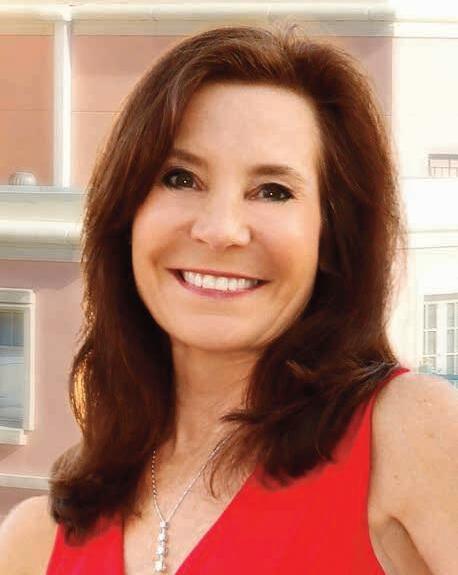
Michelle Tanzer, Esq serves on the National Club Association board of directors and is legal counsel to the Club Spa & Fitness Association Ms Tanzer is chair of the residential, resort and club section at GrayRobinson, P A and can be reached at (561) 866-5700 or via email: Michelle Tanzer@Gray-Robinson com
Since the recent publication of “Understanding the Motivations of Merger ” many additional questions have been asked regarding mergers of clubs and homeowners associations (“Hoas”) across the country. Here are some answers to the most frequently asked questions regarding merger.
1) Is merger a “one size fits all” solution to all club’s problems? No. Merger is a not a panacea. While a merger can achieve many positive results in a variety of situations, it will not solve all club’s problems and is not appropriate for every club.
The facts and circumstances of each club and community must be reviewed independently and considered accordingly
2) What factors contribute to making a club an ideal candidate for merger? Several factors affect a potential merger including the legal structure of the club and of the community, the requirements of membership (including but not limited to whether membership is mandatory for property owners in the community), the complexity of the governing documents of the club and/or the community, the demographics of the members and the status of the development (i.e., is the developer still involved in the project and is the real estate in the process of development or redevelopment?)
3 ) D o e
c
Regardless of the tax status of the club, taxes paid after the merger will be determined on the basis of the tax status of the HOA This is because the club as a legal entity ceases to exist upon the effective date of the merger and the HOA is only the surviving entity.
4) Will all mergers result in considerable tax savings? Most merged clubs will experience some tax savings from a merger However, it must be emphasized that a decision to merge should not be based on tax savings alone. If a merger is undertaken solely for tax savings, the relevant
taxing authorities could disregard the merger for tax purposes and any such savings could be lost
Qualified club tax professionals should evaluate all potential tax savings to quantify the potential savings and compare those amounts to any costs associated with a merger
5) What types of tax savings could there possibly be with a merger? In appropriate circumstances, a merger may result in real property, tangible property and sales tax savings post-merger
Careful reading of the applicable tax laws and exemptions are essential to the analysis. For example, when nonresident memberships are offered by the merged HOA, some of the potential exemptions are eliminated
6) How does the merger affect a member’s property taxes? Clubs pay property taxes on the assessed value of the facilities owned by the club and members primarily pay for those taxes through their dues The amount of taxes paid is determined by the local tax assessor based on the “assessed value” of those facilities.
a i l a b l e , by t h e ow n e r s o f t h e i n d i -
v i d u a l l o t s a n d h o m e s .
I n F l o r i d a , f o r e x a m p l e , a s s u m i n g a c l u b ’ s f a c i l i t i e s a r e
u s e d e xc l u s i ve l y f o r t h e b e n e f i t o f p r o p e r t y ow n e r s
w i t h i n t h e c o m m u n i t y, t h e m e r g e r w o u l d r e s u l t i n t h e
H OA q u a l i f y i n g f o r a r e a l p r o p e r t y t a x e xe m p t i o n f o r a l l
o f t h e c l u b f a c i l i t i e s .
I n t h e f i r s t ye a r p o s t - m e r g e r, t h e r e a l p r o p e r t y t a xe s , w h i c h we r e p a i d by t h e c l u b p r e - m e r g e r w o u l d b e a l l o -
c a t e d t o t h e i n d i v i d u a l l o t s a n d h o m e s w i t h i n t h e c o mm u n i t y.
Then, in subsequent years, the assessed value of the lots and homes for tax purposes is recalculated on the basis of comparable sales of the lots and homes, rather than on the basis of the re-allocation of the club facilities.
In most instances, the net effect of this recalculation is the elimination of any net increase in real property taxes on the individual lots and homes as a direct result of the merger.
T h e r e i s n o r e q u i r e m e n t t h a t a c l u b b e a 5 0 1 ( c ) ( 7 ) i n o r d e r t o m e r g e .
W h i l e t h e r e a r e n o t a l a r g e n u m b e r o f “ fo r p r o f i t ” c l u b s c o m p a r a t i v e l y l o -
c a t e d w i t h i n r e s i d e n t i a l c o m m u n i t i e s , a “ fo r p r o f i t ” c l u b c o u l d m e r g e
w i t h t h e c o r r e s p o n d i n g H OA . R e g a r d l e s s o f t h e t a x s t a t u s o f t h e c l u b ,
t a xe s p a i d a f t e r t h e m e r g e r w i l l b e d et e r m i n e d o n t h e b a s i s o f t h e t a x s t a t u s
o f t h e H OA . T h i s i s b e c a u s e t h e c l u b a s a l e g a l e n t i t y c e a s e s t o e x i s t u p o n
t h e e f f e c t i v e d a t e o f t h e m e r g e r a n d t h e H OA i s o n l y t h e s u r v i v i n g e n t i t y.
7) How does the merger affect a member’s sales taxes? Member’s typically pay sales tax on amounts paid to clubs for dues. Depending on the particular state, sales tax ranges widely from approximately four percent to over nine percent in California, Washington and Louisiana In states such as Florida, which allow an exemption for the lowest category of “dues” paid to community associations rather than clubs, the savings on sales tax could be substantial
s
r s t
r ov i d e t h e a n s we r s yo u n e e d t o m a k e t h e b e s t
d e c i s i o n . B r

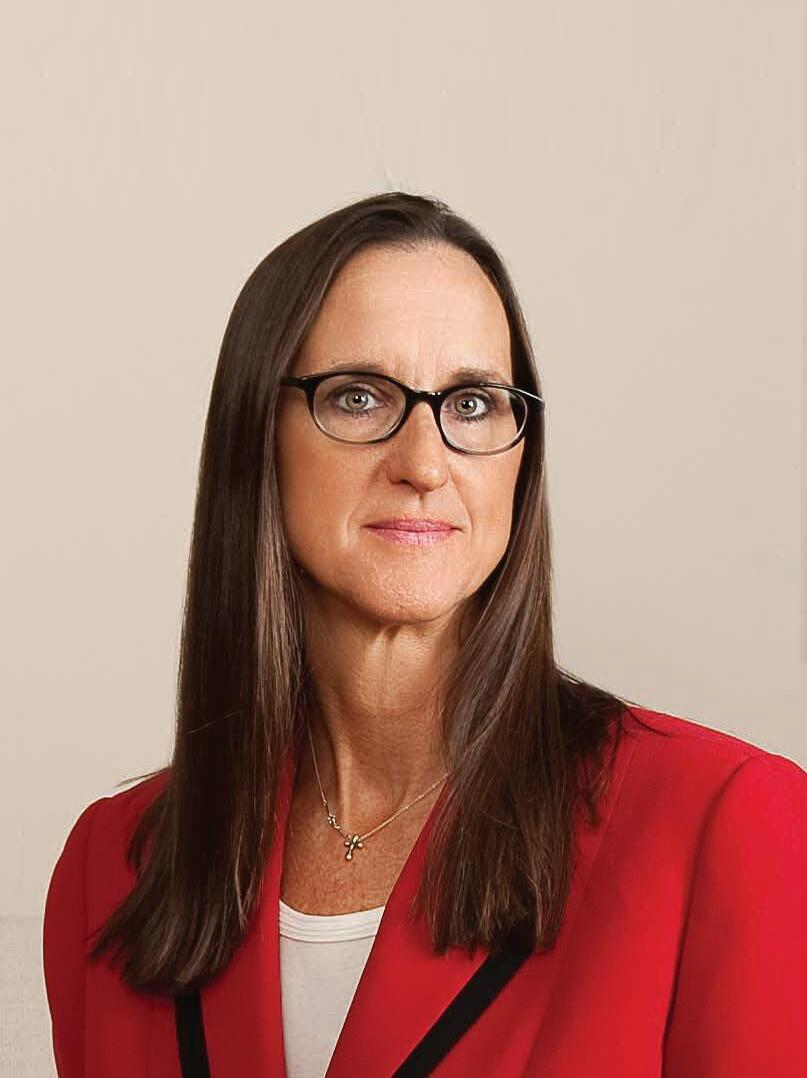
Robyn Nordin Stowell is a partner in the law firm of Sherman & Howard L L C in Scottsdale, Arizona Robyn may be reached at (480) 624-2736 or by email at rstowell@shermanhoward com
Recently, managers have asked a number or questions about documents: What records the club must create and retain, what they can and should put in their joining documents and what records members are entitled to inspect. So, here are a few thoughts on club paperwork.
Records and minutes: If you are a member-owned club (and, therefore, a non-profit corporation), a state statute identifies the documents that the club must maintain and that must be available for member review. You should be aware of this statute and ensure that your club maintains all required documents
Keep in mind that members can review these documents and be mindful of the information you put into the documents. For example, when drafting board meeting minutes, it is not necessary to record every comment that was made and it is ill advised to record any confidential information He are some examples of acceptable minutes:
After discussion, it was duly moved, seconded, and: RESOLVED,
The Board then reviewed the monthly financial report and, after a discussion with the Treasurer, Controller and General Manager regarding , it was duly moved, seconded, and:
RESOLVED, that the January financial report is approved as presented at this meeting and the General Manager is directed to .
This properly documents the board’s action
Joining documents: Member joining documents can contain terms and conditions that will be helpful to the club in the event of a future dispute To avoid disputes when a declined applicant demands to see who said what about them, it helps to have a specific acknowledgement in the application that the applicant has no right to see the background check information
Furthermore, your document retention policies could provide that the club does not retain files on applicants who are declined or retain reference letters on applicants accepted for membership
Your membership agreement could also include useful provisions For example, in some states (such as California) the members must consent to receiving notice electronically. Including this consent in your membership agreement that will simplify the process for you The membership agreement can also include an assumption of risk and waiver of liability to the greatest extent allowed by your local law.
Significant others: Clubs should consider whether they have appropriate documentation in place for significant others. If a member divorces, a court order will tell us exactly who retains what assets. However, if the couple was not married, they might drag the club into their argument of whose income paid the club’s joining fee and dues You can avoid that fight by having appropriate documentation for unmarried couples signed up front.
Bylaws: W h e n yo
t i o n t o
t h e c l u b ’ s a r t i c l e s a n d by l a w s . O n e i m p o r t a n t t h i n g t o
a s k i s w h e t h e r yo u r c u r r e n t o p e r a t i o n s a r e c
w i t h yo u r c l u b ’ s by l a w s
L o o k f o r m a n d a t o r y l a n g u a g e i n t h e by l a w s ( s u c h a s
“ s h a l l ” a n d “ w i l l ” ) a n d e n s u r
w h a t i t s d o c u m e n t s r e q
s i o n s yo u c o u l d a d d t o t h e by l a w s f
i e n c e , s u c h a s e lectronic notice, voting by ballot without a meeting, etc.
You should also especially consider whether your bylaws and your practices are consistent regarding who is the member and what constitutes the member’s “family” for use privileges. Over the years, many clubs have moved to allow spouses to serve on committees or on the board while their bylaws have continued to state that only the member (not the spouse) can serve on committees, etc
It is important to update your documents if you are updating your practices, so that your operations are consistent with your documents B r
Rosie Slocum, MCMP is director of membership, BallenIsles Country Club, Palm Beach Gardens Florida | www ballenisles org | www facebook com/ballenislescountryclub https://twitter com/ballenislescc

“Education is the foundation upon which we build our future ”
– Christine Gregoire
The club industry offers diversity in education for just about everyone who is employed in the business and for those serving on boards of directors. It’s important to take advantage of every growth opportunity available especially in an industry that is competitive no matter where you’re located.
Education through different associations and networking with peers provides an enormous opportunity in learning how to grow your club business The most successful club professionals participate in some level of education and networking during their careers.
It is customary for clubs to provide education opportunities for their staff professionals and boards members during the budget process. The return on investment can be measured through reporting on successes originated from implementing ideas learned through industry education and networking
Networking value is obtained through collective knowledge of other successful club operations that can be realized to improve professionalism, member service, satisfaction and performance
There are some professions for instance, golf, tennis, fitness and human resources that require certification and continuing education to maintain a professional designation in order to preserve their skill level or even be considered for hire Other professions such as club management, finance, membership, marketing, communications, food and beverage, engineering and agronomy may be required to hold certain certifications or attained education to be considered for employment as well
Individuals who have furthered their industry education can be more valuable to clubs than those with industry education It proves these individuals have advanced skills, knowledge, experience and ideals for personal development to perform at a much higher level.
Group education and idea sharing among cubs consists of a variety of subjects including membership programs, marketing, joining fees, dues, governance, housing market studies, entertainment, social events, food and beverage, construction programs, agronomy, state-of-the-art equip-
ment, human resources, demographic studies, comparative analysis, fitness and wellness developments, golf and tennis programs, spa and salon trends, computer software, internet applications and finance-related matters.
Different career education settings might include local meetings, regional summits, national conferences, leadership professionals, industry books, industry magazine subscriptions and online applications. Participating at the local level offers area market trends from club-to-club while larger regional or national seminars provides a greater chance to learn from keynote speakers, industry educators, round-table discussions, personal development and exposure to preferred vendors
Technology provides many ways to capture information however, studies show hand-written notes are more effective than those taken by a computer, which tend to be typed verbatim and may not be very useful Notes written in your own thoughts will provide long-term memory and make more sense to you later when putting them to use.
Idea sharing is commonplace among clubs because no two are exactly alike Each one has its own identity and why different individuals are attracted to them Therefore, the exchange of information from club-to-club should be an acceptable practice.
Considering ideas from other clubs is not exact The foundation of an idea can be used and altered to fit your own structure and culture. It’s not a philosophy that you’re going to do precisely what the club down the street is doing but taking an idea and making it your own by means of creativity in a well-thought-out process to make it acceptable.
It’s essential, not too long after attending an education or networking venue, to review and begin implementing ideas learned Over time, important themes and topics can be lost from the memory, even if you kept notes. Equally important, is to build a file to keep in touch with colleagues you meet who will be able to help you later.
There a many opportunities to help put you ahead of the curve when building your club business. Investing in education and networking are relevant ways to collect a vastamount of knowledge that can be beneficial to your club. B R
The BoardRoom magazine “Excellence in Achievement” Awards is the only private club industry award that recognizes t
consultants, which represent various aspects of course and club operations
Winners, each year, are selected for overall excellence in their respective fields, achievements, innovation, vision for future growth and continued impact on private club operations
“

The BoardRoom magazine is the only publicatio n of its kind that is designed to educate the board of directors, owners, general managers and depar tment heads of private golf, city, yacht, tennis and country clubs about issues concerning all aspects of the club, golf course management and operations
LIFETIME ACHIEVEMENT
Linda Pesner, EA Photography
BOARDROOM AWARD OF DEDICATION
Paul Levy, PGA Honorary President
GARY PLAYER EDUCATOR*
Mitchell Stump
Whitney Reid Pennell
NEW PRODUCT OF THE YEAR BevSpot
ACCOUNTING RSM US LLP
AMENITIES PROVIDER OF THE YEAR Sports Solutions
APPAREL PROVIDER OF THE YEAR * Ambassador Uniform High-End Uniforms
ARCHITECTURAL DESIGNER OF THE YEAR * C2 Limited Design Associates
MAI | Marsh & Associates, Inc.
ASSOCIATION OF THE YEAR PGA of America
ASSOCIATION PROGRAM OF THE YEAR
PGA of America: PGA Education
John Easterbrook Jr , PGA
BANQUET SUPPLIER FIRM OF THE YEAR Spring USA
BUSINESS INTELLIGENCE SOFTWARE OF THE YEAR Jonas Club Software
CADDIE COMPANY OF THE YEAR CADDIEMASTER
CHAIR MANUFACTURER OF THE YEAR Daniel Paul Chairs
CHINA COMPANY OF THE YEAR Wedgwood Royal Doulton
CLUB ENHANCEMENT PRODUCT OF THE YEAR The Verdin Company
CLUB INSURANCE AGENCY OF THE YEAR George Peterson Insurance
CLUB MANAGEMENT SOFTWARE OF THE YEAR Northstar Club Management Software
CLUB PHOTOGRAPHY FIRM OF THE YEAR EA Photography
CLUB PROGRAM OF THE YEAR KE Camps
CLUB SERVICE FIRM OF THE YEAR RCS Hospitality Group
CLUB SIGNAGE FIRM OF THE YEAR Signera
CLUBHOUSE DESIGN FIRM OF THE YEAR * ClubDesign Associates Lichten Craig Architects
CLUBHOUSE RENOVATION FIRM OF THE YEAR * Angela Grande Design
Susan B Bozeman Designs, Inc
CONSULTING COMPANY FIRM OF THE YEAR * Denehy Club Thinking Partners RCS Hospitality Group
CUSTOM DESIGN CHINA COMPANY OF THE YEAR Graham Marquis
CUSTOM DESIGN GOLF CARTS COMPANY OF THE YEAR SC Carts
CUSTOM DESIGN OUTDOOR FURNITURE XHIBTZ Contract Furnishings
DINING ROOM DESIGN FIRM OF THE YEAR Studio JBD and Jefferson Group Architecture
ELECTRIC GOLF COURSE VEHICLE COMPANY Evolution
EMPLOYMENT SCREEN FIRM OF THE YEAR Insperity Management
EXECUTIVE SEARCH FIRM OF THE YEAR Kopplin Kuebler & Wallace
FINANCIAL & OPERATIONAL MANAGEMENT TOOL Club Benchmarking

FITNESS EQUIPMENT COMPANY OF THE YEAR Technogym
FLATWARE COMPANY OF THE YEAR Corby Hall
F&B MANAGEMENT SOFTWARE COMPANY FOOD-TRAK/System Concepts, Inc
FURNITURE MANUFACTURER OF THE YEAR Gasser Chair Company, Inc.
GLASS WALL SOLUTIONS COMPANY OF THE YEAR Nana Wall Systems
GOLF CAR COMPANY OF THE YEAR E-Z-GO | Textron Inc
GOLF COURSE ACCESSORY FIRM OF THE YEAR Standard Golf
GOLF COURSE ARCHITECT OF THE YEAR George Golf Design
GOLF COURSE MAINTENANCE EQUIPMENT COMPANY Toro
GOLF COURSE MANAGEMENT COMPANY OF THE YEAR ValleyCrest Companies
GOLF COURSE MANAGEMENT SOFTWARE EZLinks
GOLF COURSE MANAGEMENT TECHNOLOGY FIRM Textron Fleet
GOLF PRACTICE FACILITY DESIGNER OF THE YEAR Rogers McCagg Architects Architects | Planners | Interior Designers
GPS TECHNOLOGY FIRM OF THE YEAR Greg Norman Company
GREEN PRODUCT OF THE YEAR BambrellaUSA, Inc
INNOVATIVE PATIO HEATERS COMPANY OF THE YEAR Dayva Industries
INTERIOR DESIGN FIRM OF THE YEAR C2 Limited Design Associates
INTERIOR DESIGN FITNESS ROOM Peacock + Lewis Architects and Planners
INTERIOR DESIGN FURNISHING AND FINISHES HINT | Harris Interiors
INTERIOR DESIGN LOUNGE SEATING AND BAR AREA ClubDesign Associates
INTERIOR DESIGN SOCIAL/CASUAL DINING*
Peacock + Lewis Architects and Planners
Susan B Bozeman Designs, Inc
INTERIOR DESIGN YACHT CLUB Angela Grande Design
KITCHEN & FOODSERVICE EQUIPMENT COMPANY DEI Food Service Equipment & Design
KITCHEN EQUIPMENT COMPANY OF THE YEAR The Montague Company
LAW FIRM OF THE YEAR Addison Law
LINEN PROVIDER COMPANY OF THE YEAR Something Different Linen
LOCKER COMPANY OF THE YEAR Hollman, Inc
MANAGEMENT COMPANY OF THE YEAR Troon
MASTER PLANNING FIRM OF THE YEAR * Chambers 360° Club Planning & Design MAI | Marsh & Associates, Inc.
MEMBERSHIP ENGAGEMENT TOOL OF THE YEAR Newsstation.com
MEMBERSHIP MARKETING COMPANY OF THE YEAR Creative Golf Marketing
MEMBERSHIP SURVEY COMPANY OF THE YEAR McMahon Group
MENU COVERS COMPANY OF THE YEAR Impact Enterprises
MOBILE APP COMPANY OF THE YEAR Jonas Club Software
MOBILE POINT OF SALE COMPANY OF THE YEAR Northstar Club Management Software
OUTDOOR COOKING EQUIPMENT COMPANY Big John Grills
OUTDOOR FURNITURE COMPANY OF THE YEAR OW Lee Company
PAYROLL PROGRAM OF THE YEAR ClubPay
PERFORMANCE MANAGEMENT ASSESSMENT Paisano Performance Partners
PRIVATE CLUB BRANDING FIRM OF THE YEAR Pipeline Marketing
PRIVATE CLUB PR/MARKETING FIRM OF THE YEAR
Pipeline Marketing
PRO SHOP DESIGNER/BUILDER FIRM OF THE YEAR Procraft Heritage Creations
PURCHASING COMPANY OF THE YEAR XHIBTZ Contract Furnishings
PYROTECHNIC COMPANY OF THE YEAR Volt Live
REAL ESTATE SERVICE FIRM OF THE YEAR
Hilda W. Allen Real Estate
RESORT AND HOTEL MANAGEMENT SOFTWARE COMPANY ResortSuite
SAFETY AWARD Rapid Oxygen
SEAFOOD WHOLESALER DISTRIBUTING COMPANY Aloha Seafood
SERVICE FIRM OF THE YEAR Talent +
STAFF TRAINING COMPANY OF THE YEAR RCS Hospitality Group
STRATEGIC PLANNING & CAPITAL FUNDING COMPANY Clubwise Consulting, LLC
STRATEGIC PLANNING COMPANY OF THE YEAR * Chambers 360° Club Planning & Design McMahon Group
SUSTAINABILITY PROGRAM OF THE YEAR SES Lighting
TECHNOLOGY CONSULTANT OF THE YEAR CC Tech Partners
TENNIS COURT BUILDER OF THE YEAR Welch Tennis
UPHOLSTERY FIRM OF THE YEAR Style Upholstery
UTILITY VEHICLE FIRM OF THE YEAR Yamaha
WEBSITE COMPANY OF THE YEAR MembersFirst
WINERY OF THE YEAR Flora Springs Winery & Vineyards

Rick Ladendorf is the president of Prevo Health Solutions, Executive Producer of the AMERICA’S HEALTHIEST CLUBS© Network and Founder of the Wellness Project™. Contact Rick Ladendorf at (949) 933-5470 or rick@americashealthiestclubs com or rladendorf@prevohealth com
Wellness, a generic term with many meanings, has moved from a fad to a trend over the last decade, but the real question is this: are clubs capitalizing on the wellness trend to help build membership, increase member engagement or enhance the member experience?
As a point of reference, the McMahon Group labeled wellness a megatrend in the early 2000s and since then, many consultants, design/build firms and industry experts have affirmed the claim, so it must be true, right?
Well, the answer is both yes and no. Yes, because the digital data from search and social media sites shows a steady increase of wellness related key-word searches and social media conversations No, because the private club industry as a whole, has not adopted wellness as a core value, part of the mission/vision statements or included it in the club’s strategic plan.
On the other hand, private clubs that have embraced wellness as part of the culture believe wellness is one of the most important non-golf offerings that drives new membership sales, reduces attrition and improves the member experience.
aSCeNt of WellNeSS
These charts indicate the interest in wellness, fitness and healthy foods began around 2010. There’s been a continuous climb each year. The timeline for each of the trend reports begins in 2004 and continues through 2016 representing over 12 years of data The raw data used to compile these charts comes from a host of online data sources including Google key word searches, social media sites and government data.
Prevo commissioned a third party to conduct the data analysis listed below for the sole purpose of identifying noteworthy trends that impact the private club industry.
MIlleNNIalS, SoCIal MeDIa & MINDfUlNeSS
While many clubs are either adding fitness centers or upgrading existing fitness facilities to become wellness centers, the concept of wellness has yet to go mainstream in the club industry for many reasons. One primary reason is the fact most club managers equate wellness to fitness and fail to truly understand the definition of, let alone the purpose of wellness, related to achieving the goals and objectives of the strategic plan as a strategy to ensure long-term sustainability.
Three trends we see impacting the club industry include the ascent of Millennials, mindfulness and social media, as seen in the following trend charts
Data INteRpRetatIoN
The data suggests fitness, healthy food and wellness will continue to be important to prospective members for the foreseeable future. Likewise, the ascent of Millennials, interest in social media and mindfulness are
areas that are experiencing significant growth that will likely continue to play a significant role in shaping the culture of the club industry.
More specifically, Millennials are highly engaged online, social media platforms are a dominant platform from which people go to connect and share, but the most important metric we track is the ascent of mindfulness.
Mindfulness, the quality or state of being conscious or aware of something, is the one leading indicator or trend that links the importance of wellness and purpose, where “purpose” is a significant motivator for most people, especially when it comes to the Millennials
Key findings of a recent 2018 Cone/Porter Novelli Purpose Study shows purpose is important to most people
• 78 percent of Americans believe companies must do more than just make money; they must positively impact society as well
• 77 percent feel a stronger emotional connection to purpose-driven companies over traditional companies
• 66 percent would switch from a product they typically buy, to a new product from a purpose-driven company
• 68 percent are more willing to share content with their social networks over that of traditional companies
For example, if a prospective member is “mindful” of being healthy, they are more likely to consciously seek out a club that offers a lifestyle solution that meets their needs and is more likely to be loyal to the club
The results of the Prevo-commissioned trend analysis study identified nearly eight million people that are actively searching for health and wellness and mindfulness online or are engaged in social media conversations that pertain to wellness. The question is, does your club have a purpose driven strategy to attract potential members that have a personal interest in wellness? B r
Steve Mona, CEO of the Florida-based World Golf Foundation

as the year nears its end, by any measure, 2018 can be viewed as a success, with exciting developments on and off the golf course.
I am bullish about the future of our sport as it continues to evolve and welcome people who are experiencing the game in new and exciting ways
Studies show that there are 24 million golfers in the United States, with another 14 million saying they are very interested in playing. There is clearly demand for the game.
Young people are taking up the sport and making a big impact on it. An estimated 6.3 million people between the ages of 18-34 are playing an average of 14 7 rounds annually, or an estimated 93 million rounds Additionally, the number of golfers aged 6-17 continues to grow, with the number increasing to 2 7 million, up 12 5 percent from 2 4 million in 2011
The golf industry continues to work diligently and creatively to grow the game. For instance, in an effort to make a greater impact on the future of our sport, the major golf organizations based in the United States – the Masters Tournament, LPGA, PGA of America, PGA TOUR and the United States Golf Association – along with the Golf Channel, are working together, closer than ever, to support and promote one another’s grow-the-game initiatives
In fact, all five industry-supported “Grow the Game” initiatives have achieved record growth over the past few years. These programs are making an impact, as evidenced by the fact that there were 2.6 million people who tried golf for the first-time last year, more than any year in history, and continuing a four-year upward trend.
Not only are young people coming to the sport, their gateway is expanding through new and unique means like Topgolf and simulators Topgolf, which
blends golf with an entertainment experience including food and music, has 41 locations in the United States and hosts more than 13 million participants annually. Exposure to these unique introductory experiences to the game will lead to more participants in traditional golf experiences, as the research already shows.
Another initiative welcoming new players to the game is #InviteHER, which is managed by the LPGA Women’s Network and supported by the golf industry The #InviteHER campaign is designed to encourage all golfers to invite the women in their lives to join them on the course
The business of the game is thriving as well. The sport continues to be a huge

economic driver in the United States, an $84.1 billion industry that impacts nearly 1.9 million jobs with $58.7 billion in annual wage income In fact, one out of every 75 jobs in this country is impacted by the golf industry, whether through direct employment in the industry or engaging an outside business.
So, I am excited about the future of golf and I am confident about its overall health On the professional level we have young, athletic and highly-skilled players who are connecting with fans. We have all of the major golf organizations committed to growing our sport and introducing it to a new generation of players But most of all, we have the game itself. A sport that young and old, skilled players and newcomers can participate in together. It truly is a sport for a lifetime, welcome to all Br

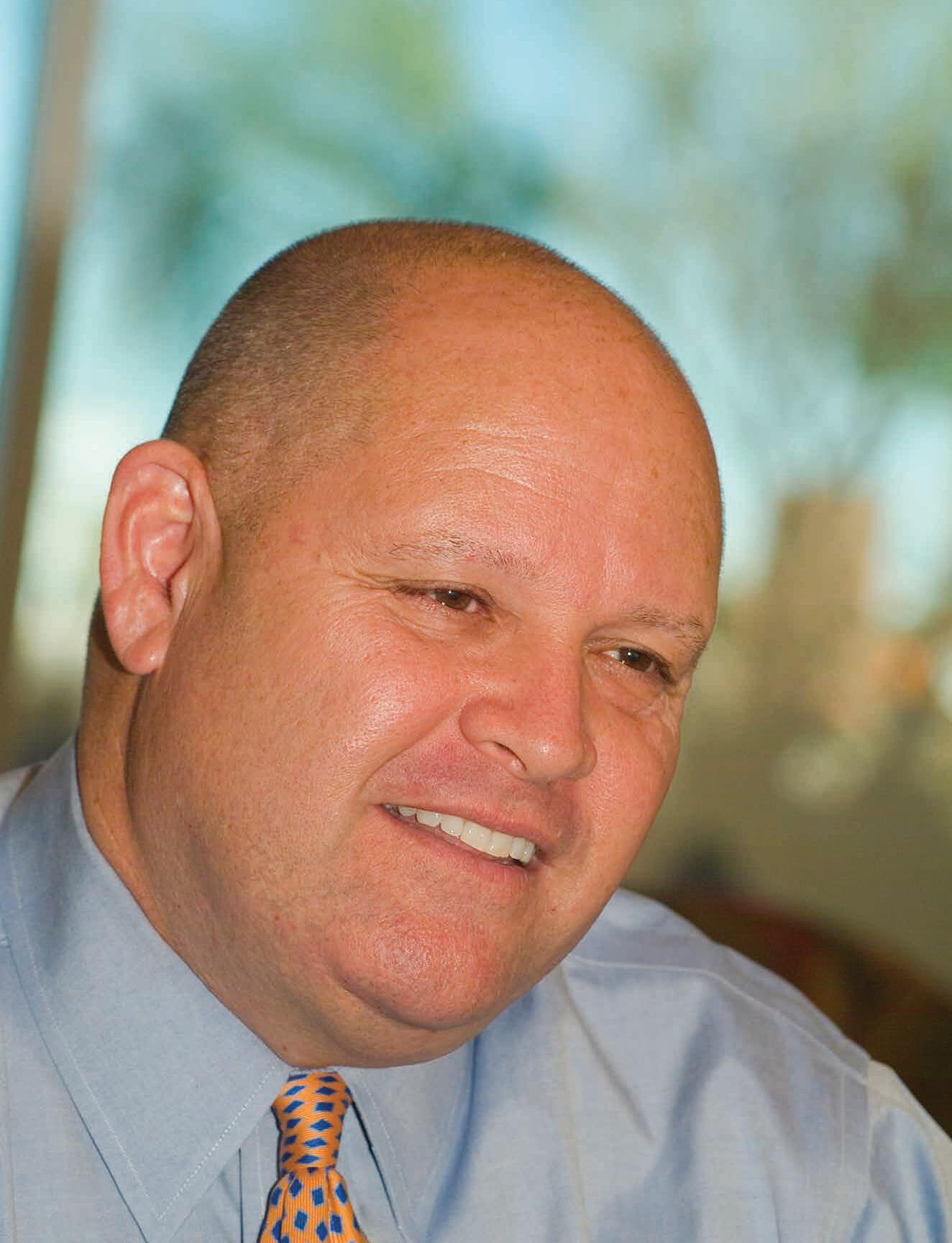
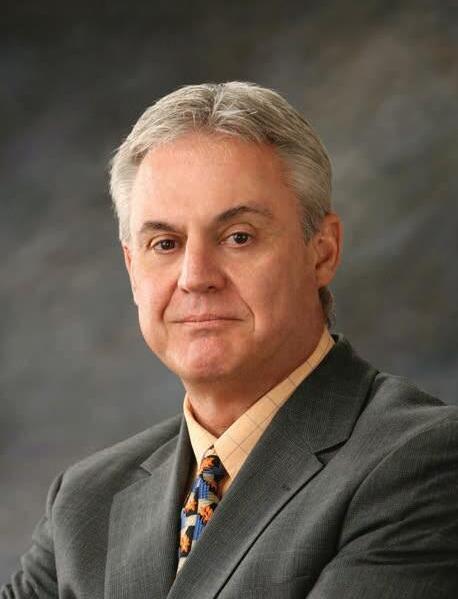
“ the times are a-changing” and, as bob Dylan warned in his 1964 ballad of change, “ the order is rapidly fadin’ and the first one now will later be last.”
I
“We benefit most when we keep our fingers on the pulse of change,” Leemhuis observed
This initiative began in 2010 when Leemhuis and Fred Laughlin, the non-profit governance genius, studied attitudes of general managers of elite clubs. Trend findings were well received, with many managers and club leaders indicating how they used the data in planning processes at their own organizations
Trend data was so useful for this audience that Michael was approached in 2013 and asked to revisit the trends to see if and how things had changed in just a few short years Again the list was reevaluated and refined to include the most current trends and significant changes in those from previous years.
Since its inception in 2010, the study has been repeated every three years to monitor, measure and update the evolution of trends, which are having the most significant impact on private clubs
GGA became the research masters for the 2016 survey with insightful analysis of changing trendlines and emerging points of focus for club managers.
Findings emphasized how the private club landscape is greatly influenced by changing food and beverage expectations in dining experiences and menu options, challenged to manage human resources, thirsty for tools that enhance data-driven decision-making, and are continually strategizing new ways to adapt traditional club experiences to mirror changing membership demographics.
These findings and more were clarified in a summary article and full report of the 2016 study.
Today, previous emphasis pressure on club communications and leadership are morphing to the current pressures of finding capable workers and the new compensation requirements attending to this crunch. In 2019, the survey is tackling the current wave of change challenging club managers and leaders
“In our preliminary research phase, we have learnt that clubs are seeking solutions to the labor shortage wave that has swept club management.” Leemhuis said. Other matters of concern to be explored in-
clude rapidly changing food and beverage trends, evolving points of emphasis for fitness and wellness in clubs, and the sourcing and usage of capital funds for clubs scarred by deferred spending during the recessionary cycle.
Noting that members’ expectations for the lifestyle experiences they crave have escalated, the GGA researchers are exploring the value proposition members expect from their clubs.
“Members’ inclination to want and expect more escalates with the capability of their clubs to meet and exceed their experiential expectations…” said Bennett DeLozier at GGA. “We will learn what managers are doing and translate the new concepts into actionable recommendations.”
Built up over many years in the industry, Leemhuis has queried his own extensive network of CMAA club managers to develop trending concerns and topics for study. “The upcoming research study will dig deeper into these trends by seeking feedback from top club managers to determine the veracity of these trends and gauge their current and/or projected impacts over the next several years,” said Derek Johnston a GGA partner. B r
The January/February issue of BoardRoom magazine will report information regarding research details and findings.
Those interested in the evolution of private club trends and the real-life impacts club managers are adopting in response can become part of the change analysis by keeping an eye out for the first 2019 issue of BoardRoom magazine.



Mentorship in the complex hierarchy of a restaurant kitchen is a crucial aspect of any fine dining culinary career.
The Alpine Country Club in Demarest, New Jersey recently reunited a famous culinary mentor and his mentee as the club brought together renowned French chef and restaurateur Daniel Boulud and their own executive chef Alex Lee for an exceptional wine dinner exclusively available to the club’s membership.
Chef Boulud, a Michelin-starred restauranteur with outposts in multiple cities, is best known for Daniel, his eponymous restaurant that he opened to great acclaim on Manhattan’s Upper East Side in 1992 Boulud was Chef Lee’s respected mentor for 11 years in the kitchen at Daniel, where Lee was one of a team of culinary professionals that helped Boulud stack up awards and accolades. Today, Chef Boulud has established 19 restaurants in nine cities around the globe.
The Alpine Country Club’s membership jumped at the chance to experience this unique wine dinner that featured a five-course, collaborative tasting menu. The event sold out in a remarkable eleven minutes.
Alpine’s club members jumped at the chance to experience Chef Boulud-inspired dishes and to interact with both Boulud and Lee between courses The pair spoke about their history together and the impact Boulud had on Lee’s career.
“It was great for our members to see the chemistry between the two,” said Chris Hull, the club’s general manager and COO, “The kitchen staff was completely star struck,” he added
The evening kicked off with a cocktail hour for the lucky 130 guests The fivecourse menu was created in the spirit of friendship and professional bonding. Chef Boulud and chef Lee collaborated for a month in the lead up to the dinner, working on some of the dishes they had created together over the years – dishes that brought back fond memories, and a few that became famous at Daniel’s in NYC. They then set about to source the finest seasonal ingredients.
Using the club’s resources as well as Chef Boulud’s – including seven members of his culinary team from Daniel – the wines were paired by Boulud’s wine director and the clubhouse manager Club members, in turn, brought their finest vintages to the event. As the chefs engaged with members between courses, club members followed suit and mingled table to table, sharing and tasting each other’s best wines
“The event brought tons of camaraderie in the front and back of the house,” Hull told us.
Partial proceeds from the dinner supported one of Chef Daniel Boulud’s favorite causes, City-Meals-on-Wheels Arranged in part by one of the club’s members, Herb Karlitz, whose professional connection to Boulud facilitated the planning, the event was a smashing success.
“It was a fun opportunity to bring notoriety to our club and a unique experience to our members. It was truly one of the highlights for our members over the last few years,” said Hull B r



M e g H a N t H I b a U lt
Meghan Thibault, Innovative Ideas editor, is a professional writer and communicator with a passion for storytelling
A writer at heart, Thibault has been involved in the hospitality and club industry in Canada, the Caribbean and Hawaii
She is currently a member and on the membership committee, at Mid-Pacific Country Club in Kailua, HI
To submit an idea or story for this section, please email meghan@studiodelmar net
the Riverside Yacht Club in Riverside Connecticut has been taken aback at the enormous response from members when they introduced their elf on the Shelf as a marketing tool for a family-focused event.
Initially incorporated into a weekly hot chocolate and holiday cheer invitation, their club’s Elf on the Shelf – aptly named Georgie in honor of the club’s founder – quickly evolved into a broader engagement tool that included a daily email to members, sent from December 1 through Christmas Eve.
The Elf on the Shelf has become a Christmas tradition for many parents of young children since its introduction to the zeitgeist in 2005, when Carol Aebersold’s picture book for kids was published The Elf on the Shelf storybook comes packaged with a tiny stuffed elf in a keepsake box The story tells of Santa’s scout elves, sent throughout the world to determine who has been a naughty or nice throughout the year Parents are meant to move the elf to a new location in the house each morning, between Thanksgiving and Christmas, with the idea that the elf will fly back to the North Pole every night to report back to Santa, returning each morning to observe kids’ behavior Naming your family’s elf gives it the Christmas magic it needs to make this exhausting roundtrip to Santa’s workshop each day. From all this activity, Santa builds his official “Naughty or Nice” list each Christmas
Families looking for a break from holiday shopping and a hectic schedule would stop by the Riverside Yacht Club on Fridays to enjoy cocoa and cookies by the club’s fireplace. Georgie would miraculously make an appearance each time Daily emails to the club’s members detailed Georgie’s daily location and antics.
“After the first email, we received such tremendous feedback from members without children, we realized Georgie was going to be our way of infusing a bit of holiday cheer to the entire club,” noted Courtney Wetzel, Riverside’s clubhouse manager.
The club enjoys an incredibly active junior program during the summer months. Families loved the Friday event, where kids socialized with their friends they don’t often see during the fall and winter


months, and parents read books – graciously provided by the club – to their little ones by the fire.
“The kids get so busy with school, so we thought wouldn’t it be great for families to take an hour and slow down,” said Wetzel of their Friday afternoon hot chocolate and holiday cheer event. The afternoons stretched into evening Opening the club’s dining room early to accommodate lingering families led to a 17 percent increase in revenue compared to the previous year
“The enhancement we did not originally foresee was the joy it brought to the entire membership,” according to Wetzel. Members enjoyed the daily “Georgie” email updates and were abuzz throughout December The club capitalized on Georgie’s popularity and included him in subtle marketing campaigns for stocking stuffers, holiday concerts, and family events
The entire Riverside team pitched in to make this marketing campaign a success. Staff and managers scouted new locations, laid out a schedule for Georgie’s appearances, staged photo shoots, and finally, they developed an elaborate video that showed Georgie flying to the North Pole on Christmas Eve to make his final report to Santa This effort (rather amusingly) involved rigging a model sailboat, a fishing pole, waiting three days for just the right weather conditions, and then several takes to make it realistic.
Members were treated to the final video edit, appropriately set to a Jimmy Buffett song, in their inbox on Christmas Eve.
Like letters to Santa arriving at the post office in December, an unprecedented amount of wonderful feedback rolled in to the team at Riverside in response to Georgie’s antics. Some members offered letters of support for Georgie’s application for club membership, and others gave thanks in emails and in person for the fun and cheer Georgie brought to their family’s holiday spirit
“We were so pleased that Georgie brought joy to so many of our members during the holiday season!” added Wetzel, who says Georgie will be making encore appearances throughout this holiday season B r

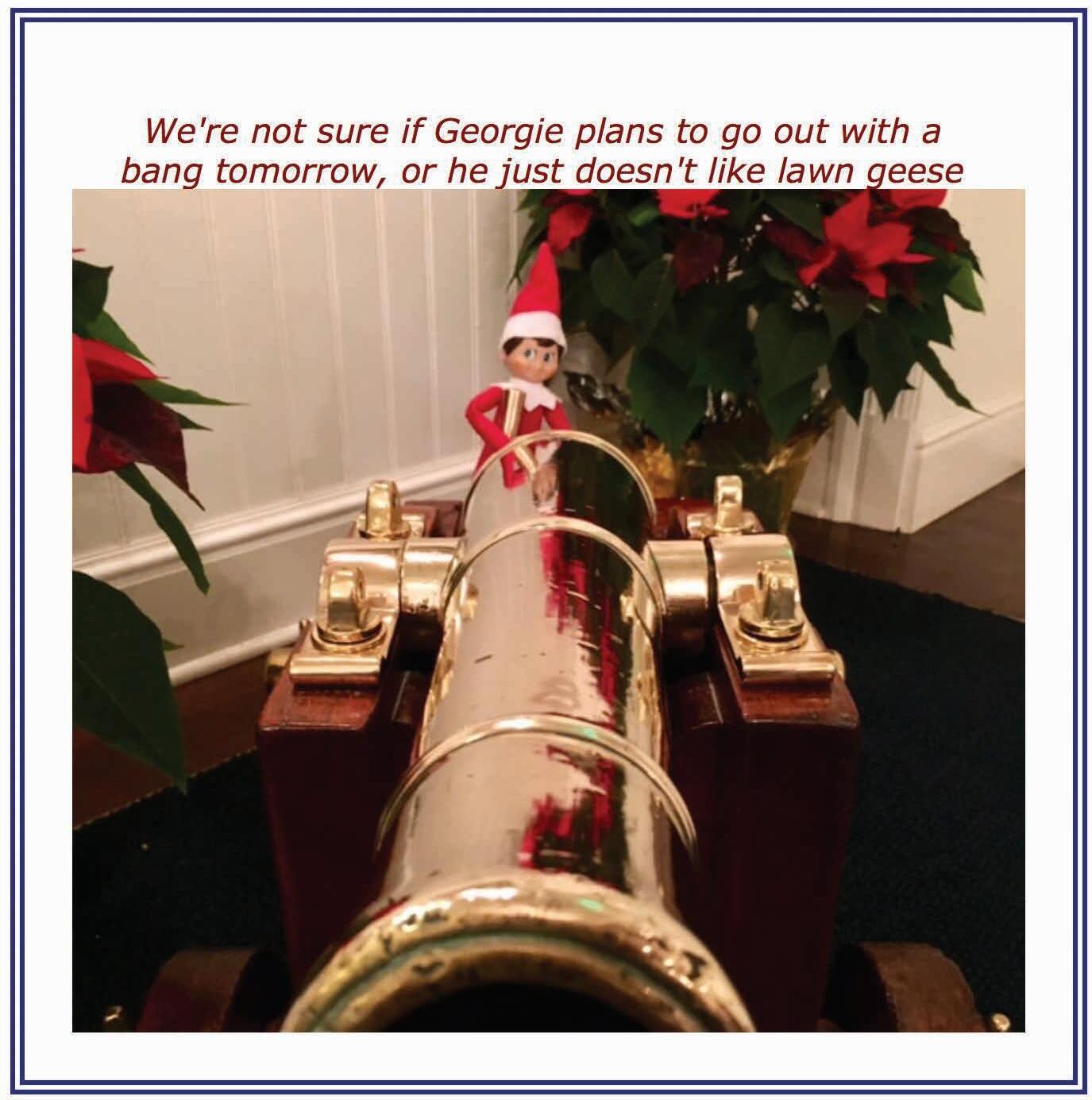

Every event planner or clubhouse manager understands the tremendous amount of work it takes to generate interest in a one-time event. The secret to successful programming is a balance between intriguing, unique stand-alone events and a cadre of monthly happenings that keep members engaged and coming back.
Here’s one question clubs of ten ask: How do we generate early engagement for events and how to keep that momentum going? For one club, the answer seems to lie in persistence
Michael Nyerges, clubhouse manager at Fiddler’s Elbow Country Club in Bedminster, New Jersey says it takes commitment to build a robust calendar of monthly events. The club runs four on-going success stories, including an exclusive speakeasy, a cigar night, a themed wine dinner, and a seafood and rosé soirée The monthly events provide four important touchpoints with the club’s membership.
Nyerges talked about the secret to his success in building a following for these four events “The whole goal was to tap into our members’ lifestyle and give them an opportunity to meet other members We decided to go with four concepts for which we knew we had an audience,” he said.
The club’s regular cigar night brings together members with a passion for cigars The club’s monthly wine dinner, which focuses on a specific wine region each month, attracts anywhere from 25 to 65 members The riskiest idea – the seafood and rosé night – despite the unusual nature of the event, has the advantage of being the least costly to members.
“We didn’t have high expectations at first. For the most part, we wanted to create value-added social opportunities for our members, so they could try new things and get together with other members who shared their interests. Once they experienced the value, they started coming back,” said Nyerges.
Each month, the speakeasy is focused on a specific sub-group within the club’s diverse membership The speakeasy events target ladies only, golfers, baby

boomers, singles, millennials, Halloween and Holidays theme Held in the club’s wine cellar, a mixologist stirs up custom, craft cocktails for a small group of members. The speakeasy has a 20-person limit, largely because the drinks are time-consuming to produce, and the cellar is small. The limit ensures both an intimate and efficient member experience.
“We didn’t give up on a failing event – we just kept trying. Some took as many as eight months to pick up and others were a hit right away The key is to keep at it,” Nyerges says. B R



Delaware’s Newark Country Club faced financial problems similar to many other longstanding private clubs.
Suffering annual deficits, the club’s most valuable asset was its land, and developers were hovering, hoping to purchase the property and convert it into residential or commercial uses. Club members – at least many of them – wanted to preserve the club for golf
The club’s board convened a meeting of members to discuss alternatives: merging with another club; selling the land, while preserving the right to play golf for a number of years; selling the development rights to the city of Newark; having willing members lend money to the club.
While the membership was not unified, the board opted to pursue the last option with certain members advancing $399,000 to the club at an interest rate of 5.75 percent. Among those participating in the loan were five of the club’s 12 board members
A club member responded by filing a derivative action, alleging that board members breached their fiduciary duty by permitting the club to pursue the financing instead of the other options
The Delaware court rejected this argument, dismissing the complaint. As the court explained, “The Second Amended Complaint…does not plead facts suggesting that the members of the board intentionally disregarded their fiduciary obligations as to the process they undertook in considering the loan transaction.
“Rather, the Second Amended Complaint acknowledges that the club held a ‘town hall meeting’ where at least three options were discussed other than the loan transaction, including
selling the club, and that the five members of the board with an interest in the loan ‘recused themselves from the board vote authorizing the transaction ’
“What Stritzinger’s grievance boils down to is a disagreement with the substance of the decision the board made to approve the loan transaction. Her pleading makes clear that she disagrees with the board’s decision to borrow funds to address the club’s near-term financial pressures so that the club could continue to operate – as it has for generations – as a country club
“Stritzinger, who does not use the club’s facilities, wanted the board to reject the loan, even if that meant liqui-
dating the club and selling off its land
In short, Stritzinger’s disagreement with the board concerns quintessential matters of business judgment concerning the strategic management of the club’s affairs What her allegations do not do, however, is provide particularized facts from which the court reasonably could infer that the decision to enter into the loan was so egregious or irrational that it could not have been based on a valid assessment of the club’s best interests, or that the directors who approved the loan otherwise acted with the requisite intent to disregard their obligations ” Br

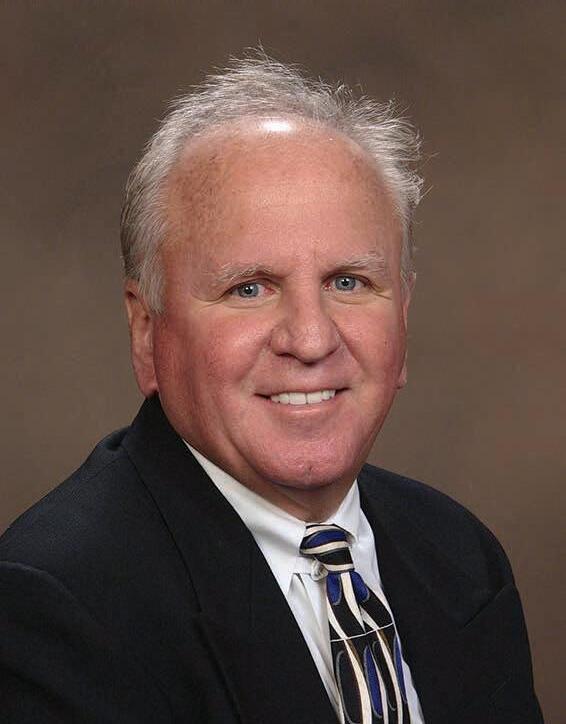
Dean Wochaski CGCS is president/agronomist with Golf Maintenance Solutions
He can be contacted at his regional office (757) 222-0025 or cell (757) 685-5556 or at dean@golfmsolutions com Website: www golfmsolutions com
Can you see the tide is changing dramatically in our business with top golf, golf boards, golf technology? this has everyone excited about the future. What a difference a few years can make!
There’s no doubt this has resonated to the green industry. How do we know this? We’re very busy again!
The past two years our agronomy team has spent more time on sales and marketing than consulting and maintenance in the field. This has happened because it was needed, to sustain our business that was eroding because of the downturn in the industry. T
This activity is robust because courses are wanting to make ‘smart spending decisions’ on construction and operating budgets. There’s no doubt that golf course decision makers have moved towards renovating courses to upgrade poor infrastructure that has been deferred
The capital investments at courses we work with include: greens renovation, bunker rebuilds, re-grassing and large-scale golf course construction projects throughout the country. The difference is that clubs are spending more time on getting the most for what they are spending with competitive bidding, labor only contracts and in-house management of the projects where it makes sense.
The club decision makers and owners want assistance in creating the ‘right fit scope of work ’ Clubs are getting smarter about wanting to spend the dollars in the right places to insure their operating revenues can increase to justify any debt they need to assume for the project(s).
In the past the philosophy of build it and they will come did not work except to sell real estate but once the real estate was sold the cost of operations was left with the club The golf business has evolved towards smart, strategic and balanced funding to these projects and this is one of the reasons we have experienced a large uptick in this business. The great news is we have seen no decrease in course renovations and in fact, we are seeing courses schedule out contractors into next spring
Another indicator of increasing health in the industry is the interest in outsourcing course maintenance and consulting that allows the operations team to focus on growing the business while we focus on growing the grass.
A positive trend is that operating budgets are now often adjusting upward to create the conditions expected by the golfers This starts with keeping good people as unemployment is reaching historical lows and opportunities are greater than they have been in years for employees.
We are seeing operating budgets increasing five to 10 percent, when a few years ago the budgets had been reduced and remained flat. This is great news for the industry. The suppliers that provide us our equipment, fertilizers, chemicals, and course supplies are seeing their businesses improve as well. Do not let me mislead you, there is better management taking place and operators are taking a business approach to their budgets.
Clubs are looking at the potential return on investment (ROI) rather than blindly spending The golf business has become more disciplined in many areas not present 10 years ago. There is no doubt this is good for our industry and probably one of the reasons we are seeing an increase in the demand for professional services.
T h e r e w i l l s t i l l b e c o
Dave Doherty is president/CEO and founder of the International Sports Turf Research Center, Inc (ISTRC) and holds three patents regarding the testing of sand and soil basedgreens He can be reached at (913) 706-6635 or via e-mail: daveistrc@hotmail com Web page: www istrc com
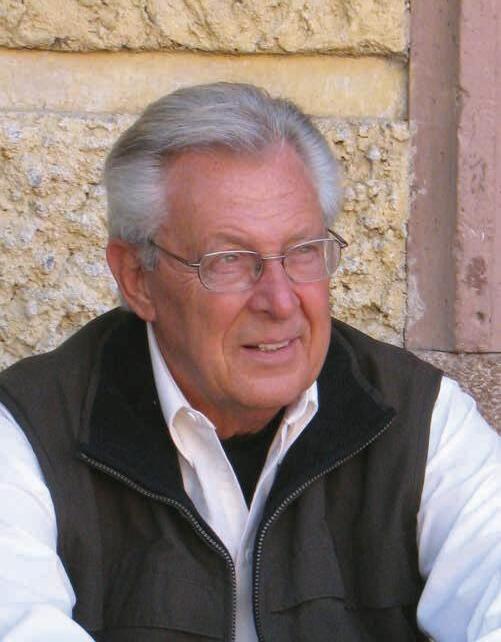
Editor’s note: This article was originally published in our BoardRoom magazine November/December 2008 issue, at the beginning of the recession. The message Dave Doherty sent to golf clubs was this: No matter what the cause of consideration to reduce your green’s budget, please don’t do it! That remains true today.
october 9th, 2008. the DoW closed down 678 91 and ended the day at 8,579 19
In recent weeks, through seminars and on-site visits I personally visited with over 200 golf courses in three countries (Mexico, Canada and the U.S), and in the U.S. I’ve been to Virginia, Nevada, California, Missouri, Kansas and Texas.
This includes visits with not only golf course superintendents but with numerous greens committees, general managers and boards of directors. Everyone is concerned with how to keep their course in top condition while having limited funds to work with and the fear that over the next year or two they may have even less money to work with
This is the third recession I’ve experienced in which clubs have faced a situation of tight monies and golf course maintenance, and the question most often asked is: Can we eliminate an aerification in the spring or fall to allow for tournaments to bring in some additional funds?
My answer is always the same. What do your physical properties say you can do?
No individual or group of individuals can predict what the weather will be over the next six to eight months and therefore without the science of physical properties to look to for an an-
swer we are gambling our most valuable asset, our greens.
Golf courses that make the decision to risk the health of their greens are risking their club’s future. I’ve been in on meetings where the common theme has been, ”Let’s do what we have been doing and stick to our existing plan” so that when this recession is over we will be in a very favorable position to acquire new members and or customers and at the same time retain as many of our present members or customers as possible. This line of thought has produced long term gains for these courses without exception
Unfortunately, I’ve also been present when the theme of thought has been, “Let’s cut everywhere” and the course
will survive. When the economy has turned around and people are spending again, courses that have let their greens deteriorate have in some cases never recovered, and years later they are spending what money they have available trying to regain the members and customers who have gone to the courses that are in better shape I mention greens as the top priority because it is the condition of our greens that our courses are measured by It is a very difficult time for all of us trying to manage our finances both in our personal and our professional lives. There are no easy answers For most people their home is their most valuable asset and for golf clubs the greens are their most valuable asset. Br


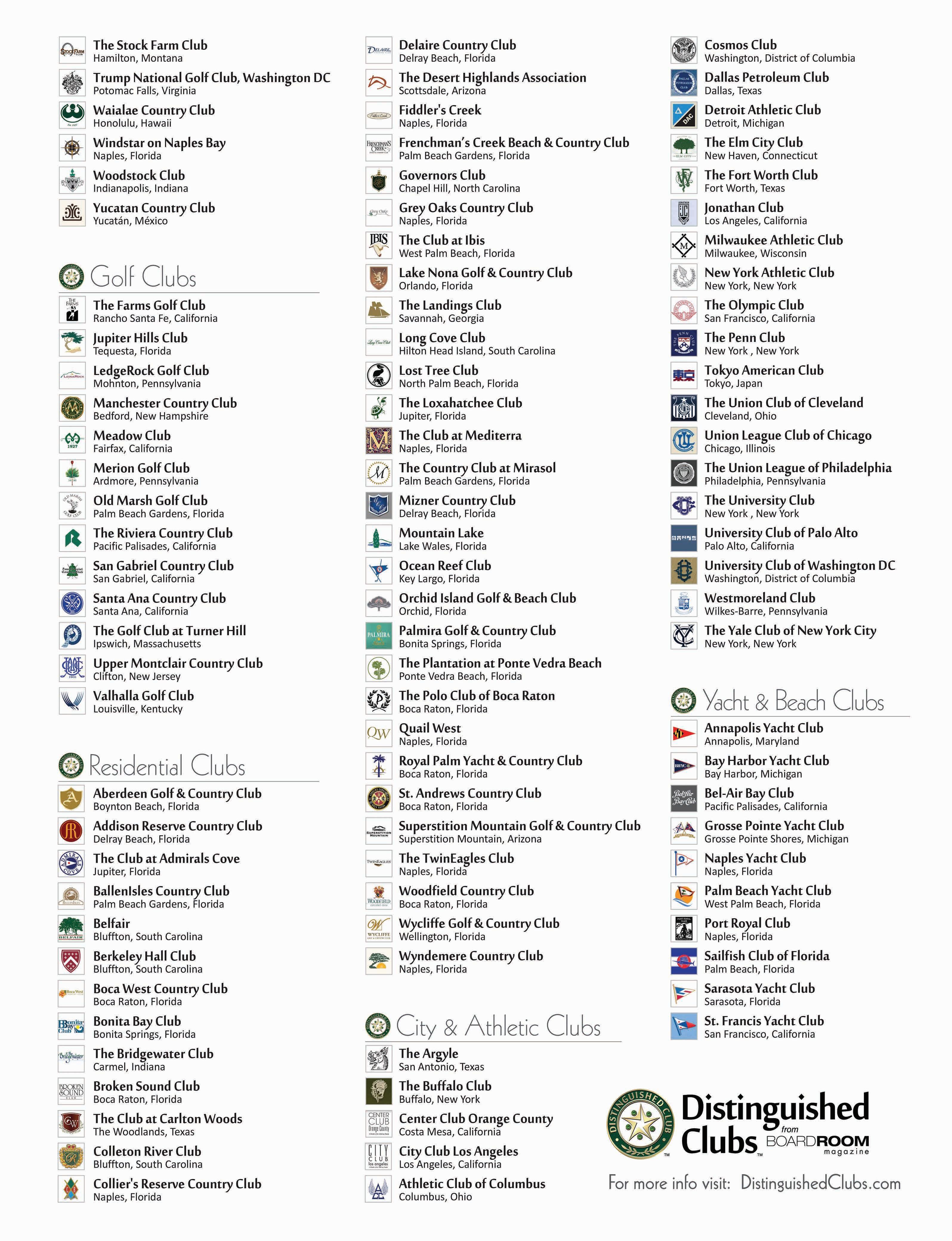
from Food for Thought | 16
the kitchen instead Catering sales staff saves time by responding to customers while on the sales call with pricing, instead of delaying their response until the chef can give them pricing.
They can also swap items in and out on the fly, making it possible to build and sell the event on the first call. In club environments, the ability to provide this level of service to
from BoardRoom Basics | 18
Most newly appointed committees in that environment don’t have the board lay out its objectives, so their good intentions as new ‘recruits’ often results in that first meeting of a newly formed committee being one where the committee chair asks, “What do we want to focus on or make our priorities in the coming years?”
The committee’s input doesn’t often align with the strategic plan, rarely considers the budget that is in place, and can often have a significant negative financial impact on club resources. It’s simply out of sync or misaligned with where the club has been going. Almost always the committee is work-
from Cover Story | 22
Has the fact that more and more PGA Professionals are becoming club managers, chief operating officers, etc., provided a stimulus for this realigned program?
“Absolutely, yes,” exclaimed PGA Chief Membership Officer Easterbrook. “As a prime example, we are quite proud that 191 PGA Members achieved general manager status in the first half of 2018.
“This reinforces the fact that PGA Members across our 41 Sections are fully embracing career development in the three career tracks and that employers also recognize the great value a member brings to their club or facility with the PGA brand
“As well, it is important for the PGA of America to constantly keep its member education curriculum on the cutting edge, to help enhance their skillsets, as well as prepare our membership for the leadership positions they are earning throughout the golf industry,” Easterbrook added.
“PGA Professionals have stretched the boundaries and redefined many key roles within the industry, and the educa-
from Executive Committee | 41
modernized at an unprecedented rate this decade so that people can choose whether they want to connect or get away.
Many successful clubs now simultaneously serve as a sanctuary for both family and work, so that people can more efficiently spend each precious day in the same space in order to keep up with the dam break of demands that flood our brains
Our annual surveys reveal that members value the staff over the amenities by a wide margin, so it’s not just about
members is especially appreciated. Finally, the ability to correctly cost and mark up the event improves the club’s ability to generate the appropriate margins
In simpler terms, the integration of a strong F&B system with a strong catering system provides clubs with the best of both worlds After all, working together to provide the best possible member experience is a mantra shared by almost every club. Shouldn’t the same apply to its systems? B r
ing with good intentions but misaligned with the plans or objectives that were put in place in the budget process.
There is no easy and quick solution for what seems to be a very common and obvious epidemic of mis-alignment. Our observations, however, suggest that most clubs don’t even think about alignment and never even talk about it.
It’s never on an agenda for discussion and therefore will never be resolved until someone makes it a priority and sets a process in stone to ensure that a process is in place to bring things into position and keep them there
As Bob Biggerstaff, past president at Grandfather Golf & Country Club once said, “It may be common sense, but it’s definitely not common practice ” B r
tion program revision supports the new opportunities we are seeing for Professionals,” expressed Broderick
“In my opinion, the most powerful impact of the realigned program is that it will appeal to ALL groups, not just Millennials, X-Gens or any specific group. It repositions the profession to be more in line with other professions. It offers immediate relevancy in a chosen track and supports the industry trend that PGA Golf Professionals can apply their skills on the course, on the lesson tee, and in the boardroom. It defines the true depth of the profession,” she added.
“The PGA of America has long held the stated goal to become an association that represents the face of all Americans It’s my hope that the story of what a golf industry career as a PGA of America member can be will resonate with every American who already has a love for the game, regardless of age, race, gender or religion,” Ibarguen intoned
“It’s going to be exciting to watch the impact this new program will have over the next several decades, not only on the PGA of America, its members and our employers, but most importantly, for the game of golf in our country.” B r
the architecture What can’t be forgotten is that it’s people who make these new investments an oasis for members, and that much of the joy derived from a private club experience is delivered by the club’s staff and leadership.
Modern-day clubs can thrive in today’s society as long as they are willing to provide a setting that encourages connection and values individuality, thereby eliminating the need to choose between pumpkin and velvet cushion. As a member, Mr. Thoreau might be pleased to learn he could actually have both. B r

“There’s no collaboration, there’s a lack of trust and mutual respect, there are secret meetings, conflicting agendas, no confidentiality, personal agendas (hidden agendas), and micromanagement of the club’s staff by board members,” intoned Gordon Welch, president of the Association of Private Clubs and Directors and a principal with BoardRoom’s educational arm, BoardRoom Institute
“It a situation where directors undermine fellow directors and management,” explained Frank Cordeiro, general manager and chief operating officer of Diablo Country Club of Danville, CA He suggests other symptoms include:
• Board involvement in personnel matters and demanding compensation data for specific employees
• When the board makes recommendations absent of credible and properly sourced data
• When a board member or members publicly discusses confidential matters.
clubhouse for hours, seven days a week ‘observing’ and/or sitting at the ‘communal table’ encouraging passers-by to ‘stop by’ and have a chat,” Patterson offered.
“These out-of-control boards have presidents or board members who want to meet the manager continually, to watch what they’re doing, and to grill them about minutia They continually comment on staff…who should stay, who should go, who should get a raise, who should be promoted and who should be demoted.
“Out of control boards talk to members at other clubs about ‘the good stuff’ the other clubs are doing, the strengths of the other club’s manager, their food service operation and their golf course, all the while looking for “stuff” they can toss in the face of their own club’s manager to dramatize how it’s being done better ‘over there ’
“They also see ‘doom and gloom’ and ‘moan and groan’ and emphasize the ‘woe is me’, but they don’t articulate, clearly, what they want done or the philosophy they want followed And then they critique the general manager be-
“D ysf unct ional boards are a direct result of t hree t hing s – improper or inadequate recr uit ment, vet t ing and t he on-boarding processes...W hile most board member s mean well and want to lead from t he hear t ( because t hey t r uly love t heir club) many director s and president s also have an agenda or a pet project. T hey ’ re so focused on t hese issues t hat t hey lose per spect ive of t he bigger pict ure. ”
Bana szak , COO T he Fount aing rove Club, Sant a Rosa, C A
• When a board member publicly opposes board decisions
• When a director is more interested in being right than doing what’s right
• When a director believes that their role as a director is to represent a constituency and portends to speak on their behalf, and makes decisions based on a member, or group of members, not the membership
• When a director or directors bring personal bias and personal agenda into the boardroom, and
• When someone lets emotion trump logic and data.
Patterson, who now consults on club governance with private club boards around the world, views many board member actions as signals.
“Out of control boards want to get ‘into the trenches’, to inspect the fridges, check out the cleaning supply storeroom, crawl through the basement, interview supervisors, discuss operations with staff, interview members while they’re eating lunch.
“These boards have out-of-work or too-little-work board members who spend hours and hours and hours sitting in the Grill ‘observing, cup of coffee in hand, wandering the
cause nothing was done to correct what they never told you needed doing!!!” Patterson lamented.
“These boards don’t tell you what they want done or why what’s been done poorly, because they have a death wish for you, the GM!”
From Ron Banaszak’s point of view, the ‘lack of purpose’ is a major symptom that surfaces. The strategic plan does describe or define the culture of the club or the club’s purpose, “but boards are making out of control decisions without a purpose or without the facts they need to make a quality decision. It happens when boards lead from ‘what they think is best’ and not from what the facts and figures say,” Banaszak opined.
For Banaszak, chief operating officer of The Fountaingrove Club in Santa Rosa, CA this means, “The strategic plans are not in sync with the operating and capital plans There are too few metrics or lead/lag indicators that tell the story of what is being done to achieve the goals and objectives set forth by the board.
“Goals and metrics, if documented at all, needs to be directly linked to specific line items in the strategic plan,”
Banaszak added. And at many clubs, declining membership numbers tell the story “because members won’t stay with the club if they don’t believe in and support their leadership.”
Lack of trust, lack of communication, fear and the pushing of personal agendas often cause dysfunctional boards, but there are other causes.
“Dysfunctional boards are a direct result of three things – improper or inadequate recruitment, vetting and the on-boarding processes. There’s a lack of ‘connection’ with board and committee members, which prevents the club from creating a healthy and sustainable culture,” Banaszak said.
“While most board members mean well and want to lead from the heart (because they truly love their club) many directors and presidents also have an agenda or a pet project They’re so focused on these issues that they lose perspective of the bigger picture. They should be thinking strategy, not tactical thinking ”
For DeLozier, the root of the problem “is typically, the absence of a comprehensive strategic plan under which all board members are working
“In the absence of a clear path forward, board members make their own way. Lacking a plan, ineffective – seeking to be popular – leadership enables disjointed action and confusion Members align with the board member who best represents their own viewpoint. This leads to factionalization within the club,” DeLozier added
Vain is of the opinion that “board don’t set out to fail. It happens more from ‘group-think’ or a failure to recognize the wisdom of the membership. Life Is a negotiation, yet many boards see it as a dictatorship. Yes, they are volunteering and putting in the time, and most times they are correct, but they fail to close the deal for a lack of political leadership.
“In this time when the club world is bifurcating into winners and losers, a dysfunctional board can cause out-
right failure Many clubs put more effort into their member screening process than they do for their board selection process. Yet, one misaligned member among 500 or more tends to have little impact A recalcitrant board member, one of only nine or 12, can really set the club back,” he observed.
“It’s often the case that the wrong people get on the board they arrive with a hidden agenda, no governance experiences and see the club as a toy to play with and/or they have a combative-for-no-reason personality, wanting to knock down the general manager a peg or two to prove they are the ‘big cheese.’” offered Patterson.
“Often the GM isn’t a good manager of operations and board members will step in to fill the holes left by a lessthan-super competent GM, or the GM lacks people skills and the ability to talk in a reasoned way about issues, to debate with offense, to soothe concerns to counter misconceptions to cultivate warm relationships and create the ‘emotional cement’ that welds people to people and people to place,” Patterson injected.
“Board members ‘stray’ when they haven’t been properly educated in club governance…they’ve not been told by the president that the board creates policy with input from the GM and the GM administers these policies efficiently with input from the board.”
Regardless “the effects of a dysfunctional board run deep,” said APCD’s Welch
“The club becomes dysfunctional and the membership will mirror the board. There will be a split, lack of trust, gossip and intolerance Staff will be caught in the middle and no one will be a happy user. The club experience will change, and sales and usage could drop,” he added On this, there’s agreement
“Dysfunctional boards can do lots of damage to a club, quickly,” Patterson pronounced. “They can bulldoze the manager and ship him or her ‘out the door’ for the flimsiest of reasons
“Out of control boards can adopt a “top down” governance system that contradicts the “bottom-up” thinking of the membership. They can make staff lives miserable and encourage their leaving They can introduce policies and practices that members don’t want, don’t need and don’t want to pay for. They can foster terrible member and employee morale They can invest in areas that don’t need investment and neglect areas that do need that investment.
“Out of control boards can do lots of long-term damage, quickly Brakes are needed…,” Patterson advocated.
So, are there ways to put on the brakes ways to stop a board that’s spiraling out of control?
Generally, no, in the opinion of GM Cordeiro. “Ultimately, dysfunctional boards lead to short term thinking, directional changes every three years (if you don’t know where you are going, any road will take you there), poor decision making, gridlock, low member and staff morale, lack of accountability, lack of direction and inadequate resources, all of which often lead to frequent COO/CEO turnover, a transition to a management company, a sale or dissolution,” Cordeiro intimated.
“Reactive measures to address a board that is spiraling out of control are seldom successful Effectively, once the spiraling begins, it’s too late.
“Poor decisions at the board level are often irreversible. Poor decisions can lead to loss of key personnel, deteriorating assets, lawsuits and worse. Out of control boards will inevitably result in irreversible decisions that put the club’s very existence and survivability at risk,” Cordeiro lamented
Others feel the death spiral can be stopped and offer these solutions.
“If the board has a strong leader, I’d suggest a mandatory retreat to build trust, clear the air and “reset” the board,” recommended Gordon Welch. “For the club to function properly and provide the desired member ➤
experience the trust and functionality begins at the board level The board must air out any indecision and regroup to come to the common core of the organizational mission.”
“Absolutely. First, seek member input,” suggested the McMahon Group President, Frank Vain.
“It is their club and the existing customer base They own it and have wisdom. They are also more likely to accept whatever agenda the board is promoting if they had a hand in creating it.
“Secondly, enroll your most committed members, committee members This group is often an untapped resource. They have volunteered their time and signaled a willingness to work, but they are often kept in silos from one another and can develop their own agenda,” he added
“The leadership must start the year by explaining the club’s vision and key issues to this group, outlining ways in which the committee members can support this agenda. When com-
“Clubs needs to make sure the right members are chosen for board service. The vetting process must be formalized … and a process whereby ‘board candidates will be selected by a nominating committee consisting of past presidents’ should be adopted,” Patterson suggested
“A governance education, including everything from bylaw, house rules, an orientation to operations and governance policies need to be discussed and re-affirmed every year, should be mandatory at the start of each administrative year for all committee and all board members.”
Patterson also recommended that “board thinking and proposed actions need to be publicized frequently and members need to be told lots, early and often in writing
In Patterson’s opinion, “the general manager must become the ‘go to’ professional for advice and insight into policies and procedures – the mentor to the board and for committee members who are participating in the policymaking practices of the club
“Most clubs have moved away from contested elections, using the slate method instead...It relies on the nominating committee to establish criteria for what makes a great director, to evaluate the club’s strateg y and current board composition to identify needed sk ill sets, inter v iew candidates to af f irm their willingness and temperament to ser ve and communicate the rationale behind their selection to the membership. This is how you form a board that has the sk ills and attitude it needs to lead ef fectively.”
mittees can develop their own agenda of issues, they bring off-plan ideas to the board, which doesn’t support them. This ramps up the frustration level and drives the board into a bunker mentality. The board really needs to practice servant leadership instead of becoming a dictatorship,” Vain said.
“Several tools are needed to stop a leadership death spiral,” commented DeLozier “First, the club must develop and use a strategic plan that expresses vision, aspiration and financial discipline. Secondly, every board should adopt a thorough board policies manual.
“A BPM is effective at establishing standards of members’ expectations for the club’s governance. The BPM becomes a promise made by the board to govern responsibly. Third, the board should adopt and enforce strict corporate-type disciplines for the boardroom to ensure that members can trust their board and board members,” DeLozier added.
And what’s a club to do for long term success?
Patterson, the retired GM, says, “There are lots of ways to put the brakes on out-of-control boards, and to foster a long-term, highly-effective governance system that nourishes a healthy and evermore vibrant club culture.
“The general manager needs to provide operational analyses that explaining the monthly variance report, analyzing why things are and are not as they should be ‘budget-wise ’
“The general manager needs to be ‘The Loyal Opposition’, to respectfully represent ‘the other side’ in every issue that arises at the Board level to ensure that both sides of every issue are properly considered,” Patterson recommended.
Banaszak and Welch agree with establishing a process to develop a healthy board of directors.
“A process should be in place to help make sure members of the board have a fit, both personally and intellectually. Board members should be vetted and should apply for the job. It Is a job - a responsibility, not an ego trip. Board members should also realize that the job is serious,” opined Welch
“Have a dedicated nominating committee that nominates the same number of candidates for the number of vacancies on the board. Members should always be able to petition the process and be able to get on the ballot, but the nominating committee should be only placing quality candidates that can assist the club with its strategic plan,” Banaszak added.
Vain, who has watched clubs across the country struggle with their governance process, agrees. “The most important initial step is to have a great process for identifying, grooming and selecting board members
“Most clubs have moved away from contested elections, using the slate method instead. This is critical. It relies on the nominating committee to establish criteria for what makes a great director, to evaluate the club’s strategy and current board composition to identify needed skill sets, interview candidates to affirm their willingness and temperament to serve and communicate the rationale behind their selection to the membership. This is how you form a board that has the skills and attitude it needs to lead effectively,” Vain added
Once the right folks are chosen, “They need to develop a strategic plan,” Vain said.
“It’s essential that there be clarity around why the club exists and what it strives to become Some might see this as wonky stuff espoused by management gurus, especially entrepreneurs who often make up a good portion of country club boards, but it works.
“The lack of a clear sense of purpose and direction is the key weakness for member-owned clubs It’s why they wobble from personal agenda to personal agenda each year rather than making consistent progress toward a known goal Once there is a plan, it is important to act on it As the great General Patton said, ‘A good plan, violently executed now, is better than a perfect plan next week.’”
And there must be a collaborative effort with the club’s management
“Boards must partner with management and run a strategic management process. Most boards are too deep into operations and they have inadequate focus on their key responsibilities: strategy, retaining and attracting new members and managing capital replacement and development,” Vain concluded.
“Guiding club governance is the GM’s responsibility,” injected Patterson. “They’re the professionals, they know the club business and they have a love for The Biz ”
pUblISHeR’S fINal tHoUgHtS
Collaborative governance should be the focus today for private clubs meaning that the club’s board of directors establishes policy, sets goals and the strategic direction while leaving the club’s day-to-day operation to the club’s executive officers, including the general manager/chief operating officer.
While many boards handle their responsibilities without any difficulty, to reiterate, out of control boards and board members often neglect their fiduciary duties, creating dysfunctional organizations. Often these difficulties are created by toxic board members, who:
• Hog every conversation or refuse to participate
• Are negative about everything
• Have an personal agenda
• Attempt to micromanage the general manager
• Want to spend too much money, or they are scrooges who don’t want to spend.
• Don’t handle confidential information securely
• Expect special consideration for their family
• Think they are the smartest person in the room and show distain for other peoples’ opinions, or who
• Want all funds to go to golf course and not the club house or vice versa
It’s imperative the club’s board president deal with these problems quickly and effectively, before greater chaos is created
A private club’s bylaws should include standards of conduct for the board, their duties and expectations, and a club’s bylaws should also address what type of vote will be required to remove a rogue board member
The fact is, your club deserves to have an inspired board of directors that works smoothly to promote the club’s mission and strategic plan for the betterment of the club and the member experience
At least, that’s the way I see it B r
John G. Fornaro, publisher\


Christopher Boettcher, CCM, CCE is general manager/COO of The Beach Club of Santa Monica, California Chris can be reached via email: Christopher@TheBC com
the state of clubs has been good this year. I see capital spending and depreciation concerns part of board room discussions. I see funding being taken seriously and future planning making a difference a strong economy has helped a lot even tiger Woods is back on top!
What’s happening?
As a club manager I’d like to say it’s because of good management practices, but we cannot take all the credit. Members have been very involved in their clubs they belong to, and from across the country I hear my colleagues commenting on how strongly involved their committees are and how much the board and governors care.
No, they’re not micromanaging the facilities or driving the bus in the board rooms, but what I mean is that they really do care. They want the traditions to continue and the club culture to survive, and this is the time solidify them into the future while clubs remain strong.
What’s causing it? Another good question
Certainly the stock market is huge. The top percentage of our country’s industry leaders are our private club members. We’re insulated, to an extent, from the economic woes of less wealthy businesses
I remember working at a very old-line club during the last recession and being so grateful that there were still dues increases, salary increases and maintenance going on. Not all clubs had that luxury But overall, most clubs are doing really well now because of our economy
It’s created some insulation for most clubs and high-end resort operations, and it doesn’t matter what your political or social drivers are Good stewardship of our business is a result of good management and strong funding in our sector. As a servant to this industry, I’m determined to make sure it’s well guarded. Grateful for the past and measured resolve for a strong future.
What’s can you do?
Keep up the good work! It’s been a good year so far. I had the honor to work with a great board member who oversaw the golf course committee once, and his favorite thing
to say to the superintendent after each and every one of their meetings was: “Don’t {bleep} it up.” That’s right: stick to the road here Be grateful as a board member to ride these good times Keep inside the lines
• Keep the focus on the vision: There are many distractions as a leader or member of the club board and governing body from whining members that really represent the tail-wagging-the-dog, to the sacred cow employee who doesn’t really represent the whole employee community. Be careful who you listen to and support and who you should be in close communication with. Keep that mission, vision and the club values in mind.
• Be a good coach: your manager needs the support of their board members Coach and nudge them as they need, or you need There’s nothing more deflating than to feel like you’re on an island when you’re trying to manage a team and your board is knocking you down for something.
Coaching your manager and supporting their endeavors speaks volumes Micromanaging the food cost for example or overanalyzing the labor cost at the pool are fools’ errands for board members. Coach your manager to watch what is important while keeping you informed
• Be a strong decision maker: When it comes to decisiveness, the boards have the authority to set the standard. But here’s where the culture comes into play. Don’t make decisions based on innuendo or mis-information Take the time to be decisive Send issues to committee for study or work Don’t make decisions on important issues if they have never been raised before. And for gosh sakes, keep you manager involved in the decisions
Leading a club through good times, and tough times, always has its moments. Good culturally-based governance while honoring the traditions of the club and the games you play, are the guiding lights for us in our special business I’m grateful to be part of it
So here’s to another year ahead - lead on! B r


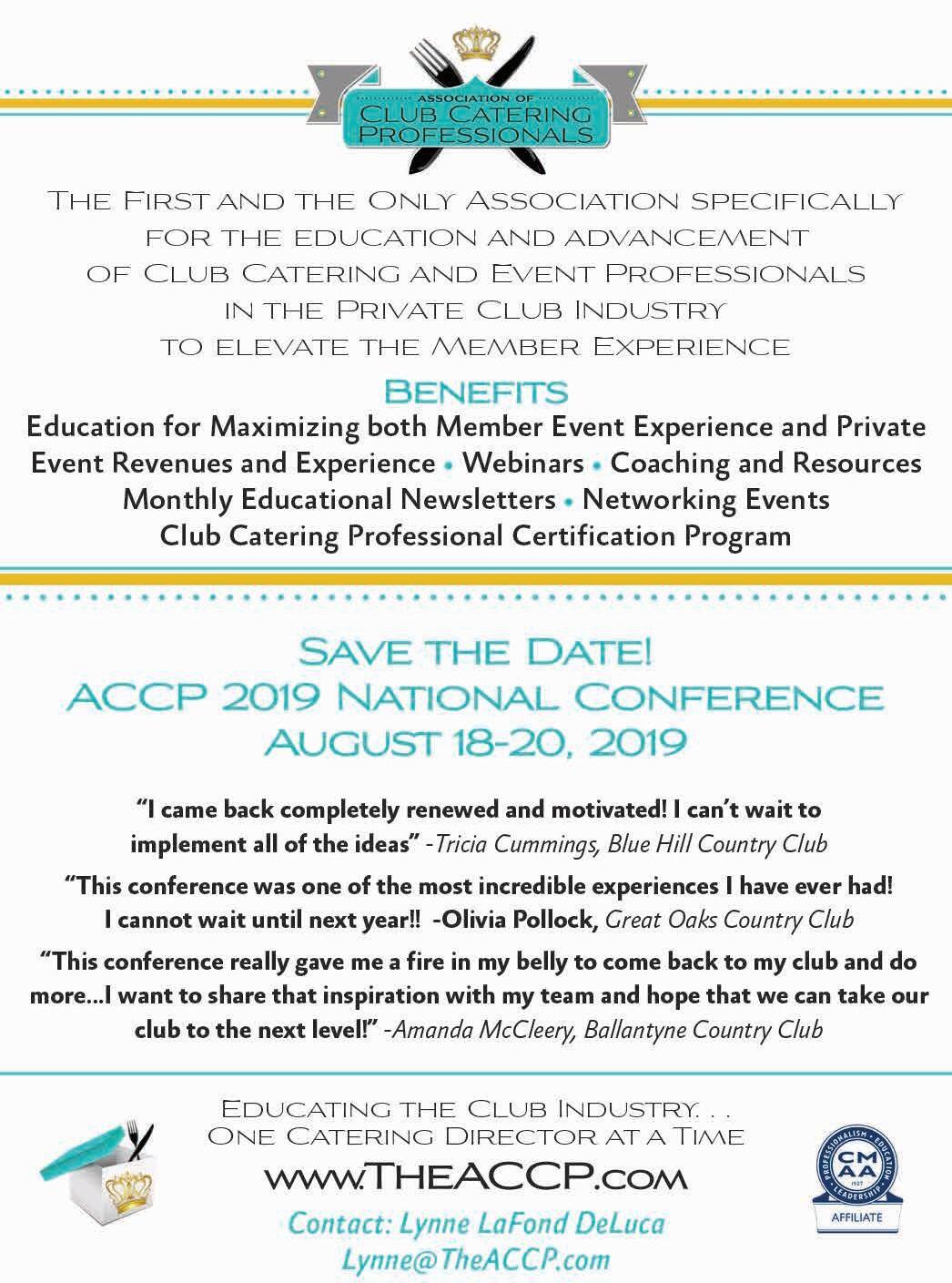



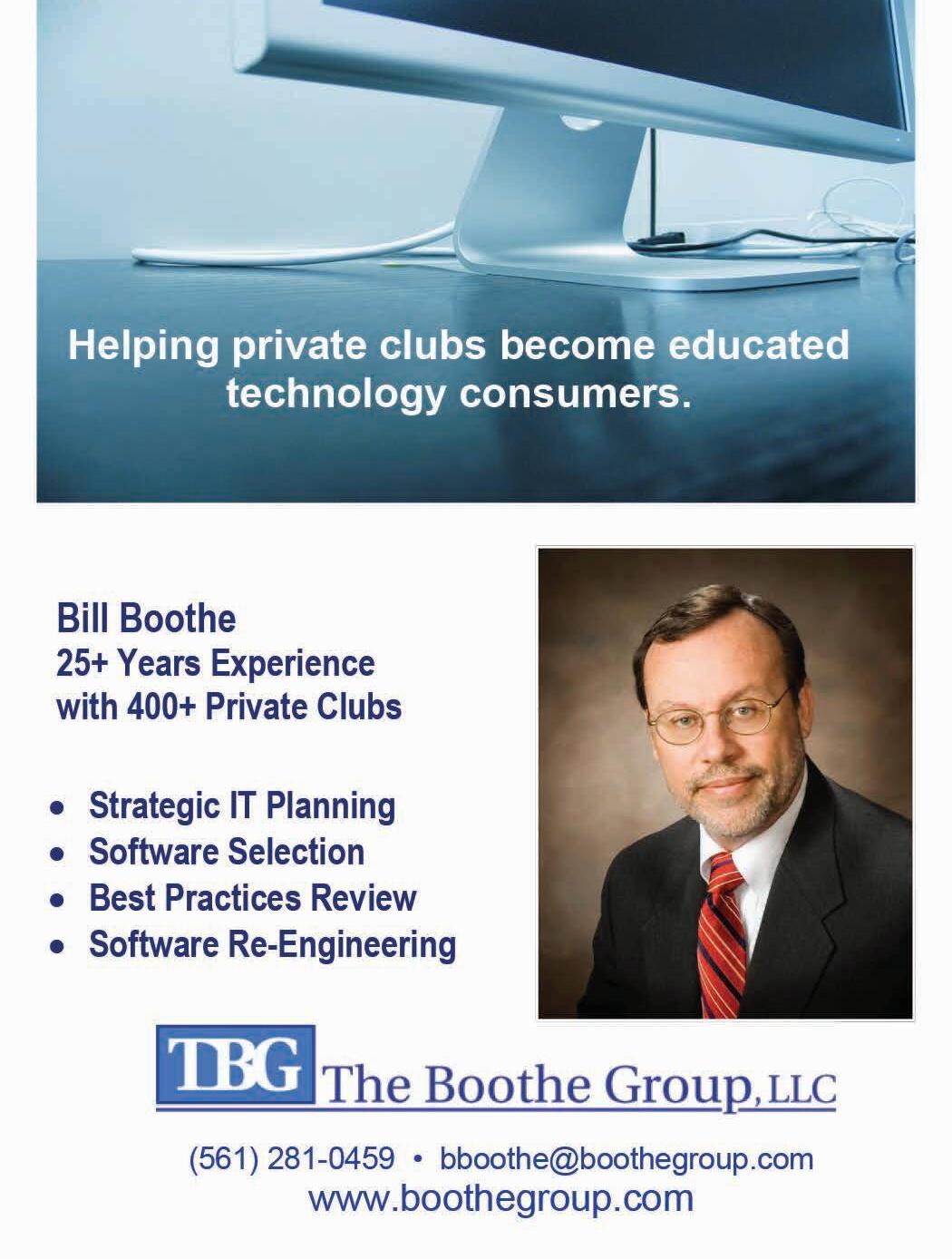




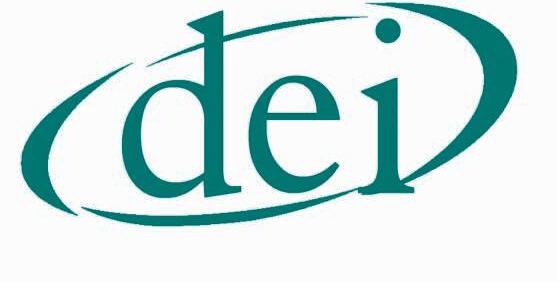


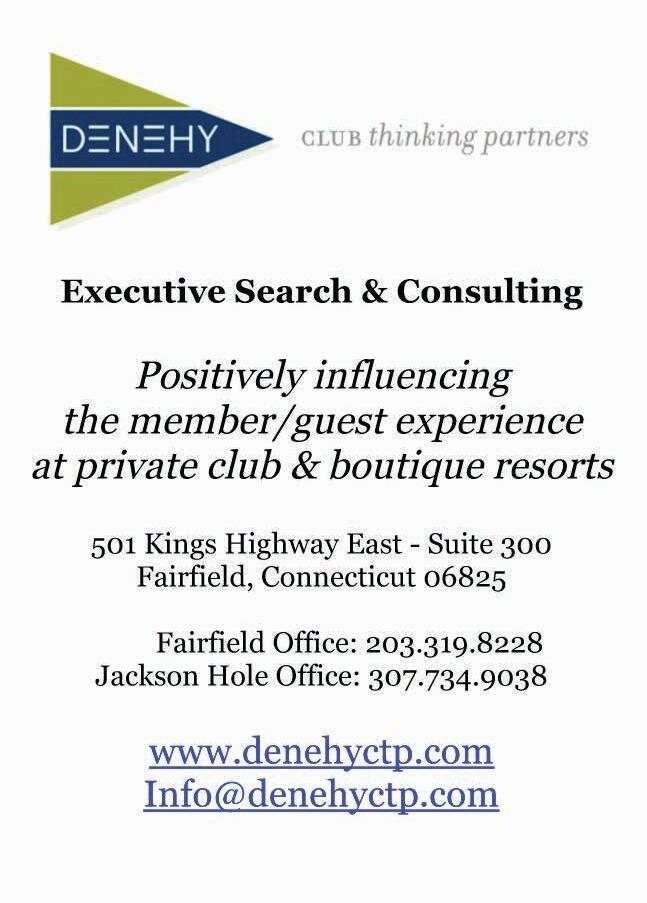



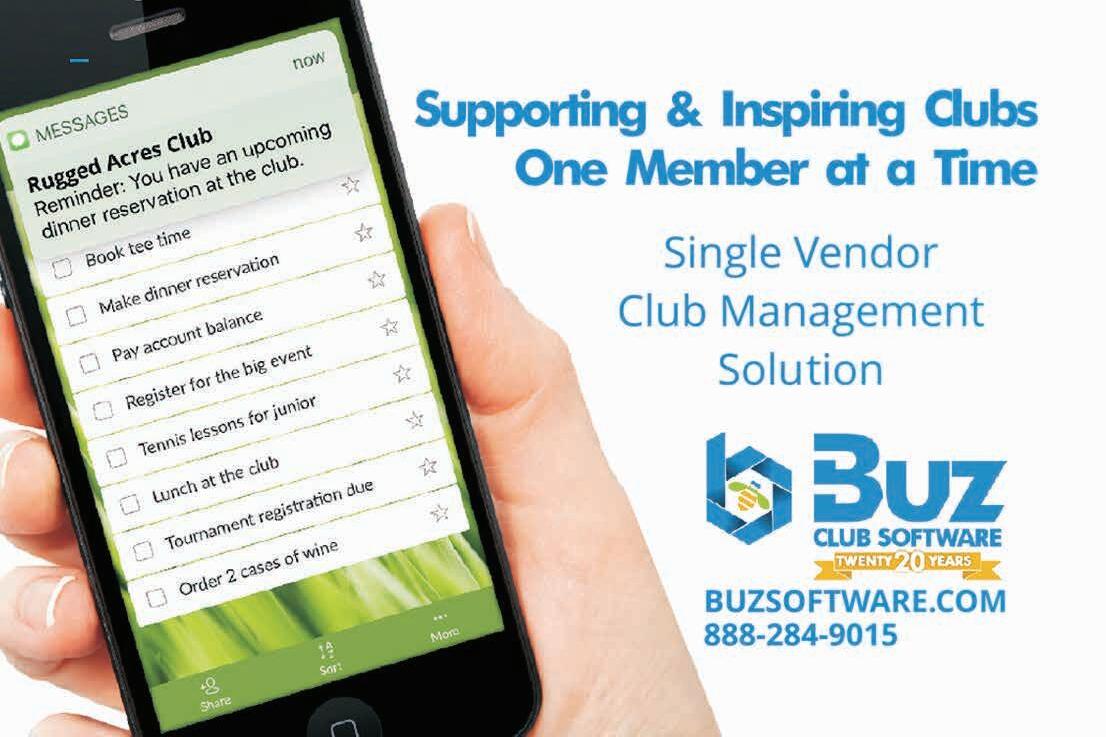
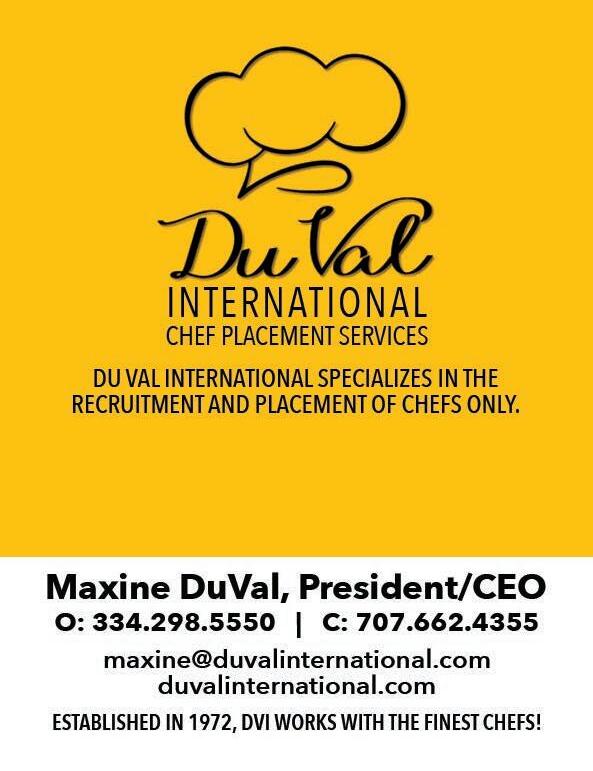









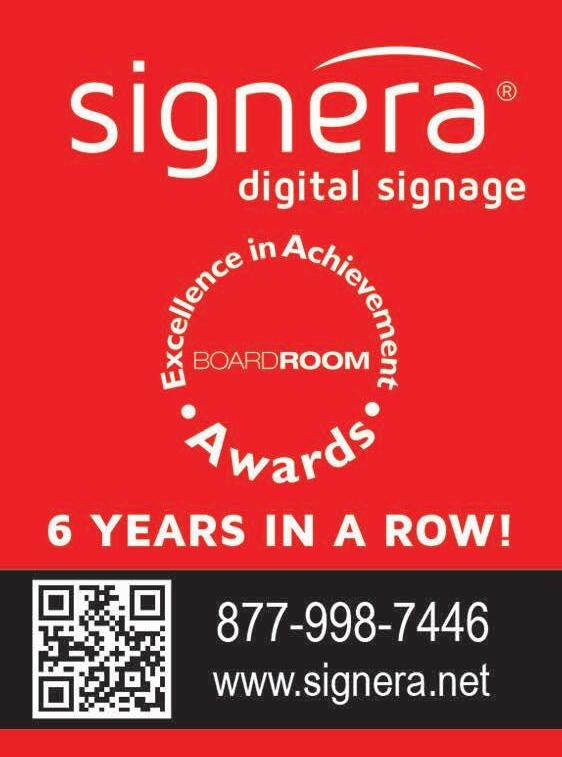















CoUNtRY ClUb INDex
Ron Banaszak, chief operating officer, The Fountaingrove Club, Santa Rosa, CA
Chris Boettcher, CCM, CCE, GM/COO, The Beach Club, Santa Monica, CA
Frank Cordeiro, GM/COO, Diablo Country Club of Danville, CA
Rob DeMore, president of Troon Privé, the private club division of Troon
Chris Hull, GM/COO, Alpine Country Club in Demarest, NJ
Dr Bonnie Knutson, the Country Club of Lansing and the Michigan Athletic Club
David Lacey, member of Philadelphia Cricket Club, Philadelphia, PA
John Lyngaas, chair, Grey Oaks Country Club, Naples, FL
Alex Lee, executive chef, Alpine Country Club in Demarest, NJ
Nancy Levenburg, member, Spring Lake Country Club, Spring Lake, MI
Michael Nyerges, clubhouse manager, Fiddler’s Elbow Country Club, Bedminster, NJ
Gregg Patterson, president, Tribal Magic, member, The Beach Club of Santa Monica, CA
Christian Potthoff, GM, Belle Haven Country Club, Alexandria, VA
Mark Sabine, president, Mission Viejo Country Club, Mission Viejo, CA
Rosie Slocum, MCMP, dir of membership, BallenIsles Country Club, Palm Beach Gardens, FL
Judith Stant, president, Collier’s Reserve Country Club, Naples, FL
Michael Stott, GM, Grey Oaks Country Club, Naples, FL
John Lyngaas, chair, Grey Oaks Country Club, Naples, FL
Joseph J Thomas, president, Belle Haven Country Club, Alexandria, VA
Steve Vlahos, GM, Mission Viejo Country Club, Mission Viejo, CA
Nicholas von Hofen, GM, Collier’s Reserve Country Club, Naples, FL
Courtney Wetzel, clubhouse manager, Riverside Yacht Club in Riverside,CT

